The next leg of our 3 week campervan trip around Tasmania in December 2022, a little deeper into the slightly less popular regions from the west to the south. We made stops at Zeehan, Queenstown, Franklin-Gordon Wild Rivers National Park, Mount Field National Park, New Norfolk, Franklin, Geeveston, Hastings Caves State Reserve and a couple other places along the way. Here are the highlights from our week on this stretch!
After about a week and a half checking out the more well-known attractions in Tasmania along the East, North and around Cradle Mountain, it was time for us to start on the less well-known side of the lap around Tasmania, from West to South. Crowds were thinner, but there were still plenty of surprises here. Our most expensive stop on this stretch was the West Coast Wilderness Railway, a cute and novel experience, but my favourite has to be Mount Field National Park, with its lush forests, beautiful waterfalls, and the campground just by the edge of the forest. Here’s a 4 minute video summary of this stretch of our campervan trip from West to South:
6 days from West to South Tasmania
- Day 1
- Zeehan
- Spray Tunnel
- Queenstown
- Queenstown Cabin & Tourist Park
- Day 2
- West Coat Wilderness Railway
- Iron Blow Lookout
- Franklin-Gordon Wild Rivers National Park
- Nelson Falls
- Donaghys Hill
- Franklin River Nature Trail
- Lake St Clair
- Day 3
- Westerway Raspberry Farm
- Mount Field Campground
- Day 4
- Mount Field National Park
- Lady Barron Falls
- Tall Trees
- Horseshoe Falls
- Russel Falls
- Night Spotting
- Mount Field National Park
- Day 5
- Salmon Ponds and the Museum of Trout Fishing
- New Norfolk
- Willie Smith’s Apple Shed
- The Franklin Lockup
- Franklin Camping Ground
- Day 6
- The Wooden Boat Centre
- Frank’s Cider House and Café
- Geeveston
- Hastings Caves and Thermal Springs
- Southport Hotel & Caravan Park
Day 1 – Cradle Mountain to Queenstown
After 2 breathtaking days at Cradle Mountain, we continued on our lap around Tasmania, heading towards the former mining towns of Zeehan and Queenstown. Roads and towns grew quieter as we approached the western coast.
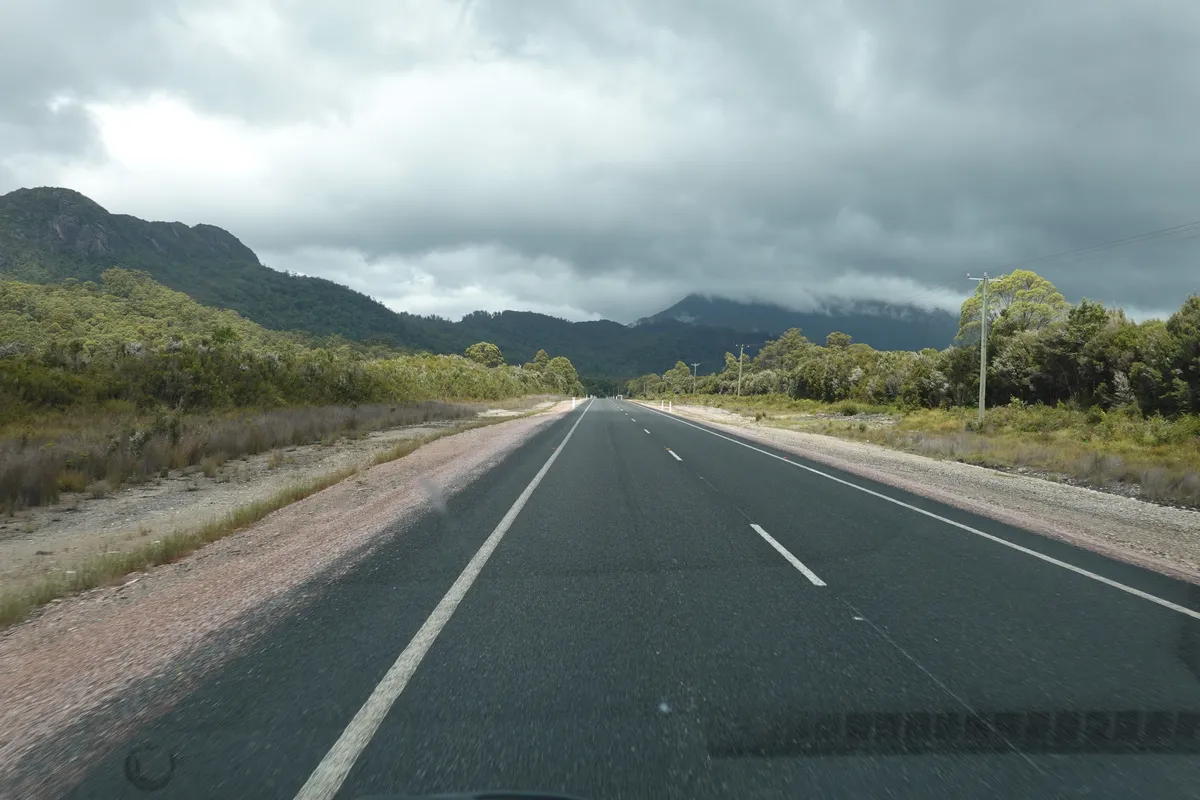
Zeehan
We stopped by Zeehan for a snack and stretch about an hour after we left Cradle Mountain. With the neat main street lined with pastel coloured buildings from the early 20th century, it felt like we stepped right onto a Wes Anderson set. Zeehan‘s population has dwindled to less than 10% of its peak since the mining decline, and the deserted streets contributed to the vibe. Here’s a quick look around town.

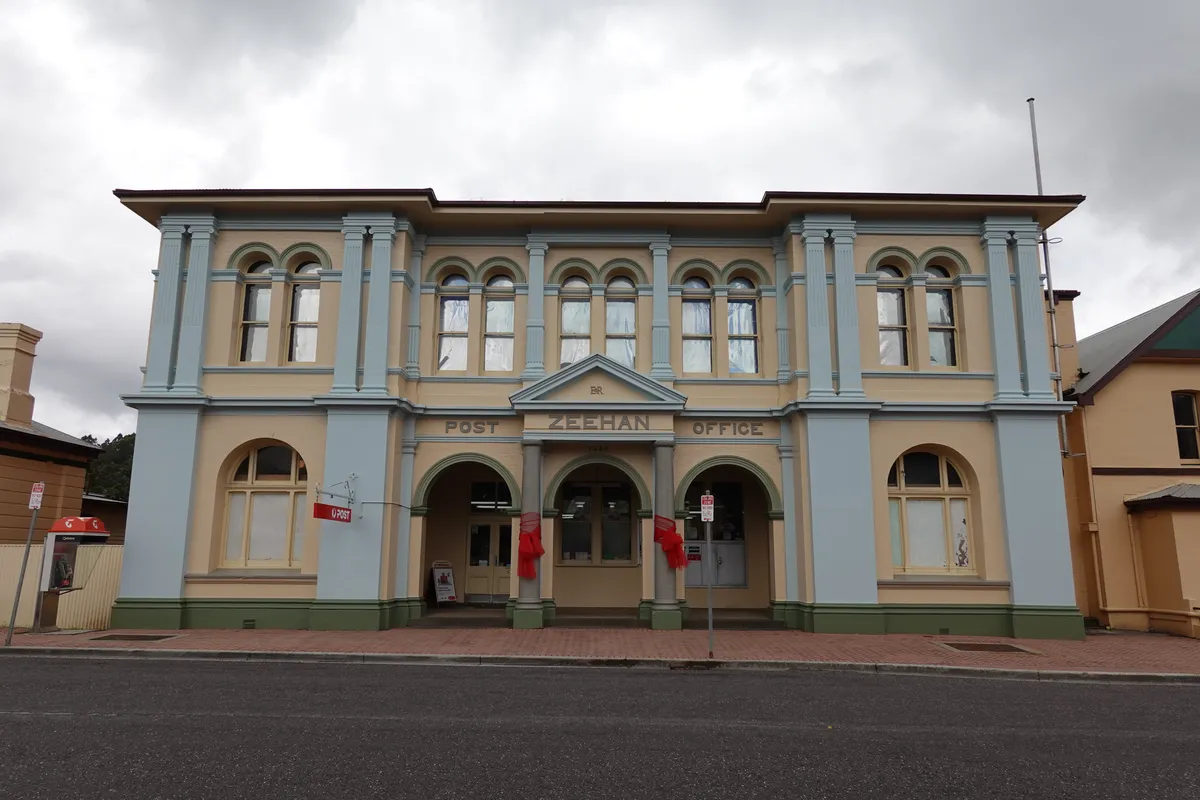


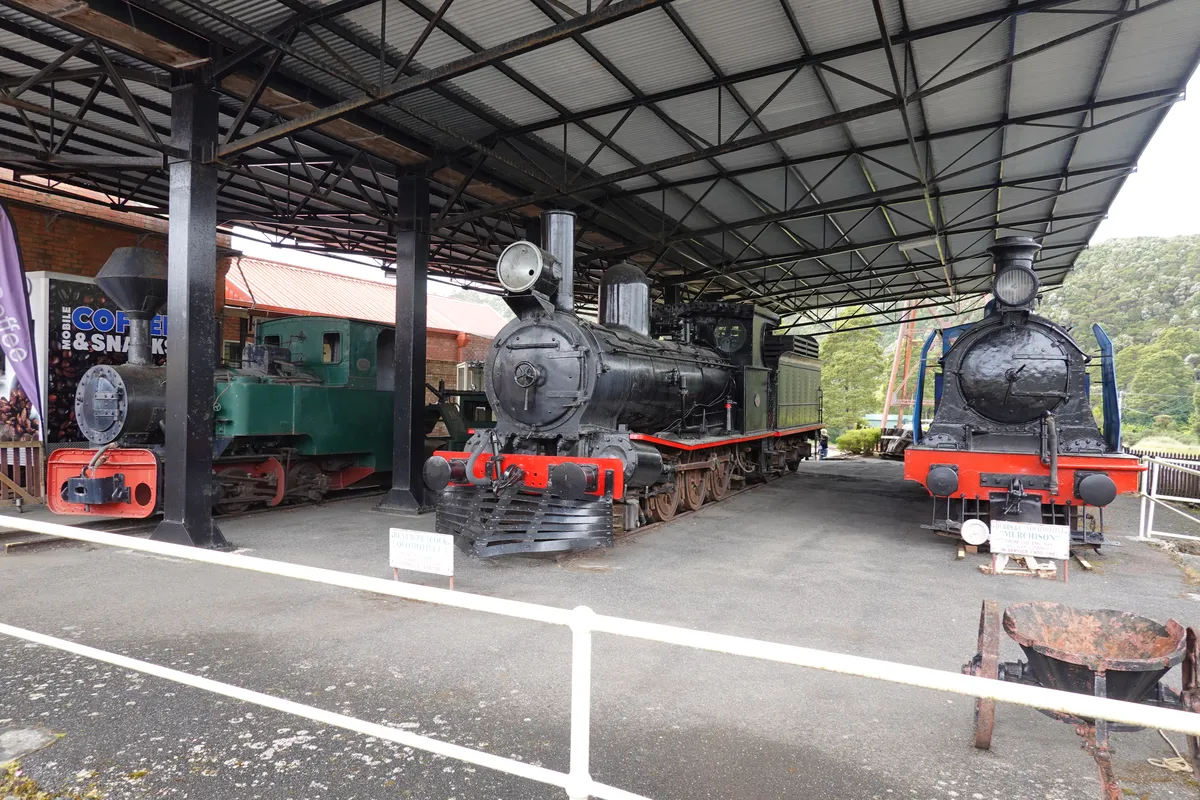
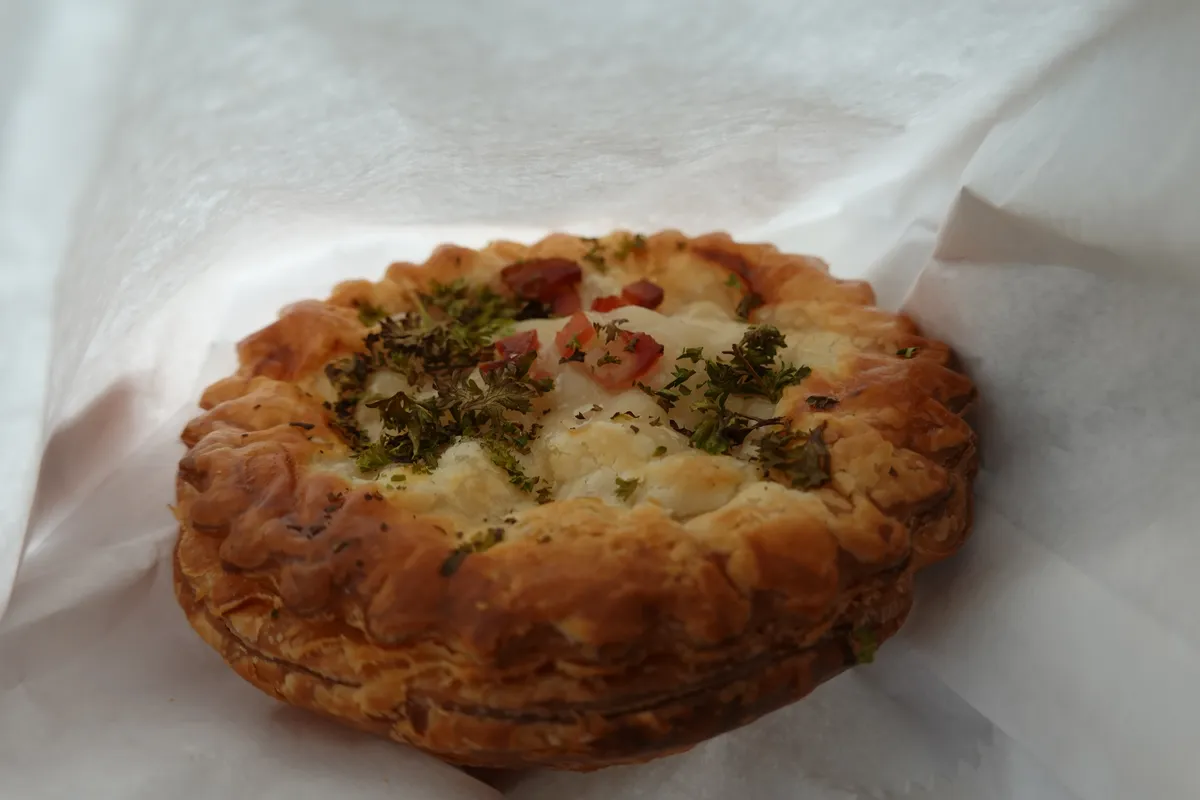
Spray Tunnel
The route from Zeehan to the Spray Tunnel was almost treacherous for our camper. Leaving the comfort of well-paved main roads, we had to first cross a golf course, then go off-road on a single lane dirt track to cut across the forests and reach the Spray Tunnel. We prayed hard to not have to meet another vehicle along the way, and were fortunate to have encountered just one 4wd heading in the opposite direction, who graciously reversed and squeezed to the side for us to pass. Fortunately, there was a wide, paved carpark at the end of the road, next to the Spray Tunnel.
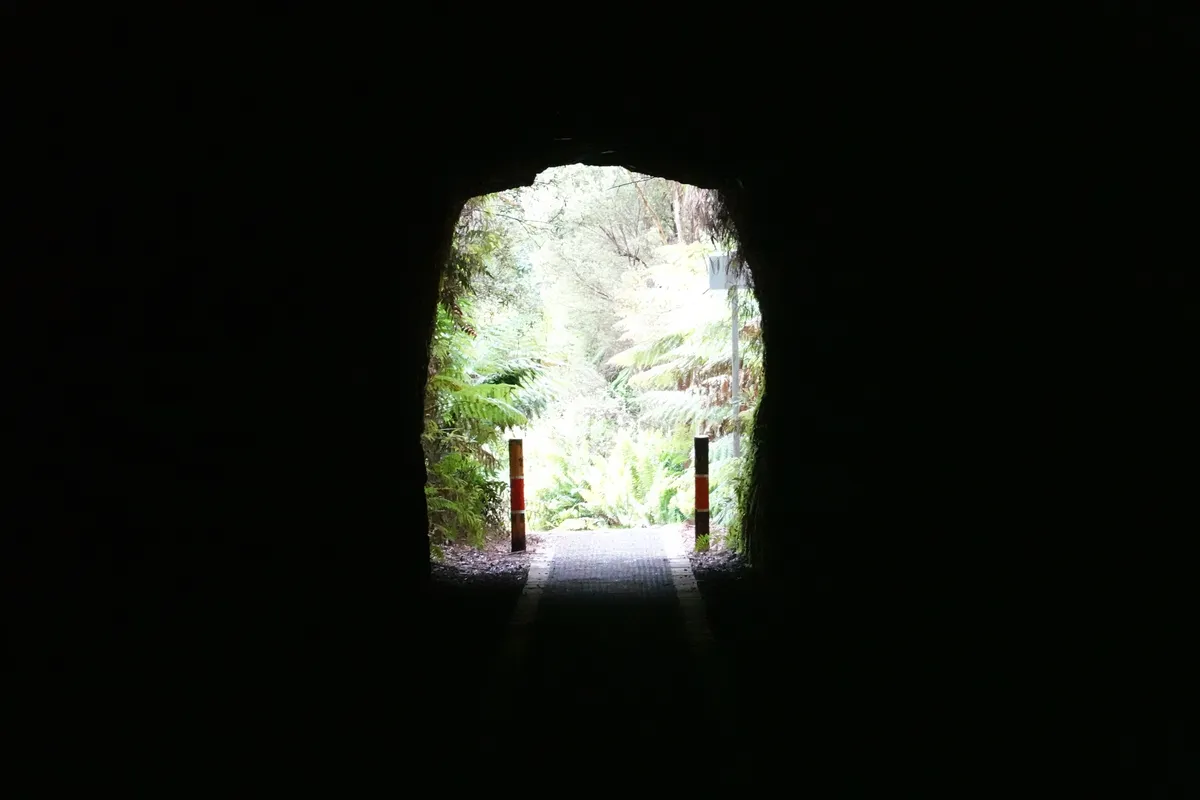
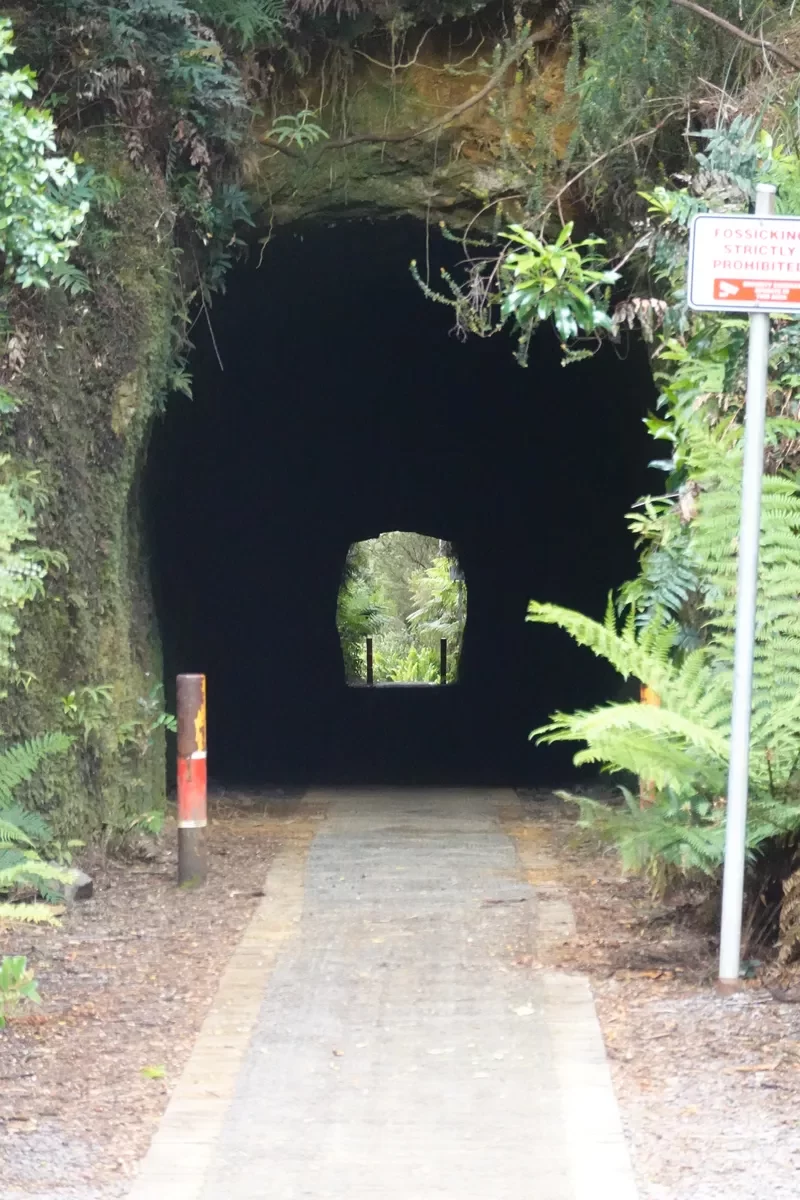

The Spray Tunnel is an abandoned railway tunnel that was part of the former silver mining operations. We were looking forward to the glowworms that are said to adorn the dark and damp tunnel, but unfortunately did not spot any that day. Nonetheless it was an interesting walk through the tunnel to more trails on the other side. A handful of mining artefacts and information boards shed some light on the history of mining in the area. Overall an interesting visit, but in my opinion if you’re pressed for time and have to miss this, you wouldn’t be missing too much.
Queenstown
About another hour from Zeehan, we arrived at Queenstown, our stop for the night. Like Zeehan, Queenstown is a former mining town that had seen better days. However, Queenstown appeared to have enjoyed better success in turning its fortunes around and becoming a major tourist stop in Tasmania. With its charming old streets and surrounding mountains and rivers, Queenstown was a lovely place to visit. The peacefulness and surrounding nature at Queenstown almost hides the fact that decades of mining has left a devastating impact on the environment and continues to impact the surroundings and its community today, despite mitigation measures being put in place.
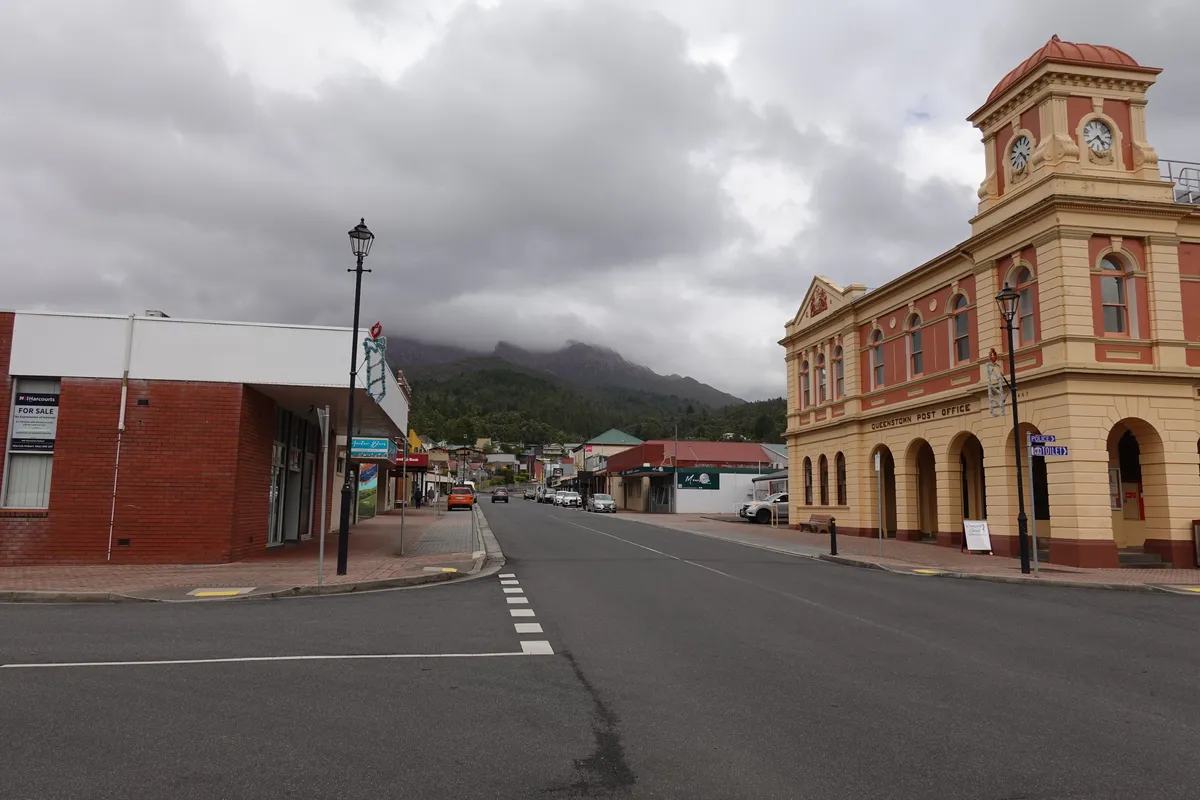

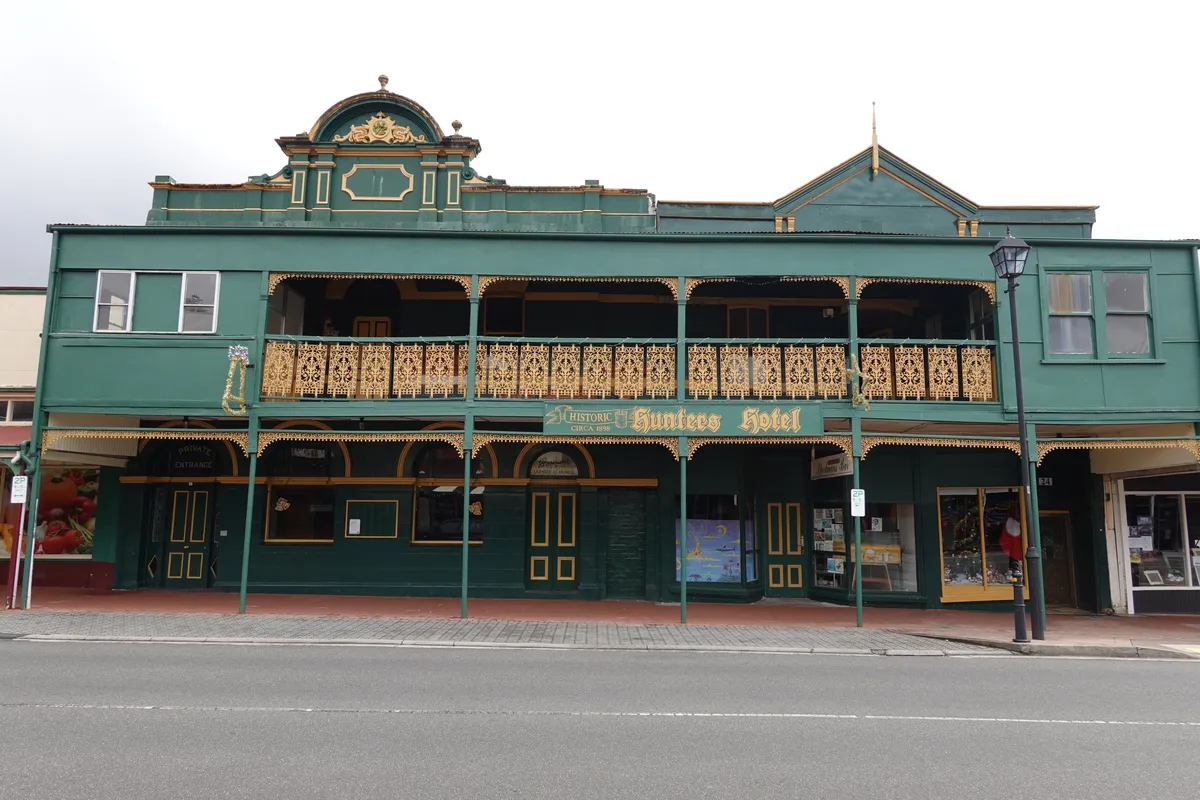
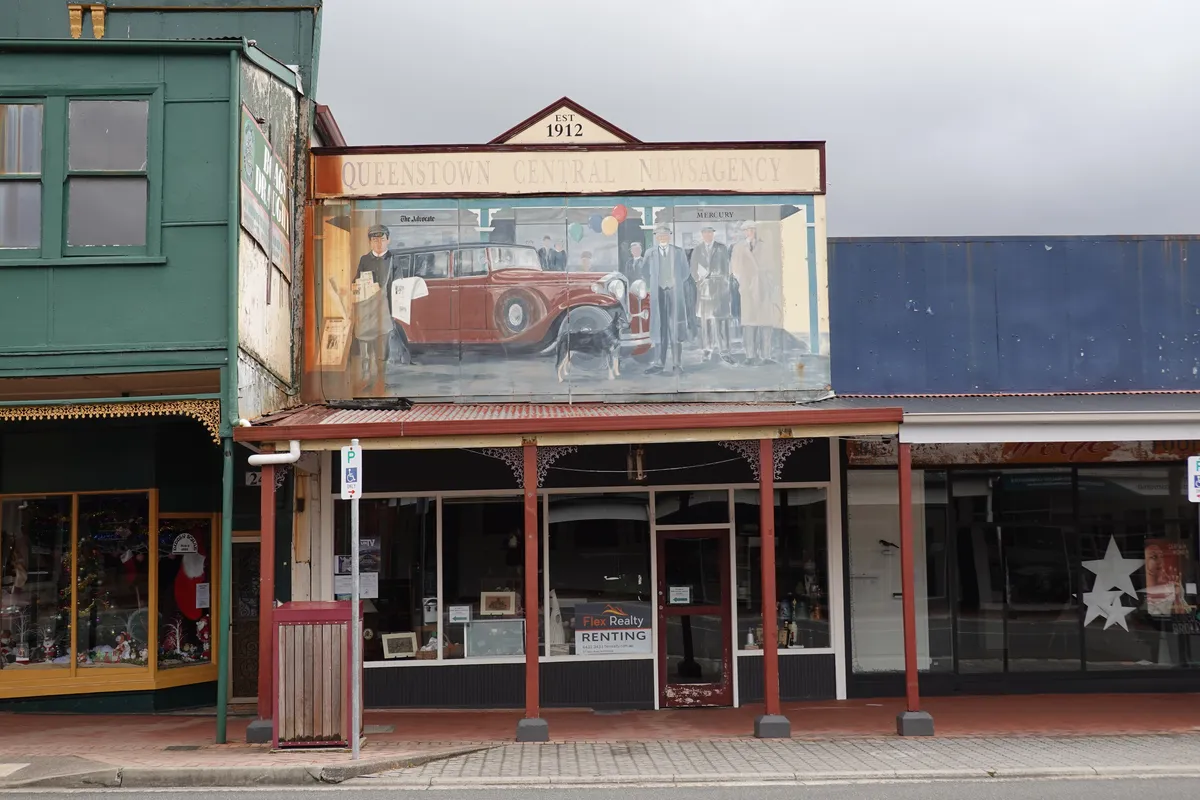
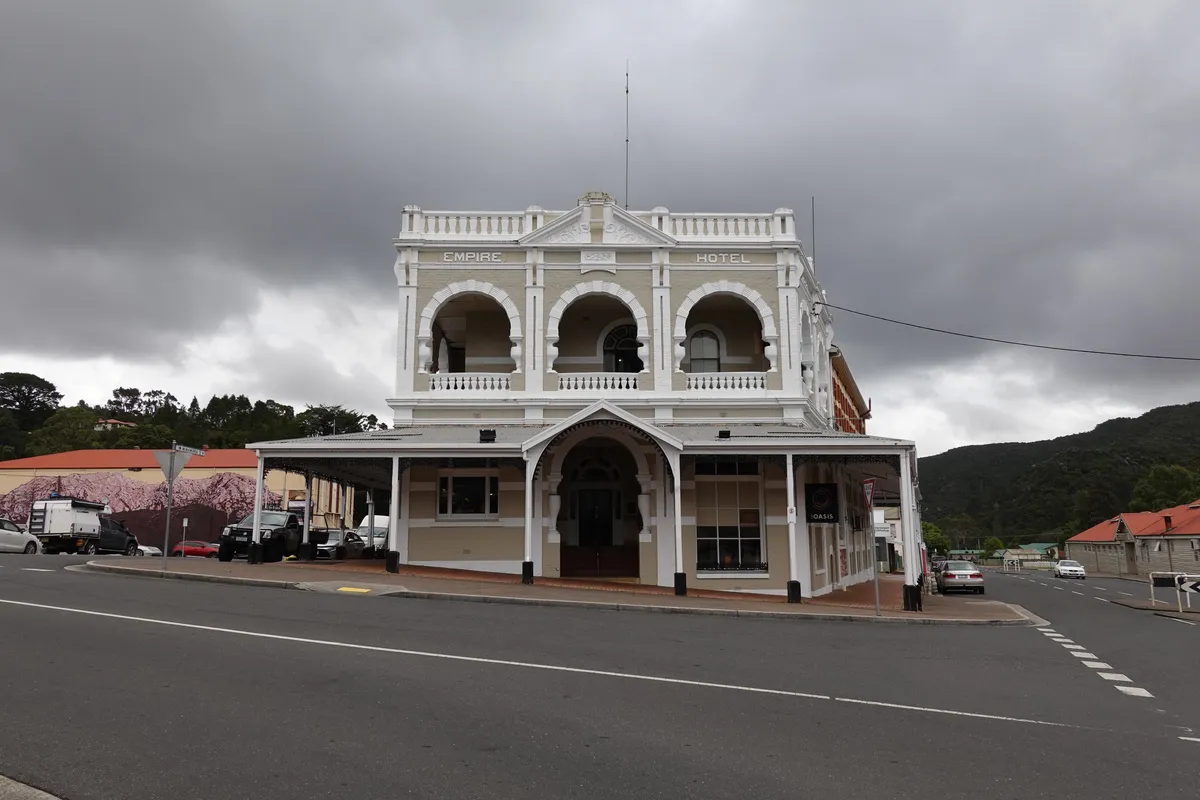
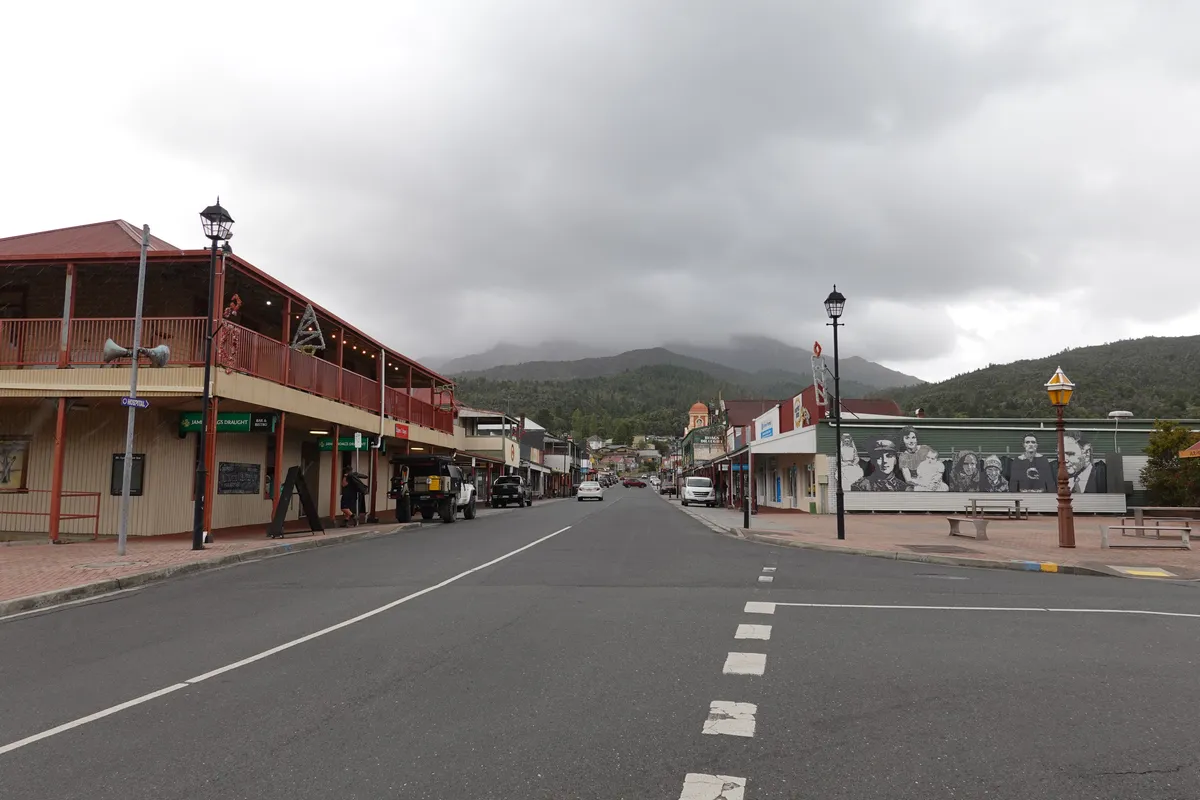
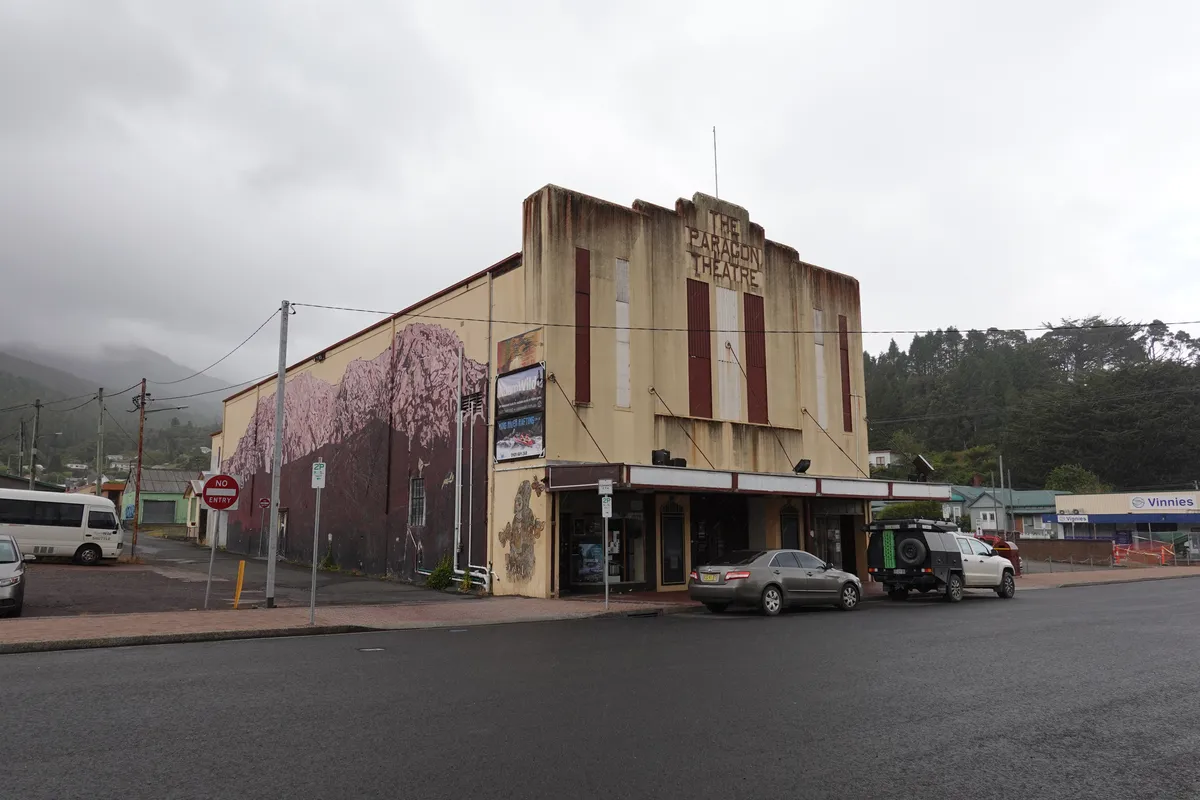

Queenstown Cabin & Tourist Park
We had a nice walk around town and stocked up on more groceries before heading to our stop for the night across the river at Queenstown Cabin & Tourist Park. A nice place overall with views of the surrounding mountains. Not exactly cheap, but good and clean facilities and just the right size such that the place didn’t feel too packed. Here’s a peek at dinner on the road and the view from the campground.
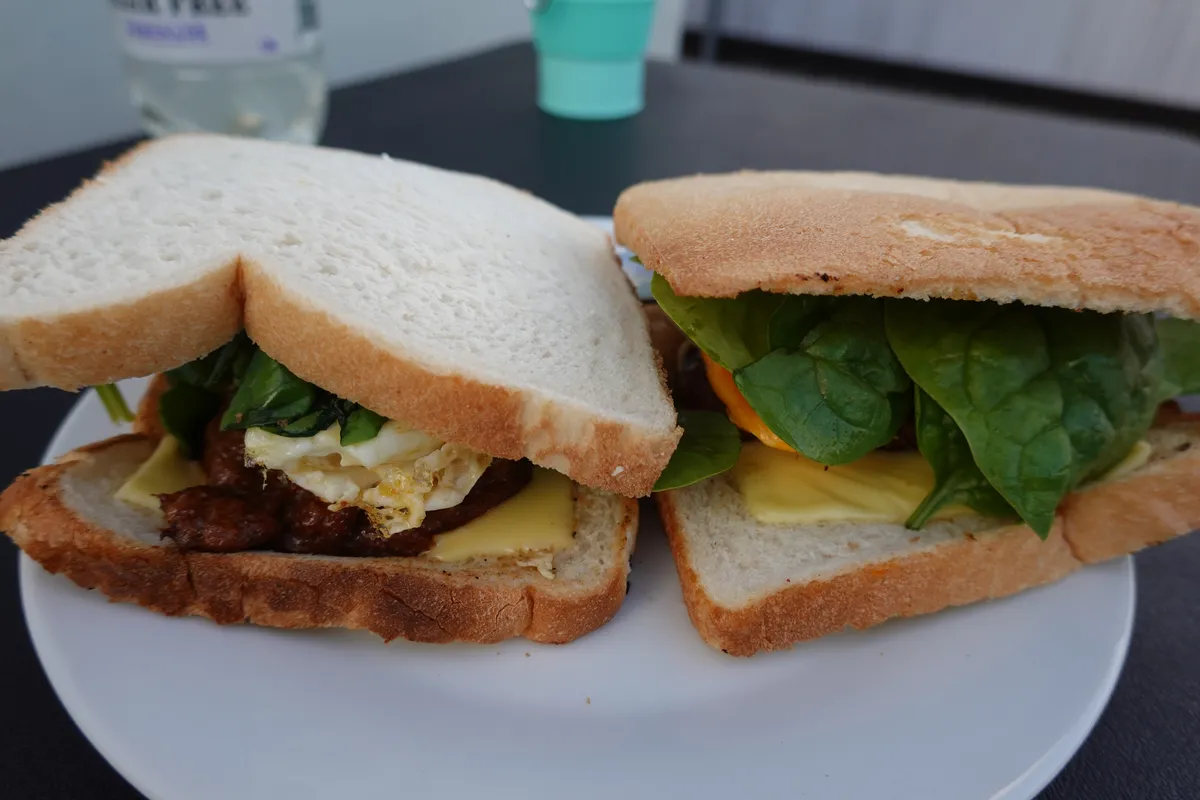

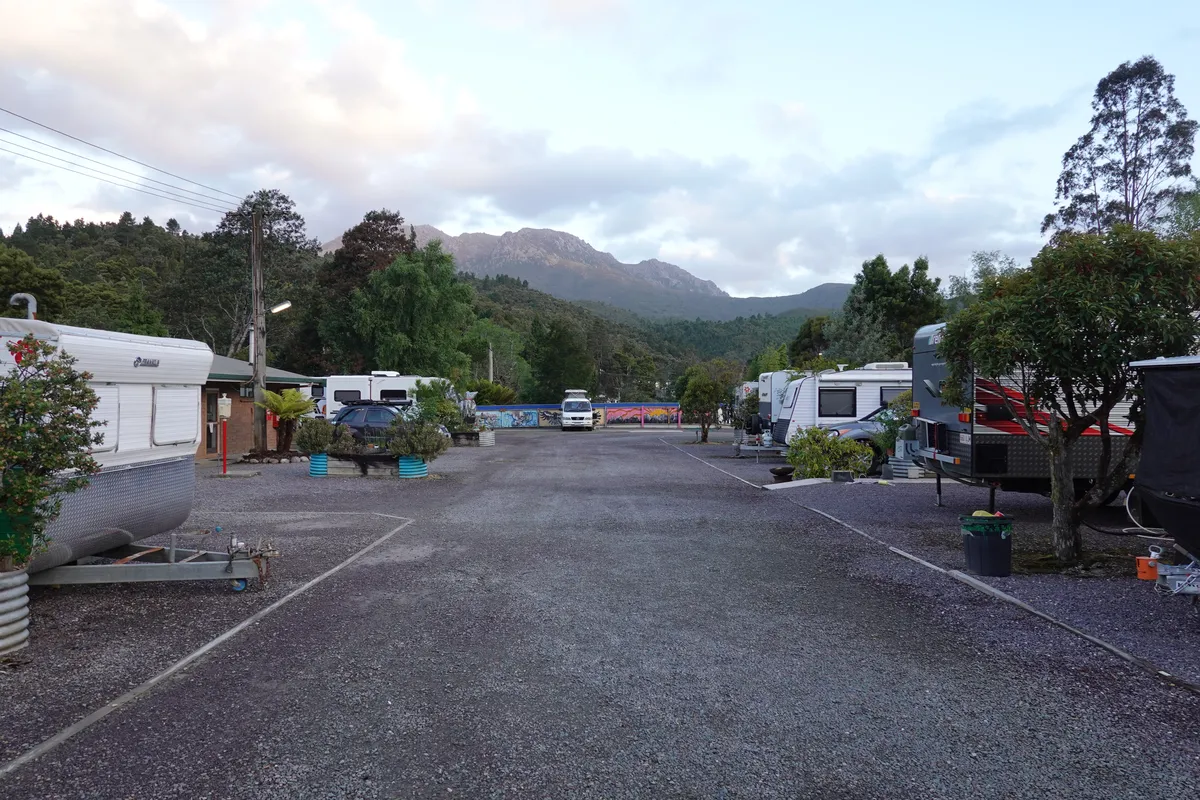
- Cost: AUD$30 for an unpowered site, AUD$45 for a powered site. Prices for two person per night, AUD$10 per additional person. No additional charges for children under 12.
- Parking: Flat, gravel surface. Well defined lots.
- Facilities: Fully equipped kitchen, BBQ area, coin-operated laundry.
- Hygeine: Clean, well-equipped toilets. hot showers included
- Reservations: Email [email protected] or call 0447 750 010
- Website: https://www.queenstowncabinandtouristpark.com.au/
Day 2 – West Coast Wilderness Railway and Franklin-Gordon Wild Rivers National Park
We had been looking forward to the Rack and Gorge tour on the West Coast Wilderness Railway ever since we made our booking almost 3 months prior, and were really excited when this day finally arrived.
Rack and Gorge Tour on the West Coast Wilderness Railway
The West Coast Wilderness Railway is a reconstruction of what was once the only way to get all that was mined in Queenstown out to the rest of the world. Given the scale of mining operations this was vital, but the terrain was ill suited for traditional railway technology. Eventually, a rack and pinion system was decided upon and deployed for climbing the steep ascents from Queenstown to Dubbil Barril, and 2 of these ascents are till date still the steepest in the Southern Hemisphere.
The Rack and Gorge Tour is not only a chance to experience this innovative hill climbing system, but also an opportunity to ride abroad a steam powered train. The stories provided along the way as well as the views at the highest points completed this unique and fascinating experience. For a super detailed account of not just the Rack and Gorge Tour but the entire West Coast Wilderness Railway, check out Rory Ding’s amazing video here.
We couldn’t keep our excitement in and reached well ahead of the schedule departure, checking out the train, tracks and cafe next door. We weren’t quite sure what to expect in the carriages but it turned out to be pretty comfortable, though the sitting arrangement meant you might have to face 2 strangers for the next couple of hours, or you might leave with new friends.
- Cost: AUD$120 per person for the Rack and Gorge tour (2022)
- Reservations: https://www.wcwr.com.au/
- Note: As of December 2023, both the River and Rainforest Tour and the Rack and Gorge Tour appear to be unavailable due to track maintenance works. Abridged versions of the tours, the Lynchford Express and the Teepookana and the King, are currently available.


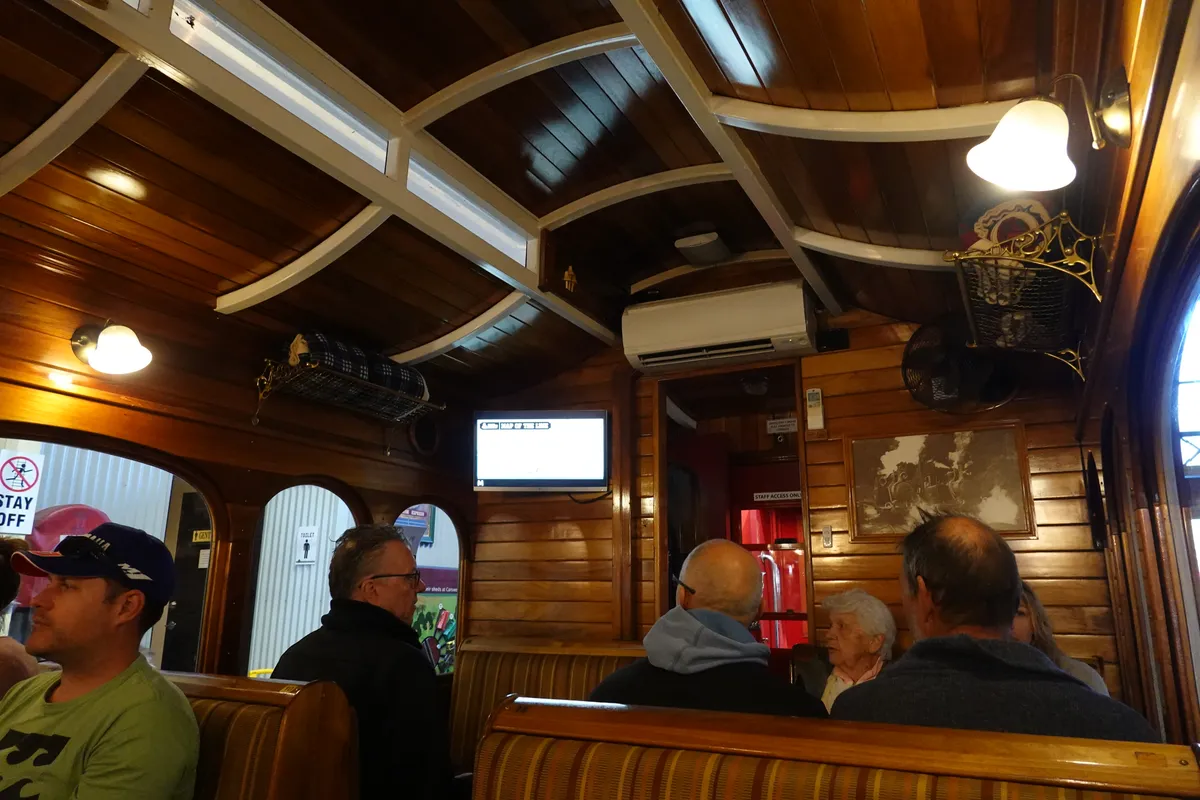
West Coast Wilderness Railway – Lynchford
Not much in terms of scenery till Lynchford, where we got off to check out the mining museum and try our hand at gold panning, while the thirsty train had a large drink to prepare for the climb ahead to Rinadeena. The river along the way (and also at Lynchford) runs orange, apparently one of the long lasting environmental impact of the mining operations that are since long gone. We didn’t had any luck with the gold so we couldn’t call a helicopter in and had to get back to the train like everyone else, towards Rinadeena.

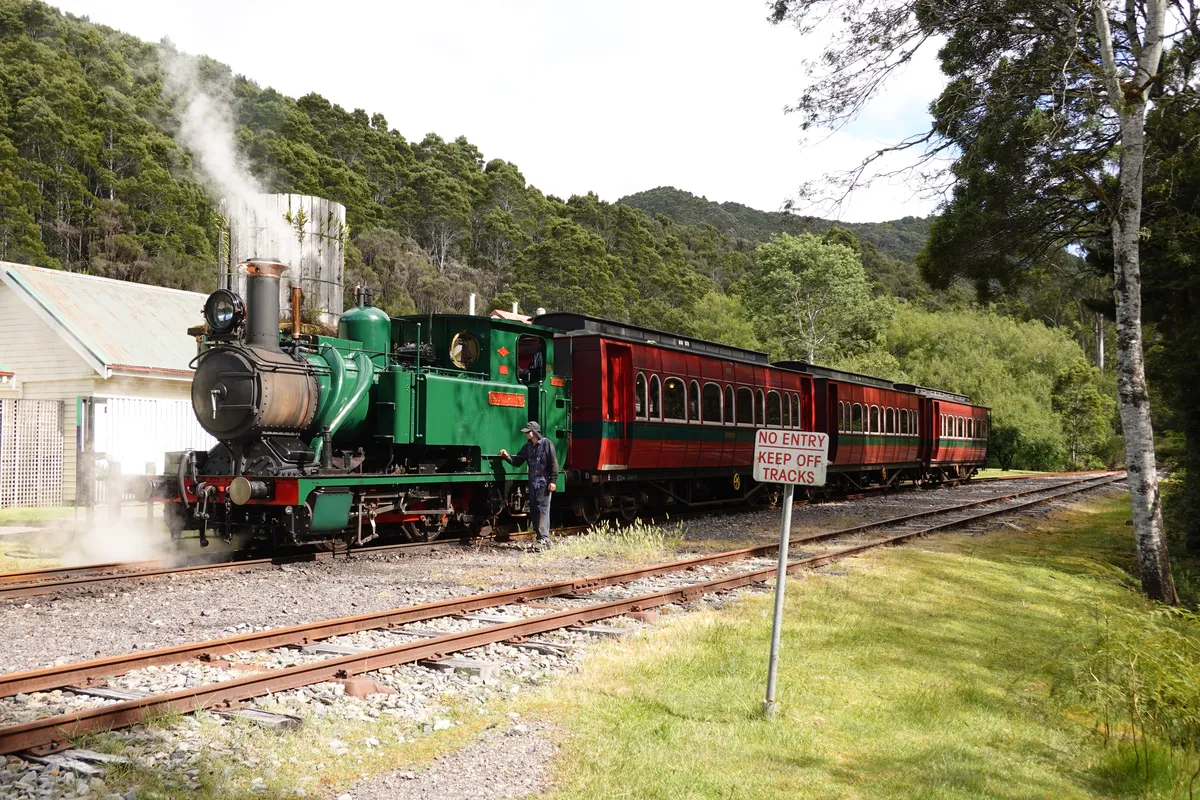

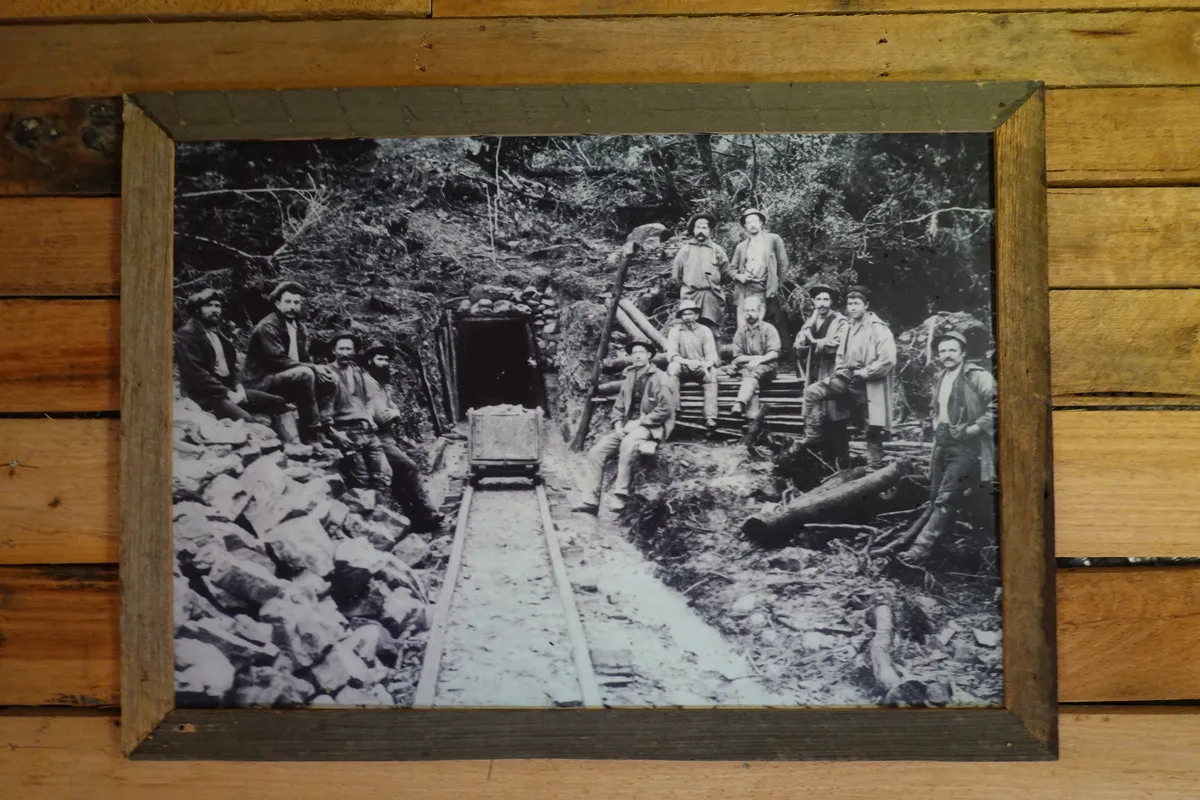

West Coast Wilderness Railway – Rinadeena
Past Lynchford, the climb using the rack and pinion system started. The train started heaving and squeaking more heavily but continued steadily. By the time we reached Rinadeena it was time for the train to have another drink. Here, there was a display showing how the rack and pinion system looked like, well hidden from view on the actual train. There was also a small cafe here as well as bridge where you can get up for a view of the train from above.
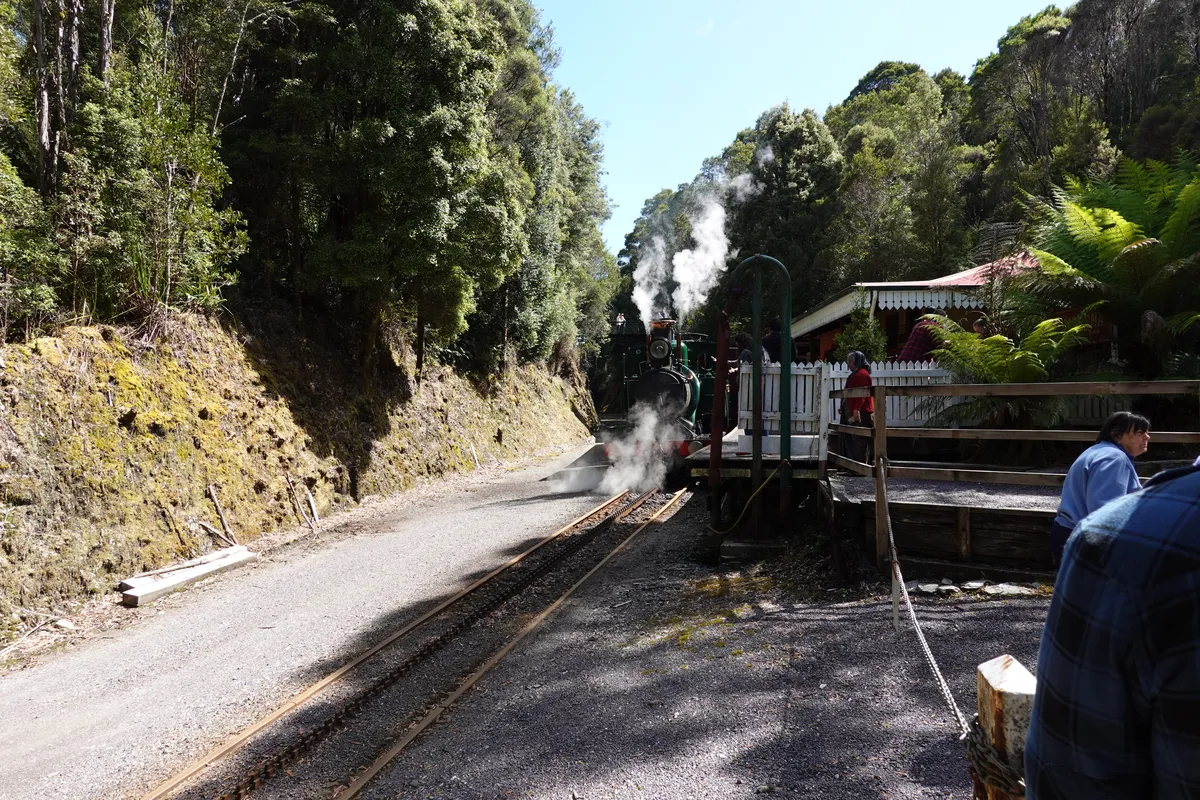

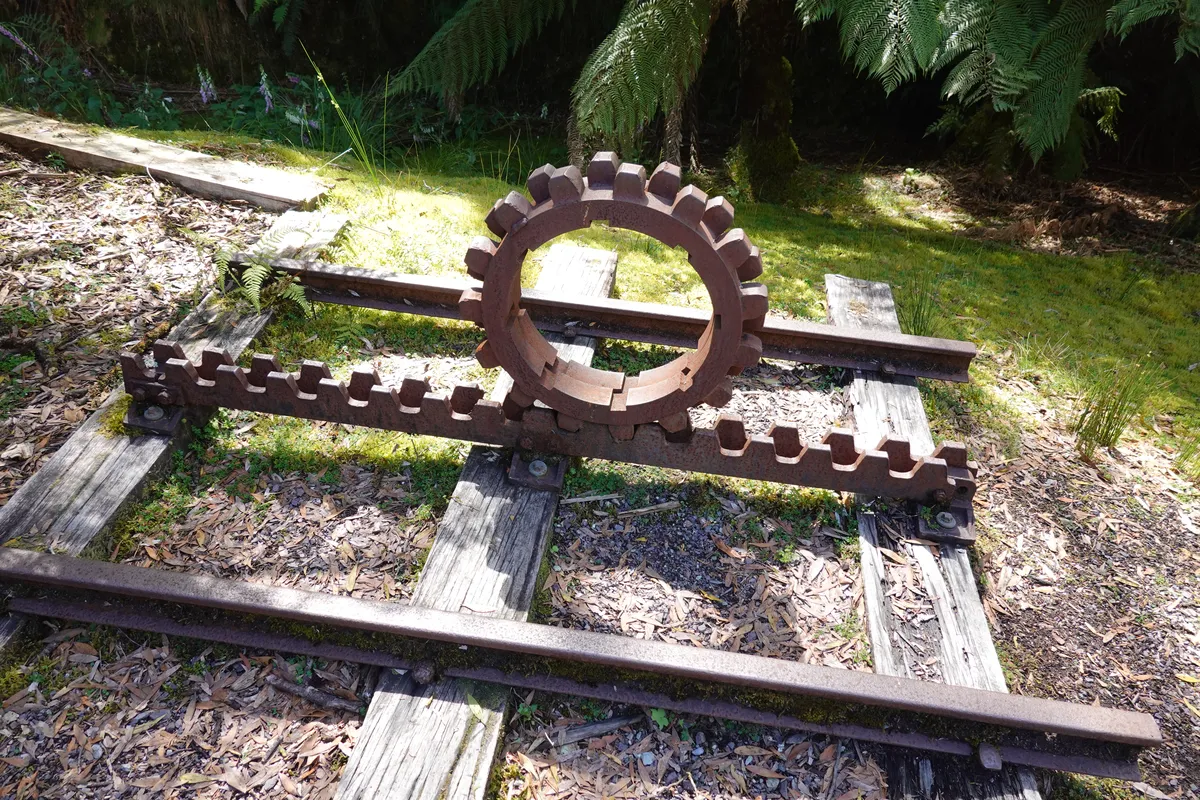
West Coast Wilderness Railway – Rinadeena to Dubbil Barril
Pronounced Double Barrel. The stretch between Rinadeena and Dubbill Barril is where the best views of the train ride are. Nearing Dubbil Barril the train clings to the side of the mountain with a steep drop to the side all the way down to the King River. The large windows on the carriage provide great views of the thickly forested valley and river, and gave a sense of the challenge faced when developing this railway. As the view is only on one side of the train, passengers swap sides on the way back so that everyone is able to enjoy the view.

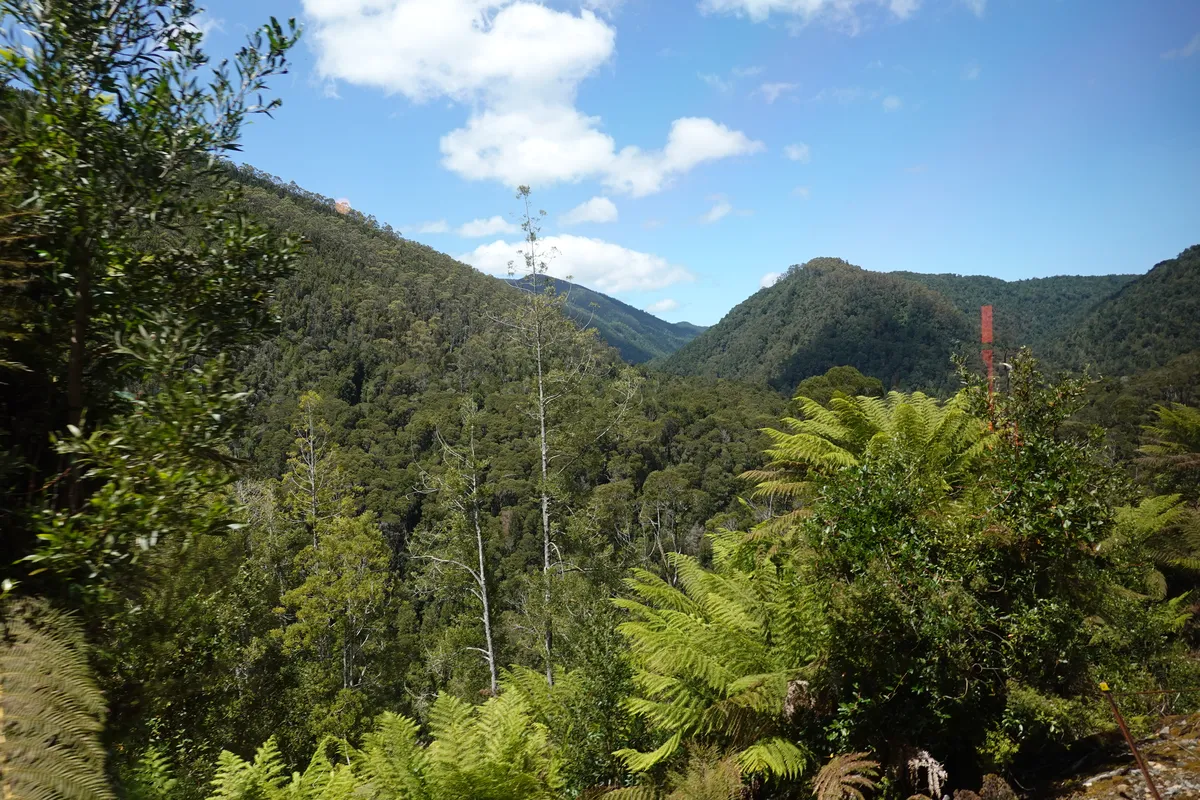
West Coast Wilderness Railway – Dubbil Barril
Shortly after the breathtaking view we arrived at Dubbil Barril Station, the final station of the Rack and Gorge tour. The highlight here was watching the train crew turn the steam engine around using the turntable so that we can travel on the same track back to Queenstown. It was really cool seeing how 2 guys could turn a whole steam locomotive 180 degrees around. After the train was turned around, there was still some time to explore the surrounds as the train needed to be topped up again. We had a short lovely walk through the forest, saw the train tracks from beneath, and took in views of King River from the Dubbil Barril Station before it was time to go again.
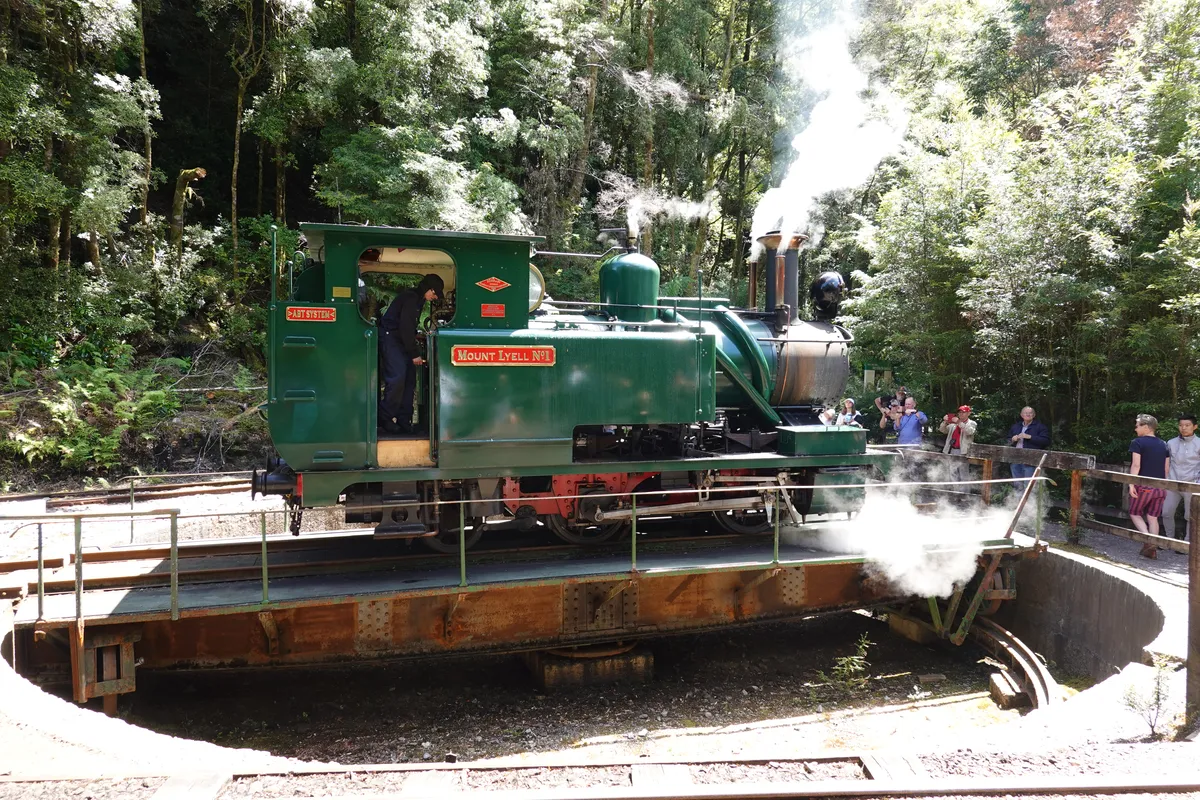
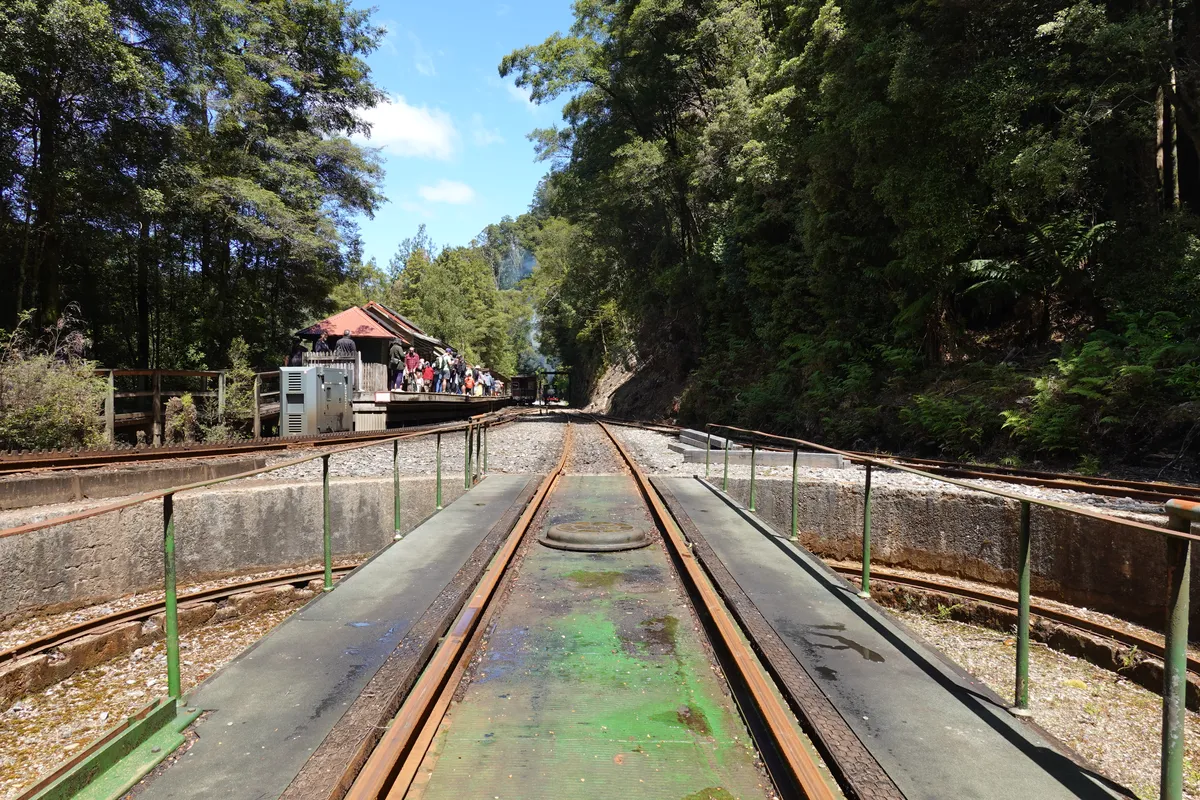
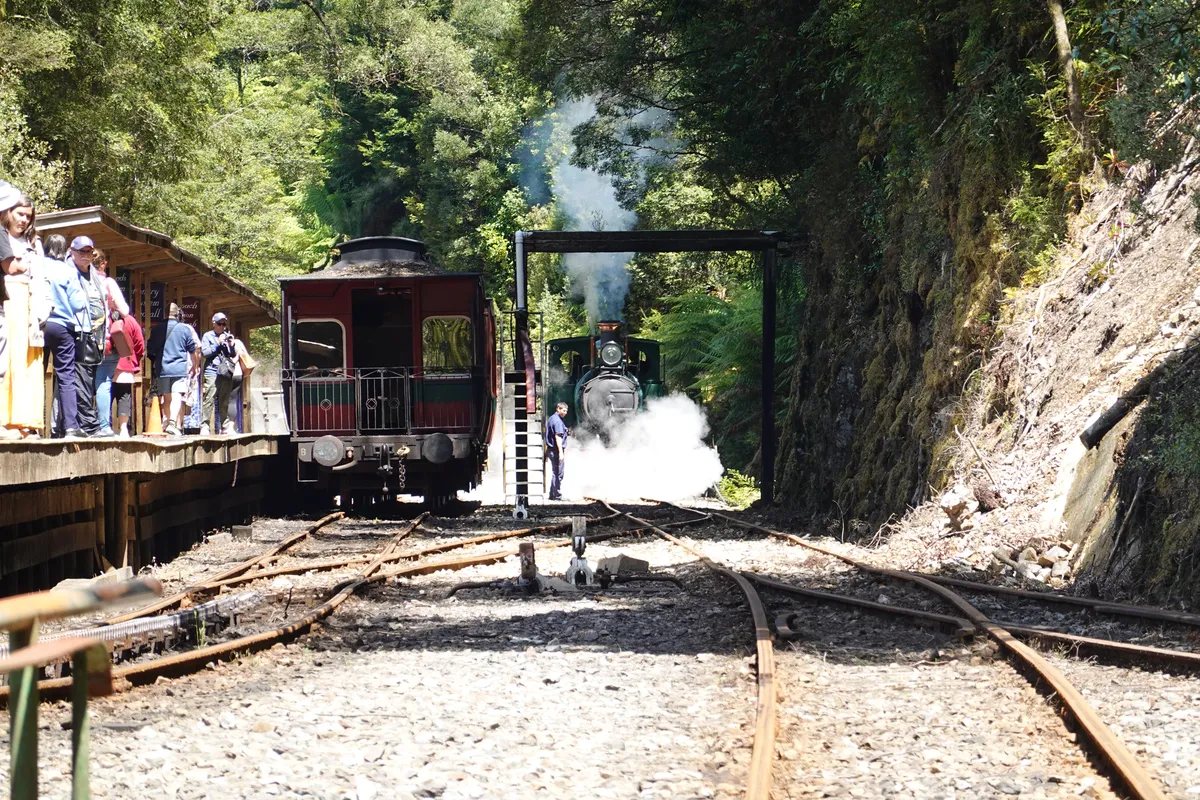
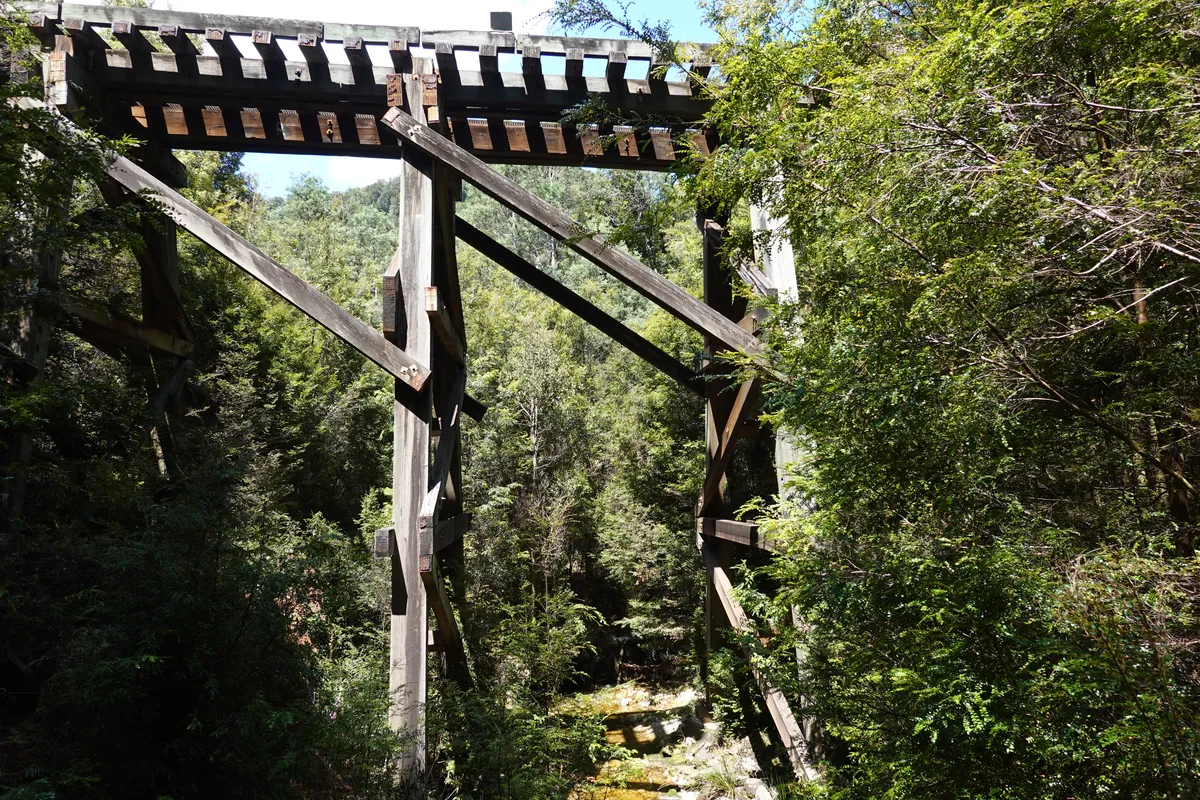
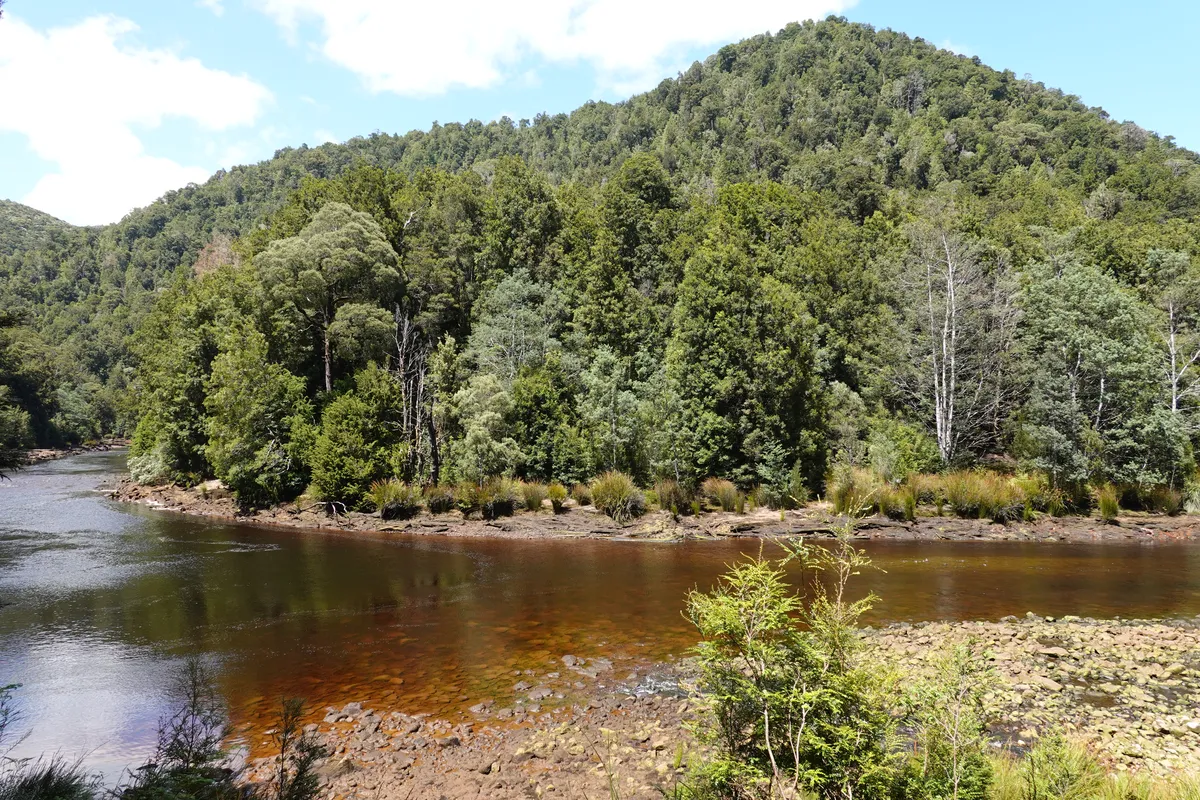
West Coast Wilderness Railway – back to Queenstown
The view was pretty much the same on the way back. We got the scenery facing view this time and were appreciative of the really clean windows. The train made a quick stop at Rinadeena to fill up and we got a better view of the train from the bridge this time, with the locomotive right before the bridge. The train didn’t stop again at Lynchford and we were soon back at Queenstown. We watched the crew turn the train around once more before calling it a day on our West Coast Wilderness adventure.

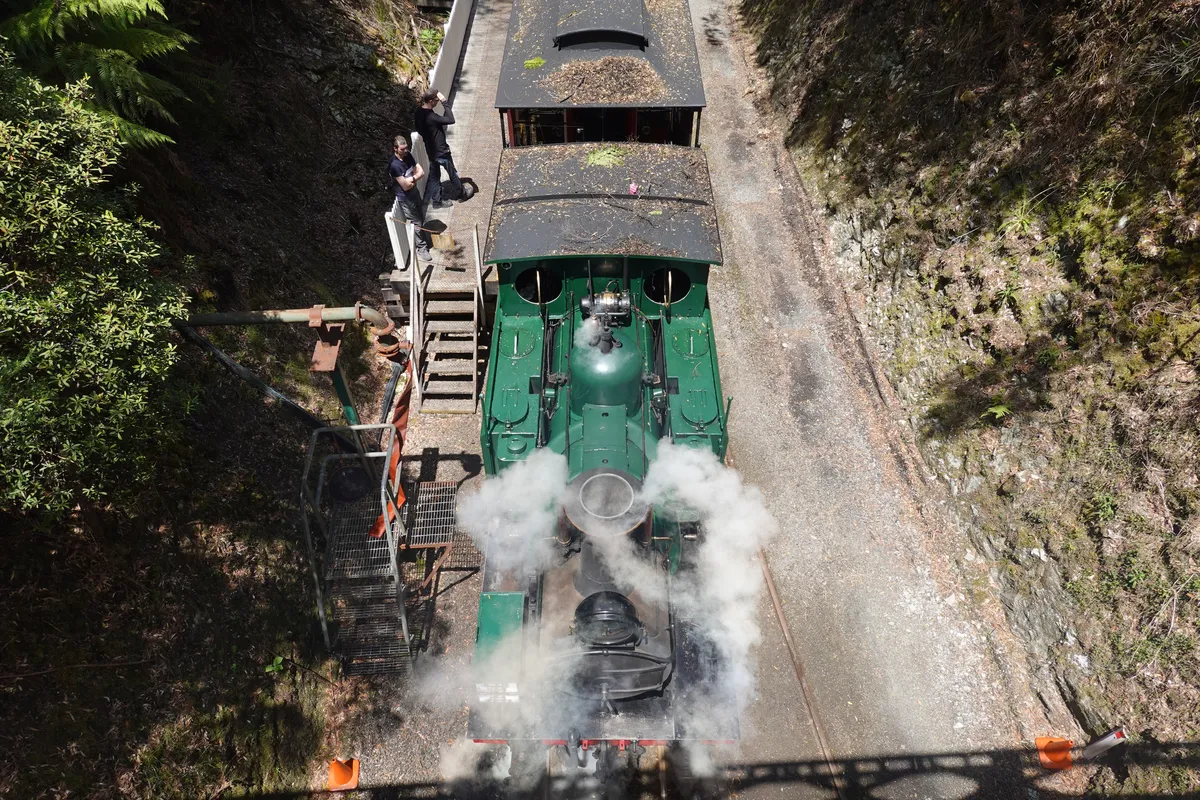


Queenstown
The weather was lovely that day and painted Queenstown in a different light from the day before. We had a quick lunch and were soon on our way, heading east towards the relatively untouched wilderness of central Tasmania.
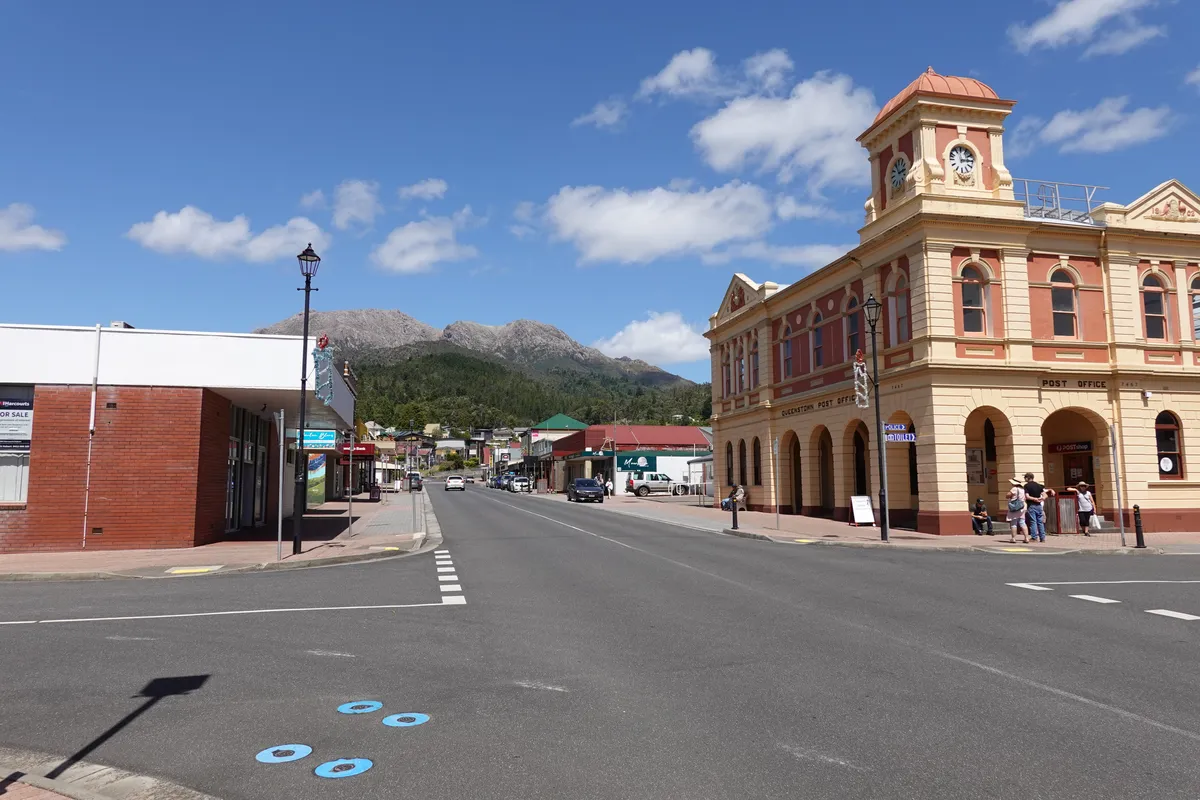
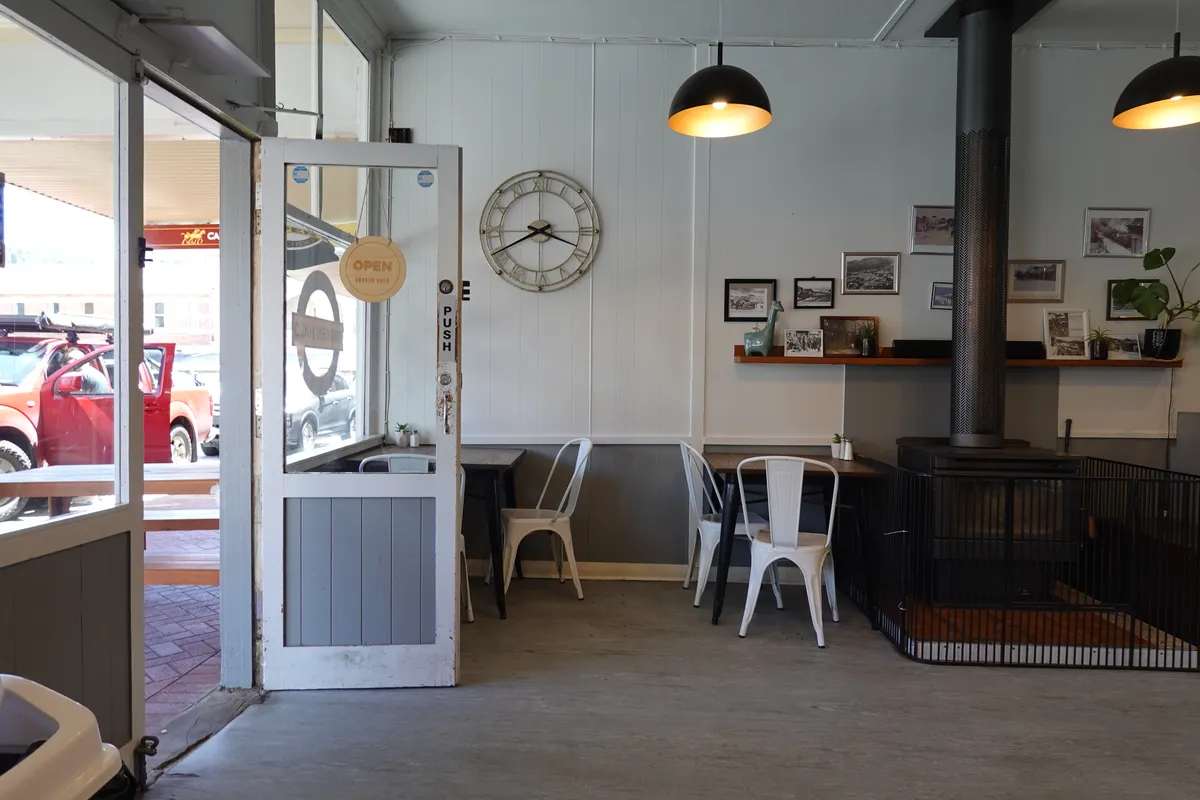
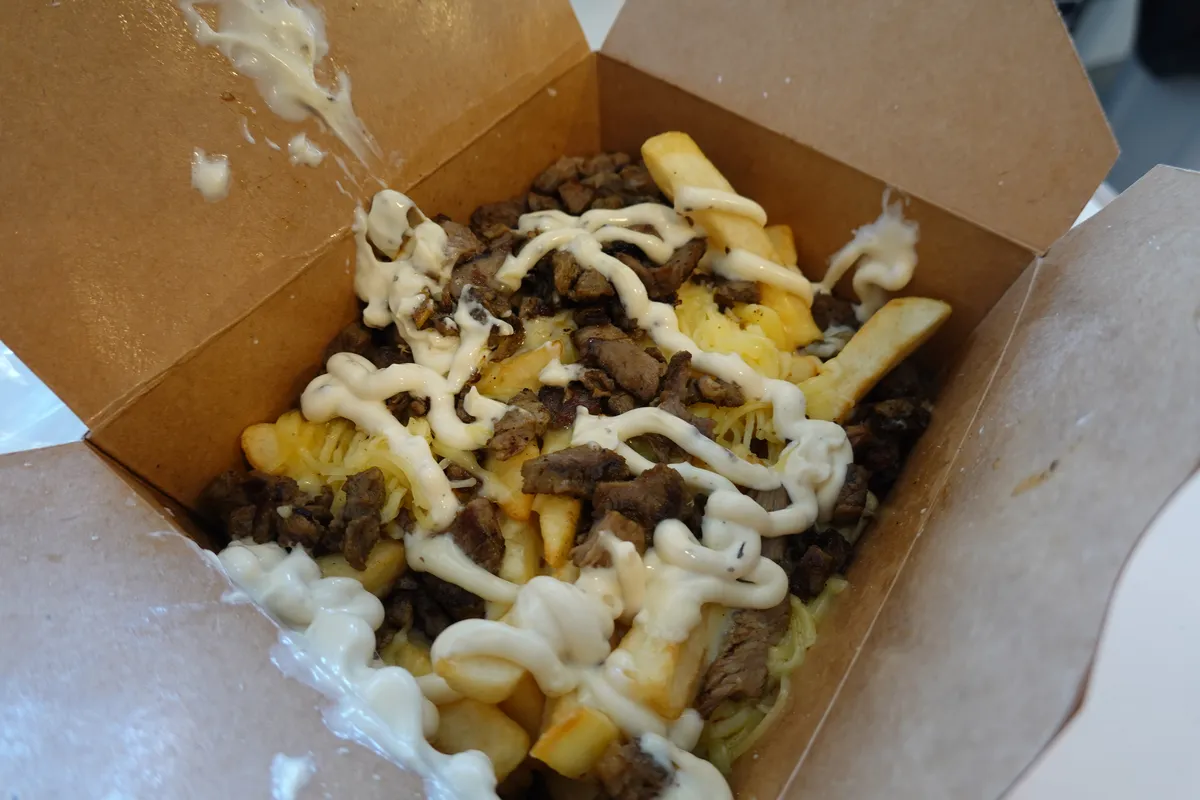
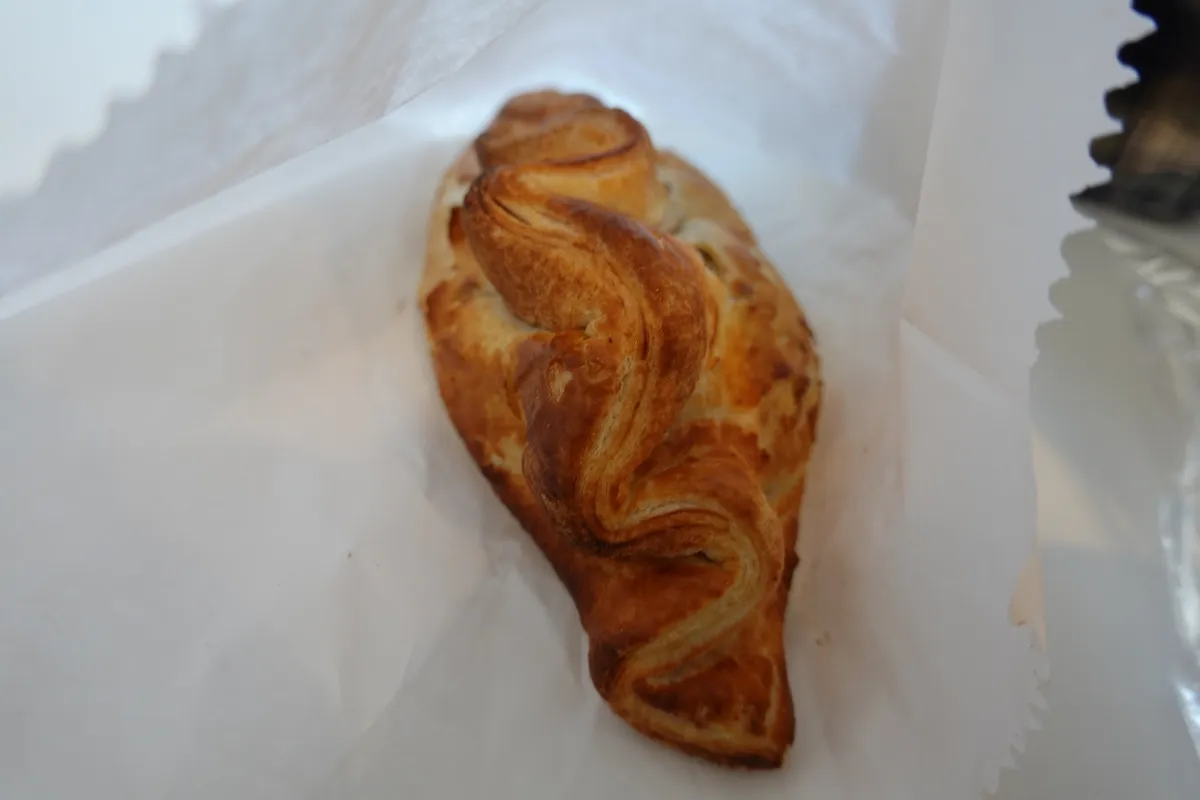
Iron Blow Lookout
But before we could reach the untouched wilderness of Franklin-Gordon Wild Rivers National Park, an unmissable reminder of the damage mankind can do to the natural landscape. The hills and mountains beyond Queenstown have been stripped bare and cut wide open from mining decades ago. The Iron Blow Lookout, while spectacular, stood in stark contrast to the lush landscapes we had seen in Tasmania so far. That background set the stage for a better appreciation of the Franklin-Gordon Wild Rivers National Park and the tremendous efforts expended to ensure that the Franklin and Gordon rivers would run free.



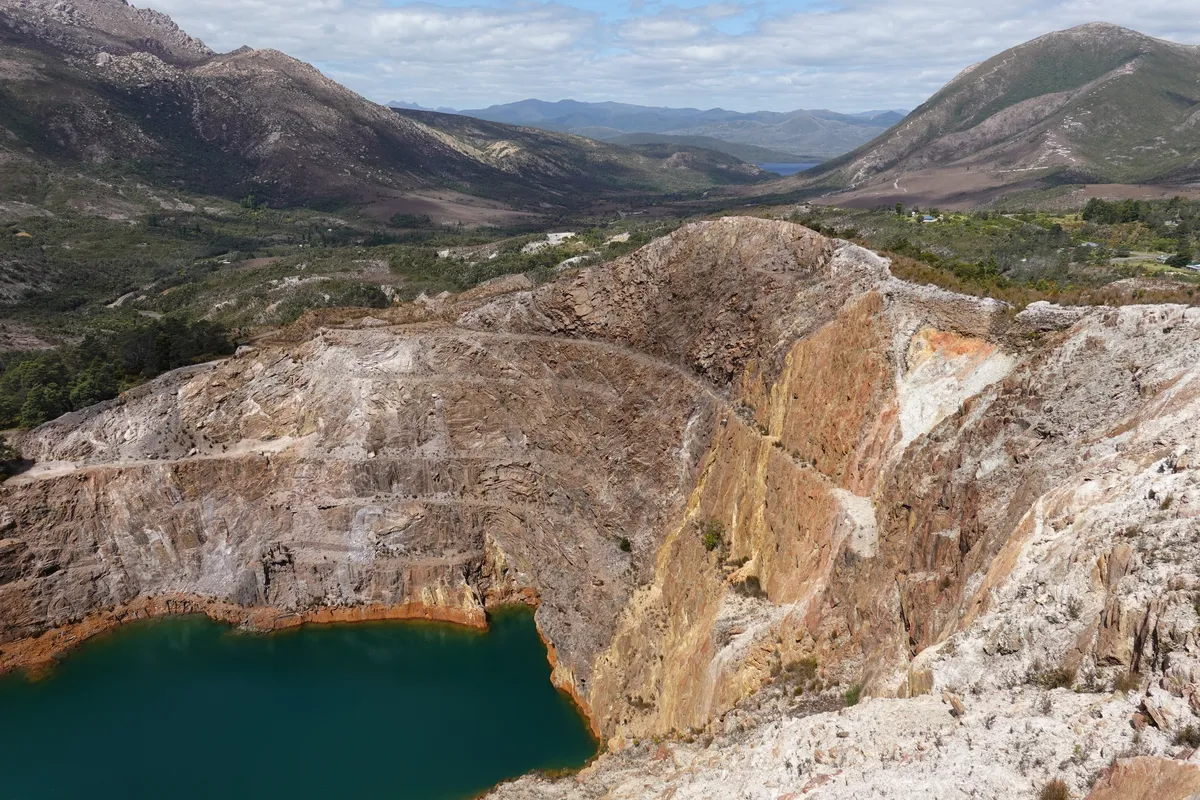
Ruins of the Old Royal Hotel
Another sign of the better days long gone for this region. We stopped by for a quick look but as the building did not look safe to approach nor did the cafe appear to be operational, we decided to leave. If this looks like your kind of thing, you might even be able to own it for less than $150,000.
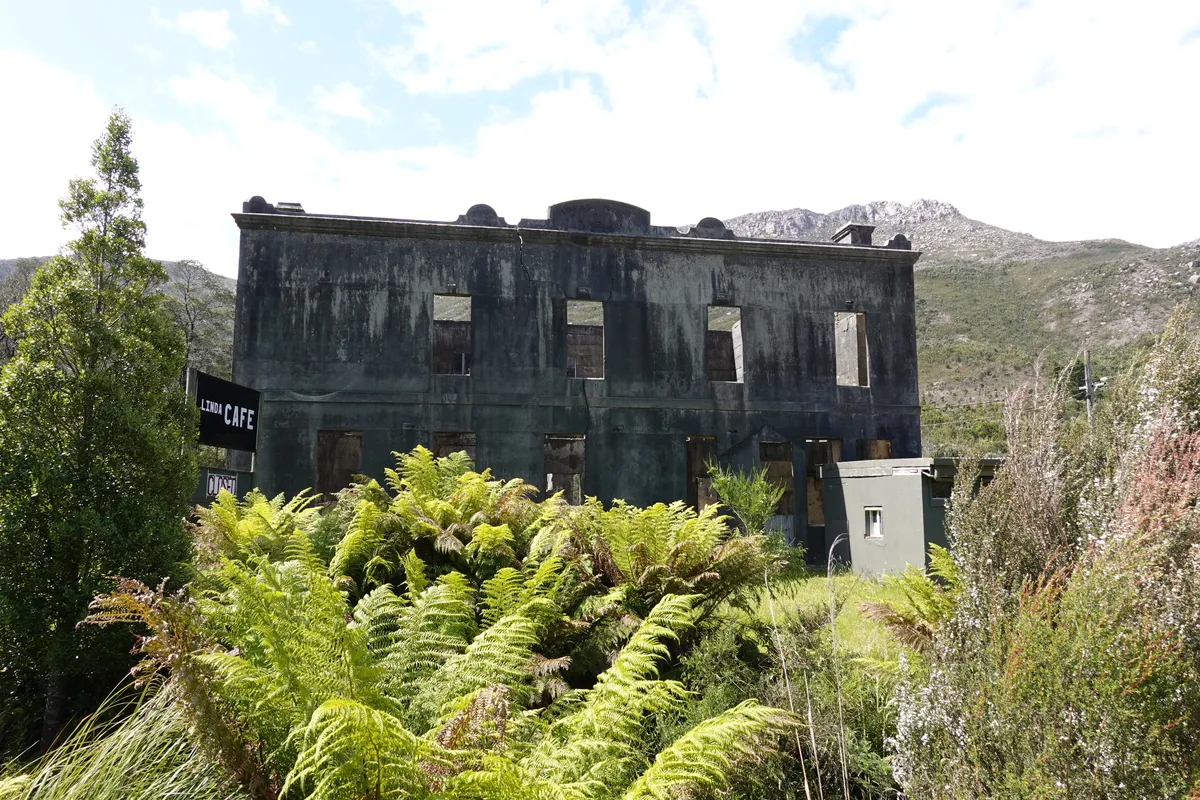
Nelson Falls Nature Trail (Franklin-Gordon Wild Rivers National Park)
Further east along the Lyell Highway, signs of mining grew sparse and we surrounded by forests that Tasmania is more known for. Our next couple of stops are a few short walks in the Franklin-Gordon Wild Rivers National Park, all starting from various points along the Lyell Highway. First stop in Franklin-Gordon Wild Rivers National Park, about 30 minutes from Queenstown, is Nelson Falls Nature Trail. While this was just steps from the Lyell Highway, it was extremely serene. The sounds of the forest and from the many streams was calming, with Nelson Falls completing this zen experience. It was a nice and easy walk on flat path, and the walk from the carpark to Nelson Falls and back took around 30 minutes.
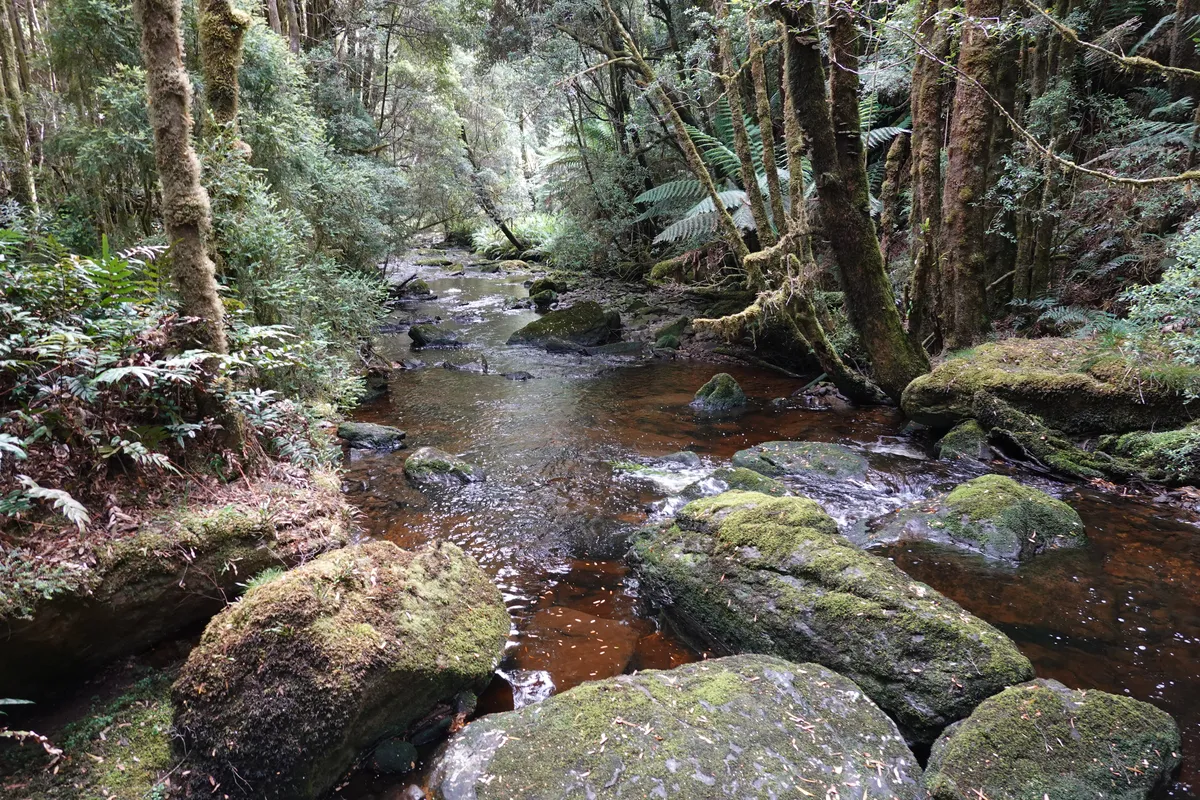


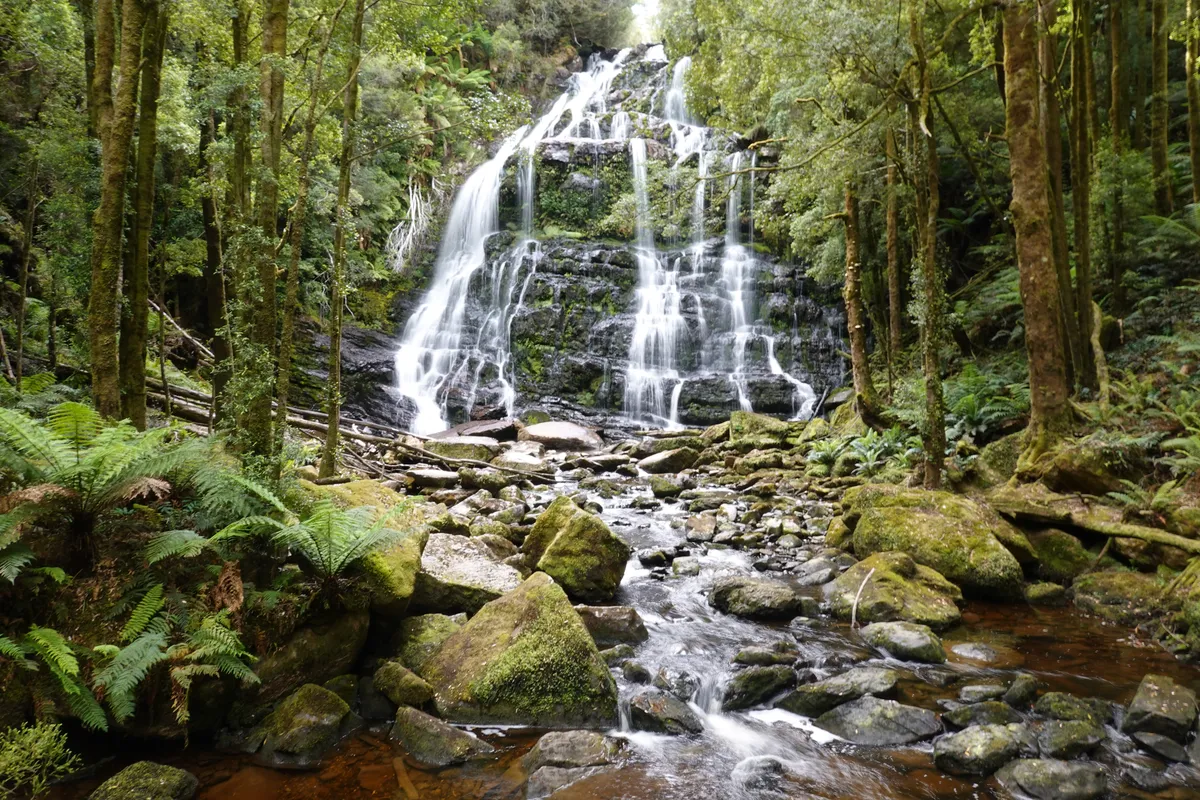
- Distance: 1.4km return
- Cost: Valid park pass required, no additional costs
Donaghys Hill (Franklin-Gordon Wild Rivers National Park)
Just another 30 minutes down the Lyell Highway is the starting point for the walk to Donaghys Hill. It was slightly later in the afternoon by then and we did not see anyone here, not even another car at the carpark. This was also a short walk, but with some incline and rougher terrain. Our walk in and out took about 50 minutes, including the long stop at the top for photos.
The trail initially went through dense vegetation and had me wondering if it could be worth it, but as we climbed the views opened. Approaching the summit of Donaghys Hill we could see across the densely forested valleys, over wild rivers and rugged mountains (including the iconic Frenchmans Cap) of Franklin-Gordon Wild Rivers National Park and beyond. Just a glimpse of what was in store for the curious and adventurous and who are willing to venture beyond an hour from the carpark. Probably days. It was a spectacular sight from the summit of Donaghys Hill, definitely high on the reward to effort ratio.


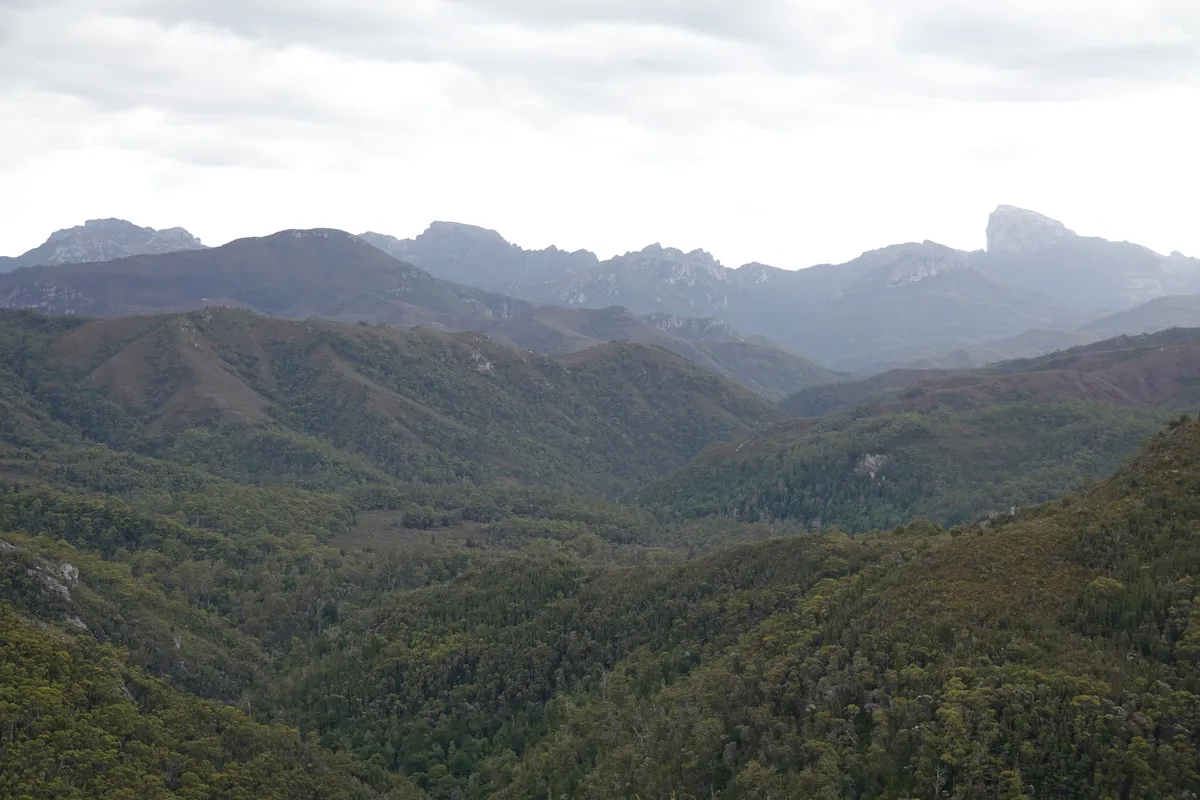
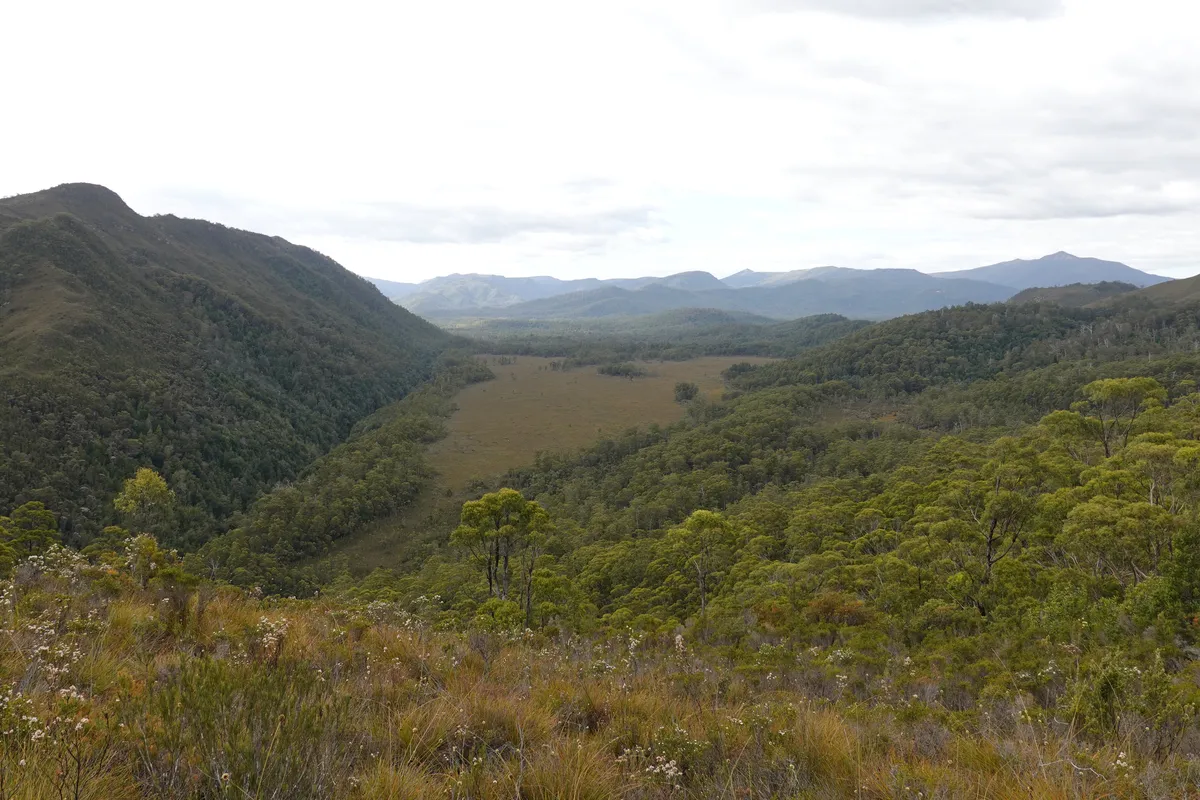
- Distance: 2.2km return
- Cost: Valid park pass required, no additional costs
Franklin Nature Trail (Franklin-Gordon Wild Rivers National Park)
And just another 10 minutes more along the Lyell Highway is the carpark for the Franklin Nature Trail. Like the Nelson Falls Nature Trail, this is another really comfortable one, a 1km loop on a boardwalk next to the river. After seeing the river from above, it was time to get up close. It may not look like much up close, and may be a little hard to imagine, but the Franklin River was once the subject of a high profile dam project that gained global attention, resulted in protests, rallies, arrests, changes in governments, and eventually, the cancellation of the project. The 2022 movie Franklin provides a fascinating perspective of this historic environmental campaign. We chanced upon the movie fortuitously when our budget flight home from Tasmania was cancelled, we were assigned to a Qantas flight, and came across it on the in-flight entertainment.
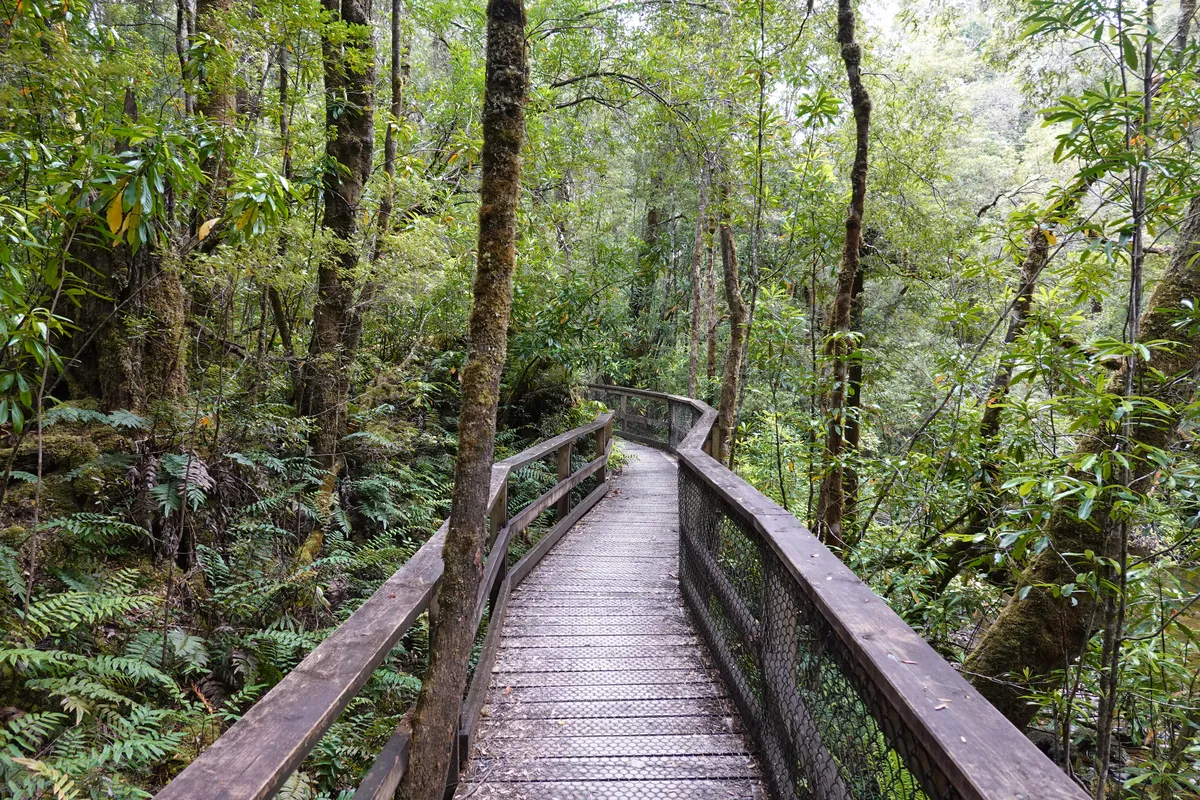
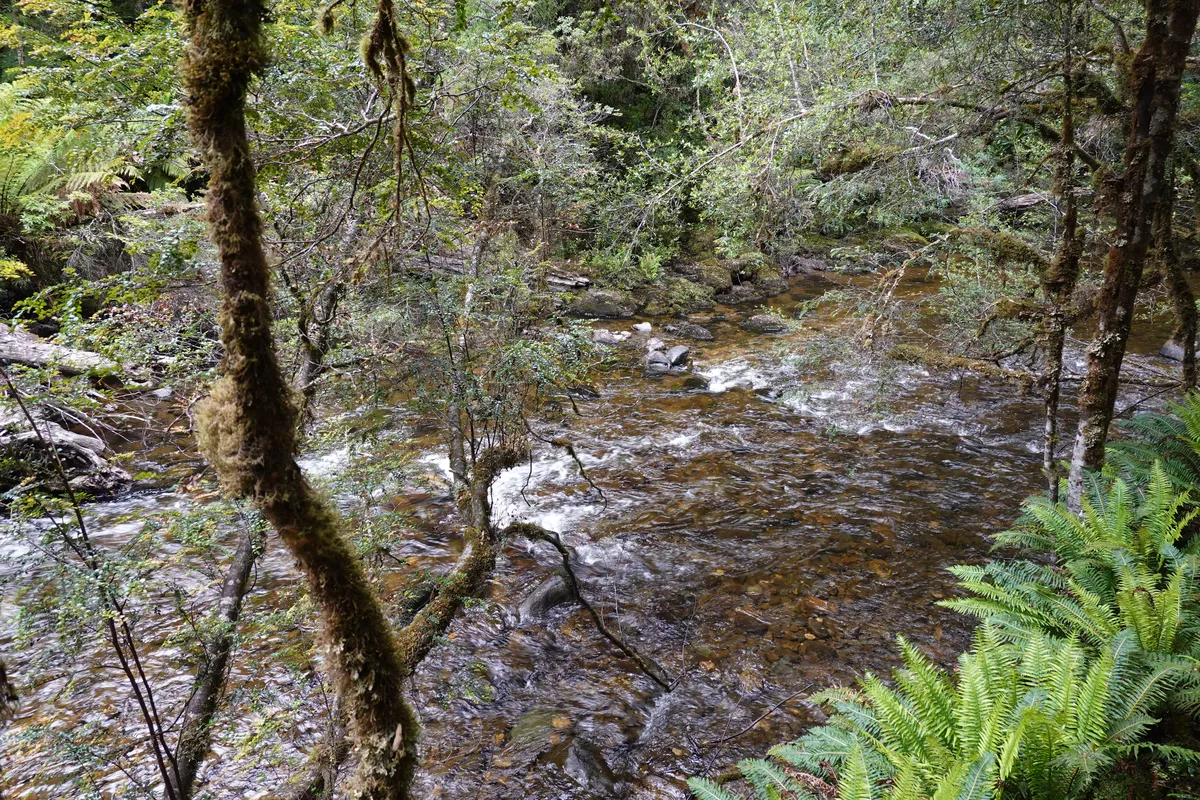
- Distance: 1.4km return
- Cost: Valid park pass required, no additional costs
Wombat Campground (Lake St Clair)
Just about time to call it a day. We drove another 30 minutes and arrived at Lake St Clair campgrounds, where we had booked a powered site for the night. Facilities were good but just a little too spread out as this was a large campground. The lots, while numbered, were not paved and a little tricky to align and level. The highlight of the campground, though, was Lake St Clair, which was right next to the campground. Just 3 years earlier I completed the Overland Track on the other side of the lake, took a boat ride to the park exit, but didn’t manage to explore more of Lake St Clair as we had to catch a bus to get back to the city. Lake St Clair revisited, with time to explore. Or so I thought.
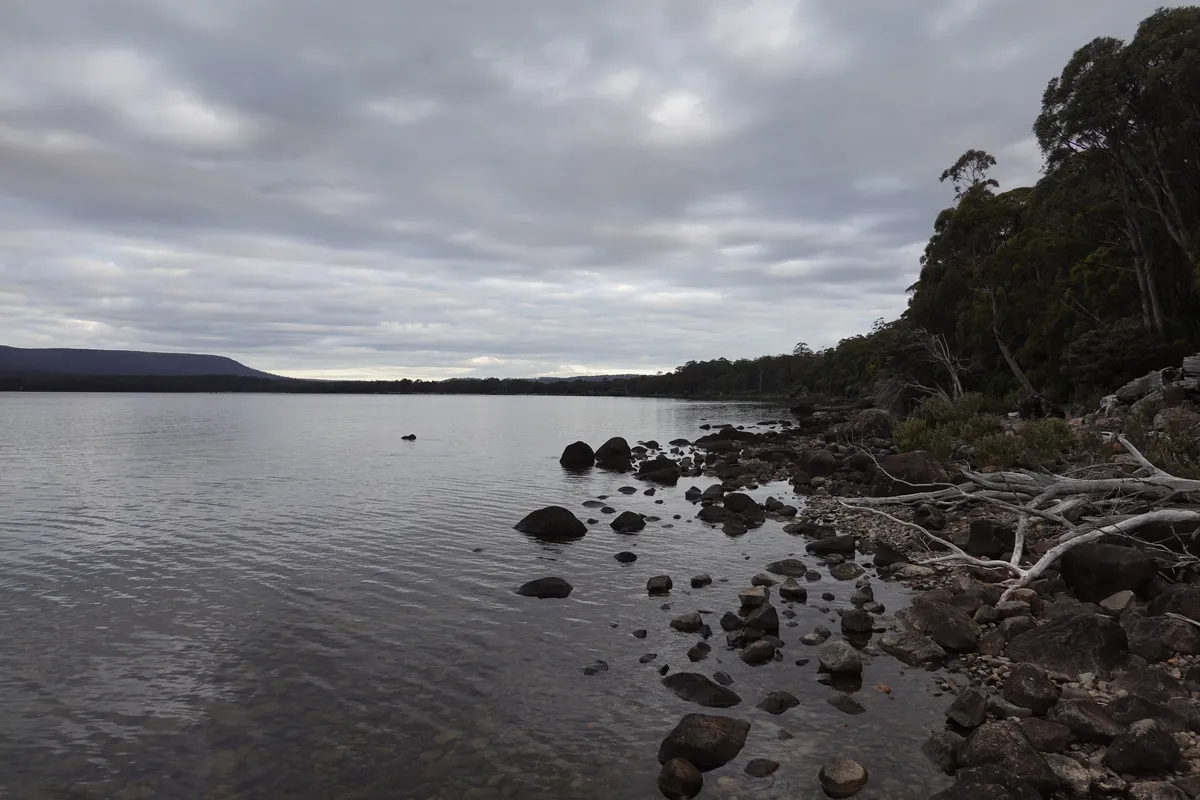
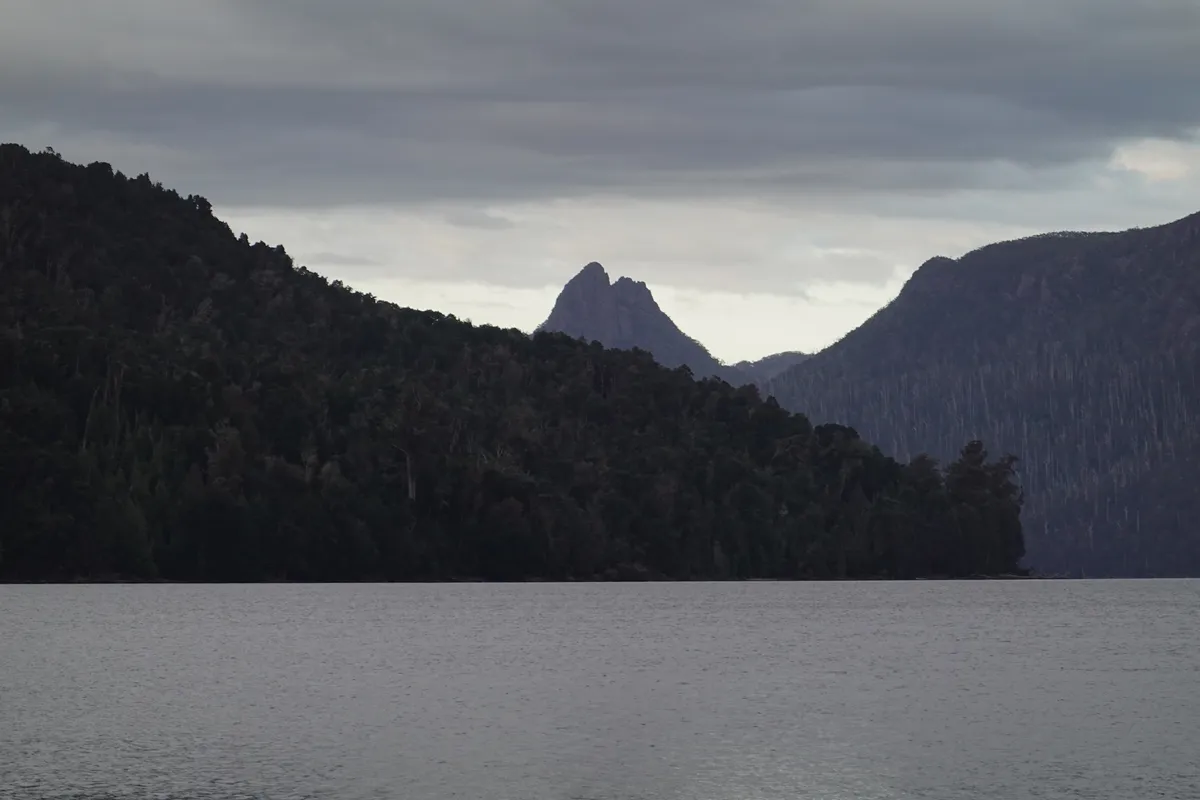

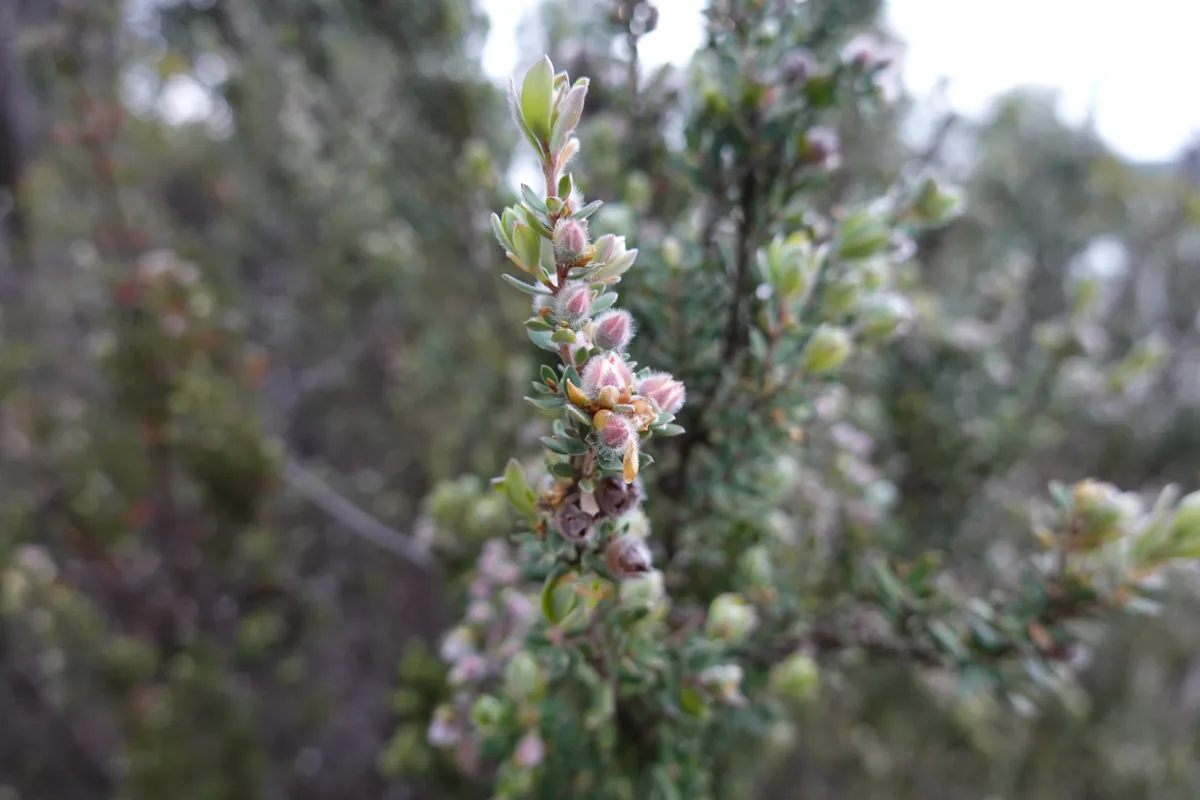
- Cost: AUD$40 for an unpowered site, AUD$48 for a powered site.
- Parking: Natural terrain (unpaved and uneven)
- Facilities: Coin-operated electric BBQ, coin-operated laundry
- Hygeine: Basic toilets. hot showers at $1 for 6 minutes
- Reservations: Reserve online at website below
- Website: https://www.lakestclairpark.com.au/
Day 3 – Lake St Clair (?) and Westerway Raspberry Farm
The morning started like any other (after 2 weeks spending most mornings in national parks), beautiful day right next to the lake. We had a nice morning stroll by the lake at the campground before continuing to Lake St Clair visitor center, where we had planned to do a short hike or two starting from the visitor center.


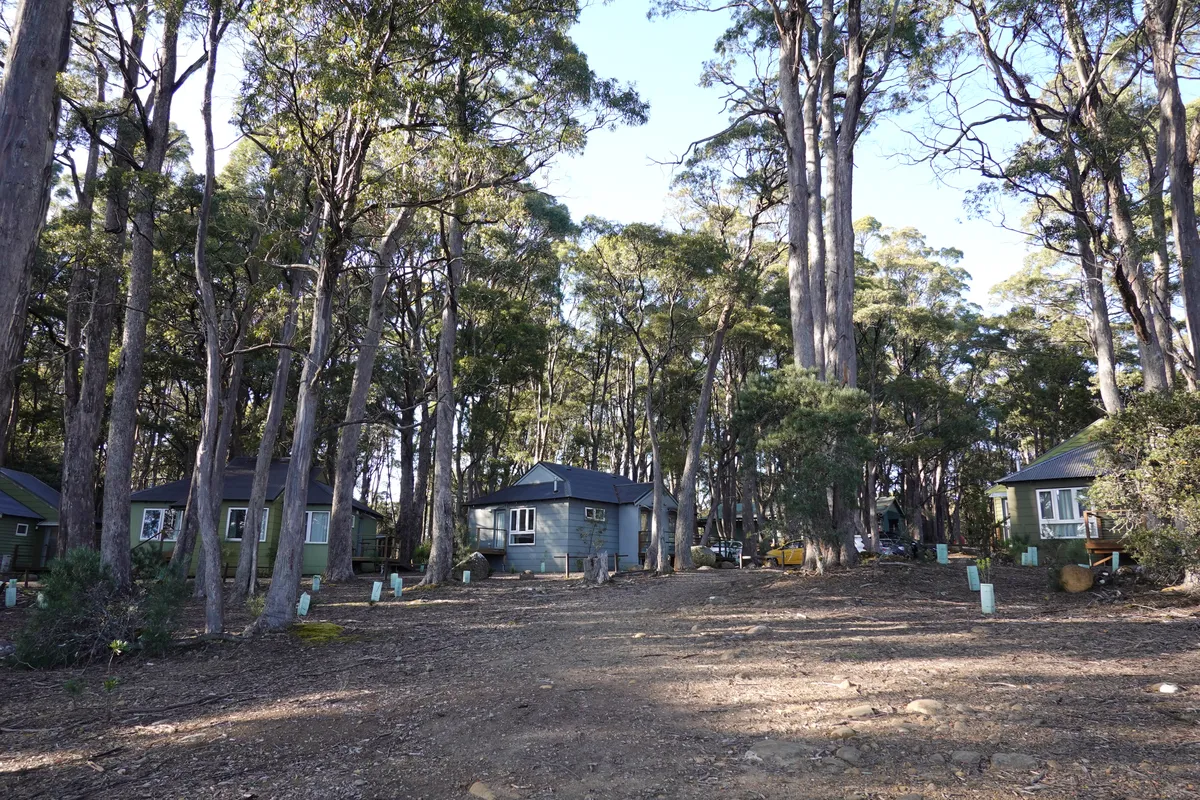
Careless Parking
Unfortunately, in a terrible bout of carelessness, I had slowly backed up into a tree trunk jutting onto the carpark, and our rear windscreen shattered in what seemed like slo-mo. If we really had to get into any incident involving the van, this might have been the most embarrassing yet. The saving grace was that no one was injured, though we were a little shaken, but there was plenty of shards to clean up, and some co-ordination required to replace the windscreen for our last couple of days on the road.
We informed the national park staff, and they were really kind and understanding and one of them even helped us with the clearing of glass. Took awhile, and after we were done the next step was to cover the gapping hole at the back of the van. There weren’t any shops in the vicinity to get some large plastic sheets and masking tape, but the staff helped with whatever they could and advised that we would be able to find the appropriate materials further down the Lyell Highway at Ouse.
Alternative Arrangements
Meanwhile, Peter from Tascamper was very kind and patient too and provided instructions on what we could do next. As it was over the Christmas/ New Year break, repairs were not possible until a few days later. We had to get the rear temporarily covered for the few days and make a detour to Hobart once businesses reopen for the new year. Fortunately, we were towards the last legs of our trip and a detour to Hobart wouldn’t take more than half a day.
Costs wise (figured post trip), while we had added on the maximum insurance available on the campervan, which covered a free front windscreen change, that did not cover the rear. As it turned out, the Tascamper charged us just as the repair company charged them, without excesses for troubling them over holidays, and the amount was manageable enough to be covered by our travel insurance. Definitely a case in point to always get reliable travel insurance. And rent vehicles from reliable businesses.
We re-routed our schedule slightly and decided to skip the Lake St Clair walks to get the van patched as soon as possible at Ouse. Still slightly shaken, there were a couple of sights along the way but we didn’t had the mood to stop and enjoy. Finally, we reached Ouse, bought supplies and patched the van up, then had an oily but delicious lunch at Ouse Roadhouse. We felt a little better, and continued on our way. The dose of deep fried food by the roadside was the perfect remedy for the emotionally draining morning.
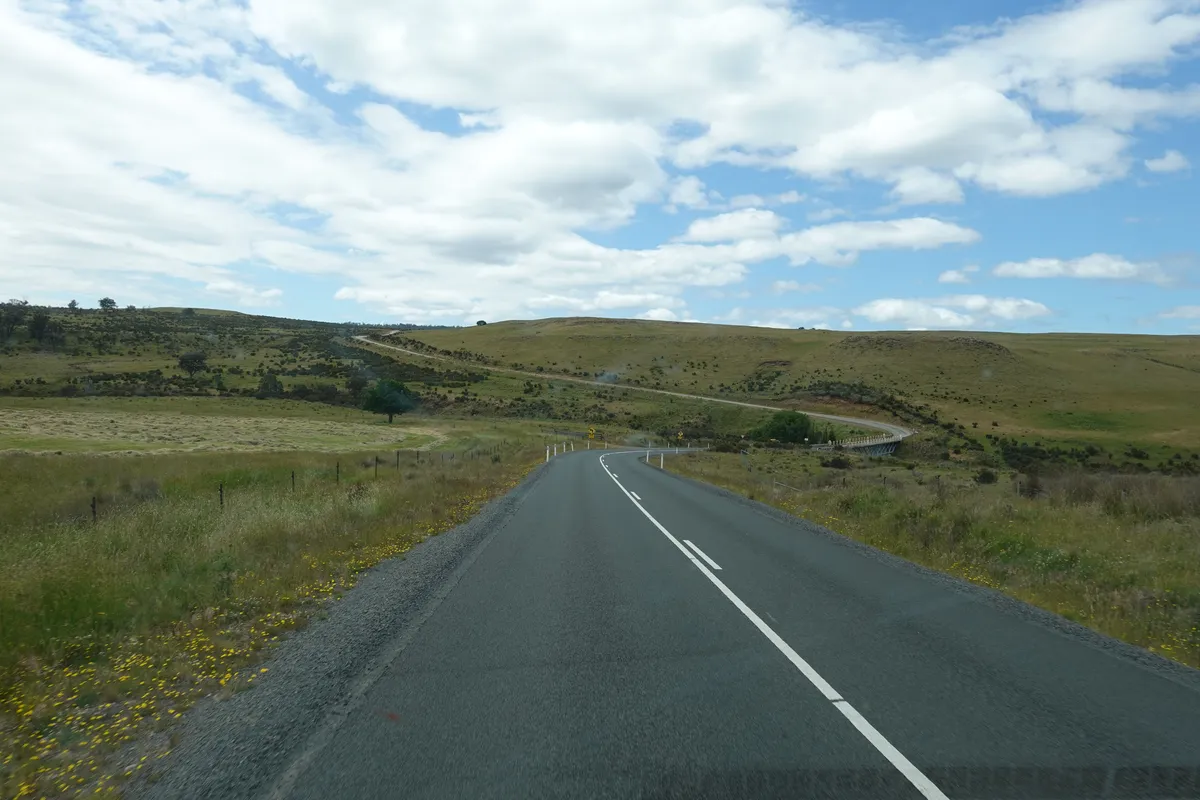
Westerway Raspberry Farm
Not long after Ouse we left the Lyell Highway for Ellendale Road to get to Mount Fields National Park. Just before the turn to Gordon River Road, we spotted Westerway Raspberry Farm and decided to stop for a look. There were a variety of berries for sale as well as the opportunity to pick berries across the farm. After skipping the last few berry picking opportunities we decided to finally try it out. The staff introduced us to the berries that were in season as well as the sections that had better berries across the farm. It was quite a large place and not quite possible to explore all corners so the tip was helpful. Beyond raspberries and strawberries, there were also silvanberries and tayberries, which we hadn’t came across before and are actually crosses between different berries.

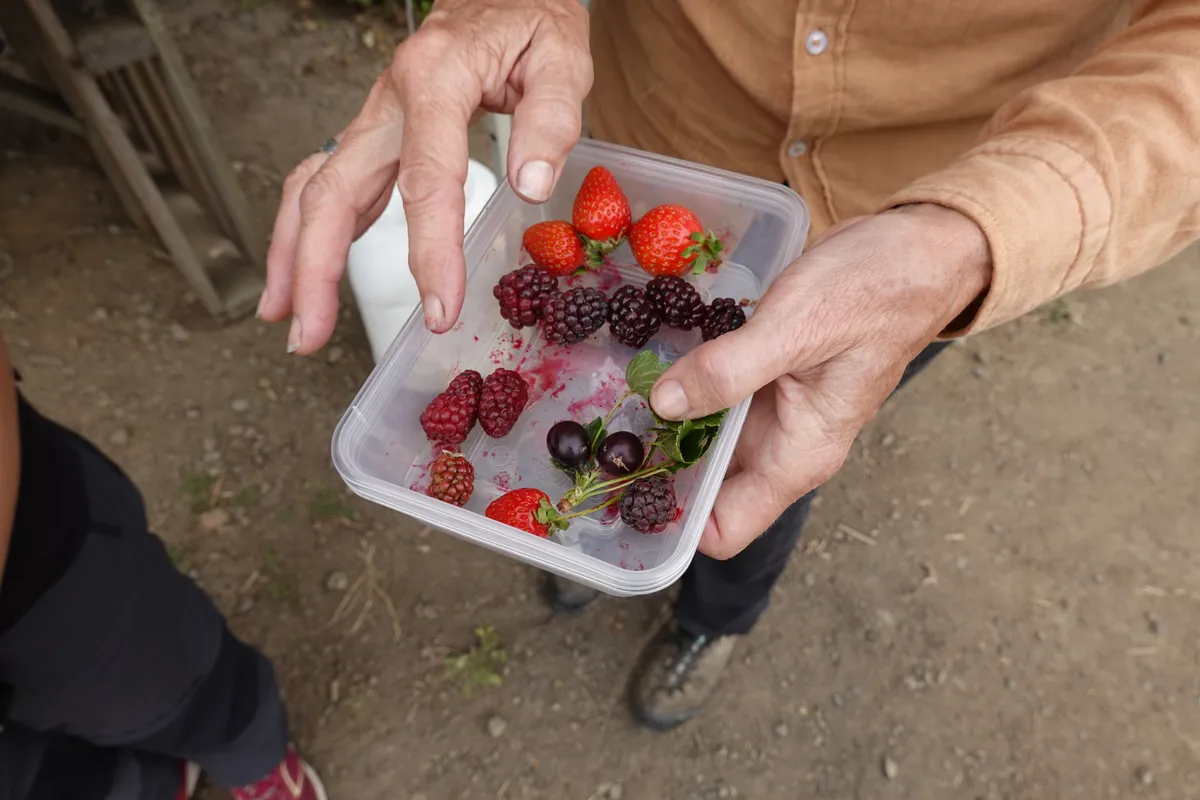
There were so many rows and so many berries it was a little overwhelming to start, but after sampling a few the task of picking the ones we’d like to get was a little easier. I really liked one of the crossed berries, though I can’t remember which one was it. Like a raspberry but sweeter and more fragrant. It was a lot of fun exploring the shrubs, tasting berries, and picking them.
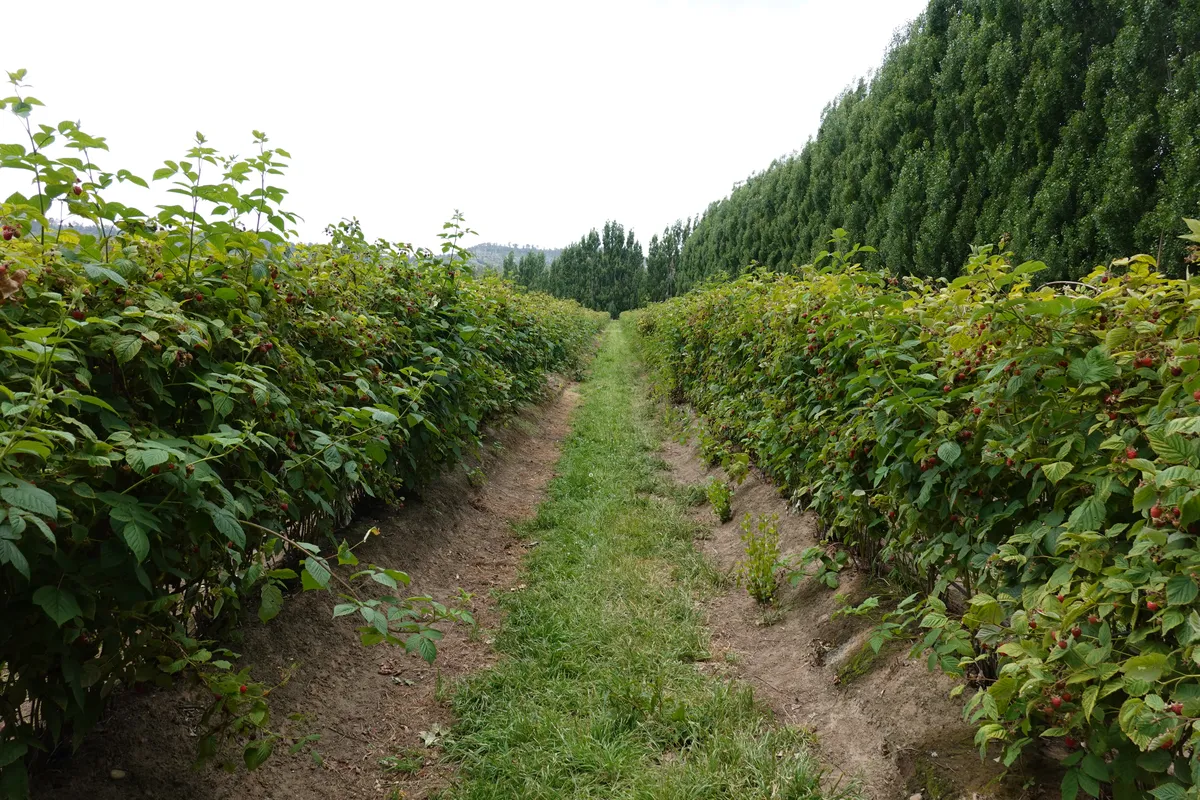
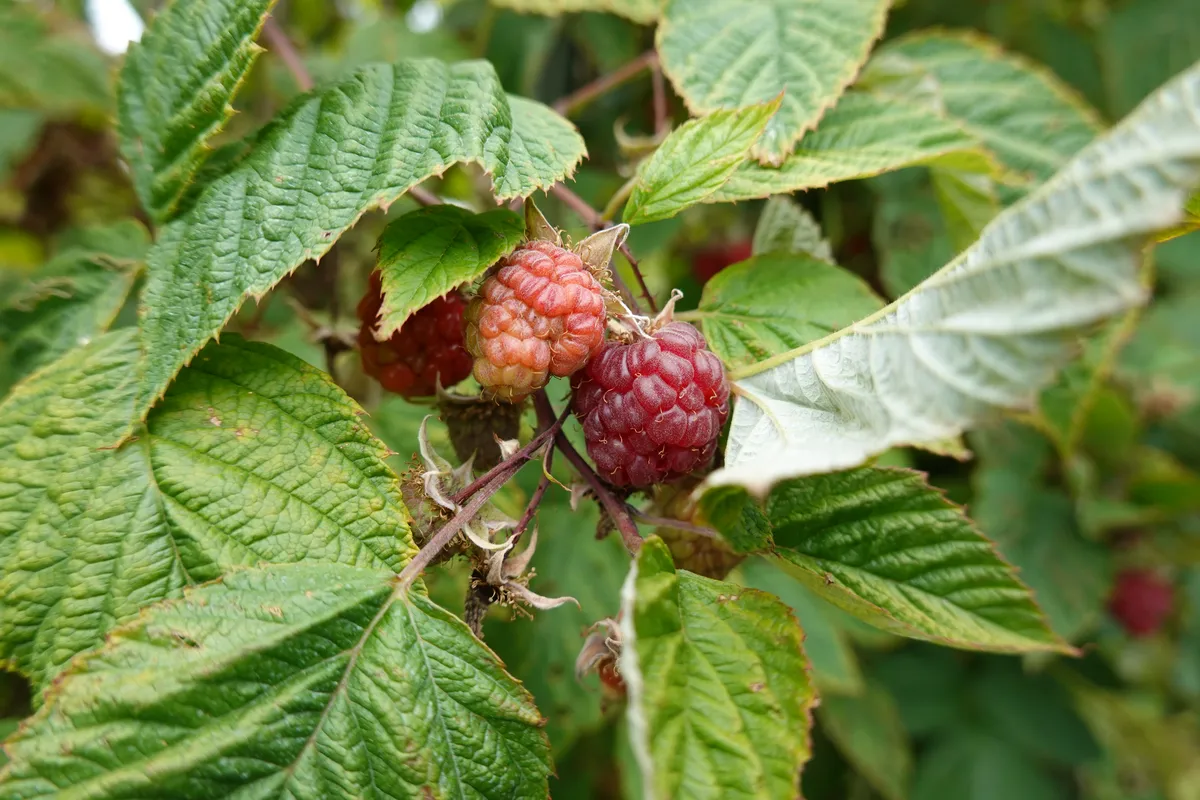

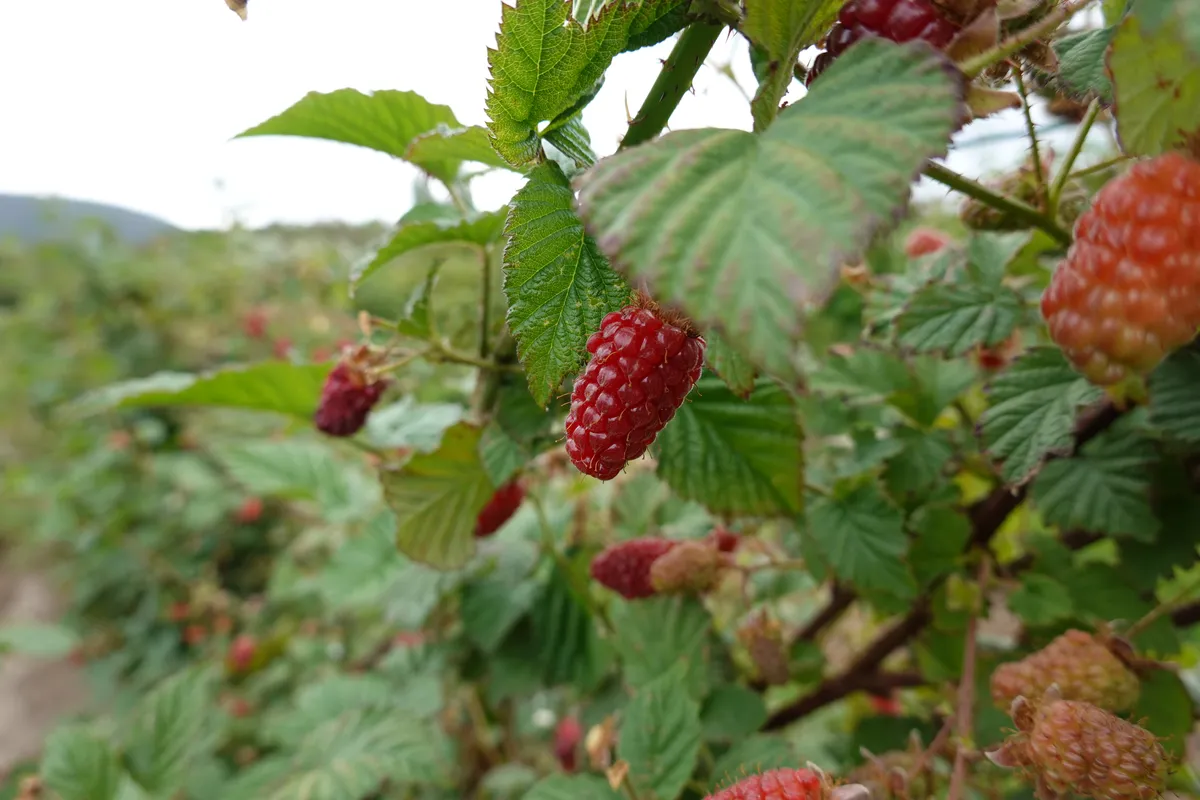
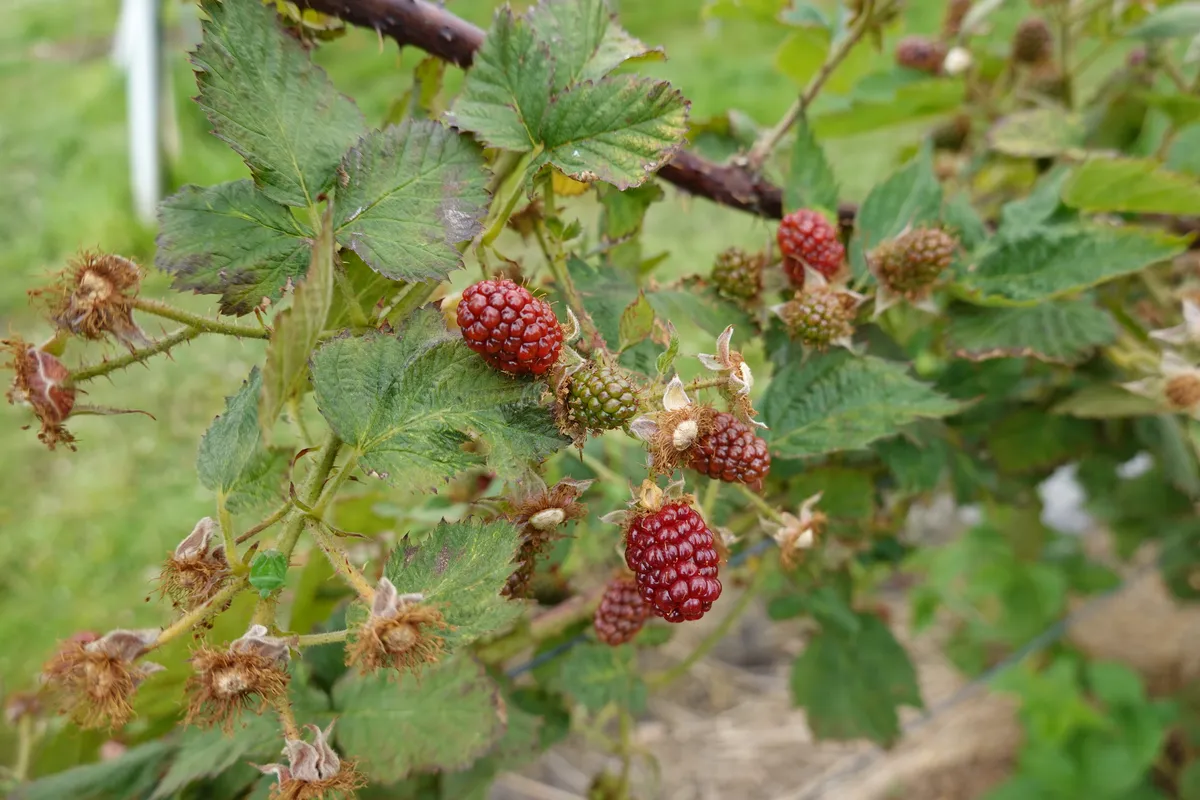
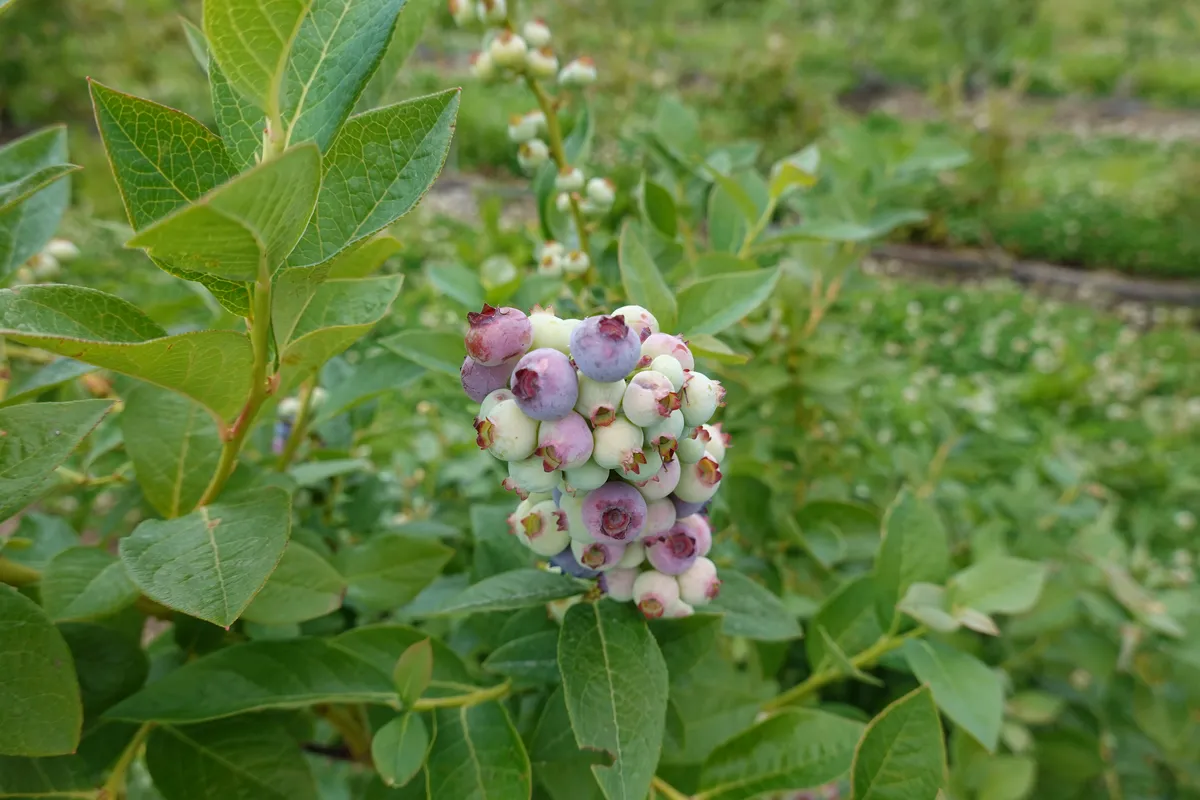
With our berry cravings satisfied (for now and more for the next couple of days), we completed the last stretch of driving for the day to get to our planned campsite at Mount Field National Park.
Cost: AUD$5 per person + AUD$18 per kg of any berries
Mount Field Campground
As the park office had closed, we had to first go to the campground to check if there were available lots, then go to the self-service booth to make payment. We were really lucky as there was just one lot left for the night, and it was a powered site. That was perfect as we planned to stay for 2 nights and having power would be really handy for things like the microwave or to run the electric heater at night. For our small van it wouldn’t have been a dealbreaker though, as we could run most of the van’s amenities (fridge, stove, water, usb charging) without being plugged in for a couple of days.
Like many other campgrounds at national parks in Tasmania, Mount Field Campground was a great one. It was beautifully situated between the edge of the forest and the river, with occasionally visiting wildlife. Facilities were clean and sufficient. The only issue we had were some sort of plan sap that rained upon the van from the trees above and were difficult to remove completely. If we were to ever visit again perhaps a tarp over the roof or some large garbage bag would be useful to limit the damage.
- Cost: AUD$16 for an unpowered site, AUD$20 for a powered site. Prices for 2 person per night. Additional adult (18+) at AUD$7 for unpowered site, AUD$9 for powered site. Additional child (5-17) at AUD$3 for unpowered site, AUD$4 for powered site. Family (2 adults and 3 children) at AUD$22 for unpowered site, AUD$30 for powered site.
- Parking: Unpaved but level ground.
- Facilities: Communal cooking area with sink, free electric BBQ, coin-operated laundry
- Hygeine: Basic but clean toilets. Hot showers available with tokens, AUD$2 for 4 minutes.
- Reservations: Mt Field campground does not accept reservations
- Website: https://parks.tas.gov.au/explore-our-parks/mount-field-national-park/mount-field-camping
Day 4 – Mount Field National Park
The events of the previous morning felt like a bad nightmare. We still had a missing window, but felt recovered enough to continue on our planned itinerary. It was another of the chill days where we planned some short walks in the morning and absolutely nothing in the afternoon. There are a few short walks starting from the Mount Field National Park visitor center to the 3 nearby waterfalls, each taking no more than an hour, or about 2-3 hours for all 3 waterfalls. We decided to do the Three Falls Circuit as well as the detour to the Tall Trees trail along the way.
There are also longer walks ranging from 2 to 9 hours which require a driver deeper into the national park that we didn’t attempt. The road beyond the visitor center appeared to be more rugged and we didn’t feel like going on a rugged drive over the 2 days we were there.
- Cost: Valid park pass required, no additional costs
Start of the Three Falls Walk
We did the Three Falls Walk in the clockwise direction, starting from the campground and ending at the visitor center. The first section had lots of stairs which we didn’t mind as it was at the start of the day. Better for the pain to come early. It was also nice being back in the forest in sunny weather. Not sure if fewer people come to this section or because it was earlier in the day that we didn’t see many others here. We stopped along the way to observe a curious pademelon and peek inside some huge trees that appeared burnt from the inside. Beyond the stairs, while the path was unpaved, it was was flat and manageable.
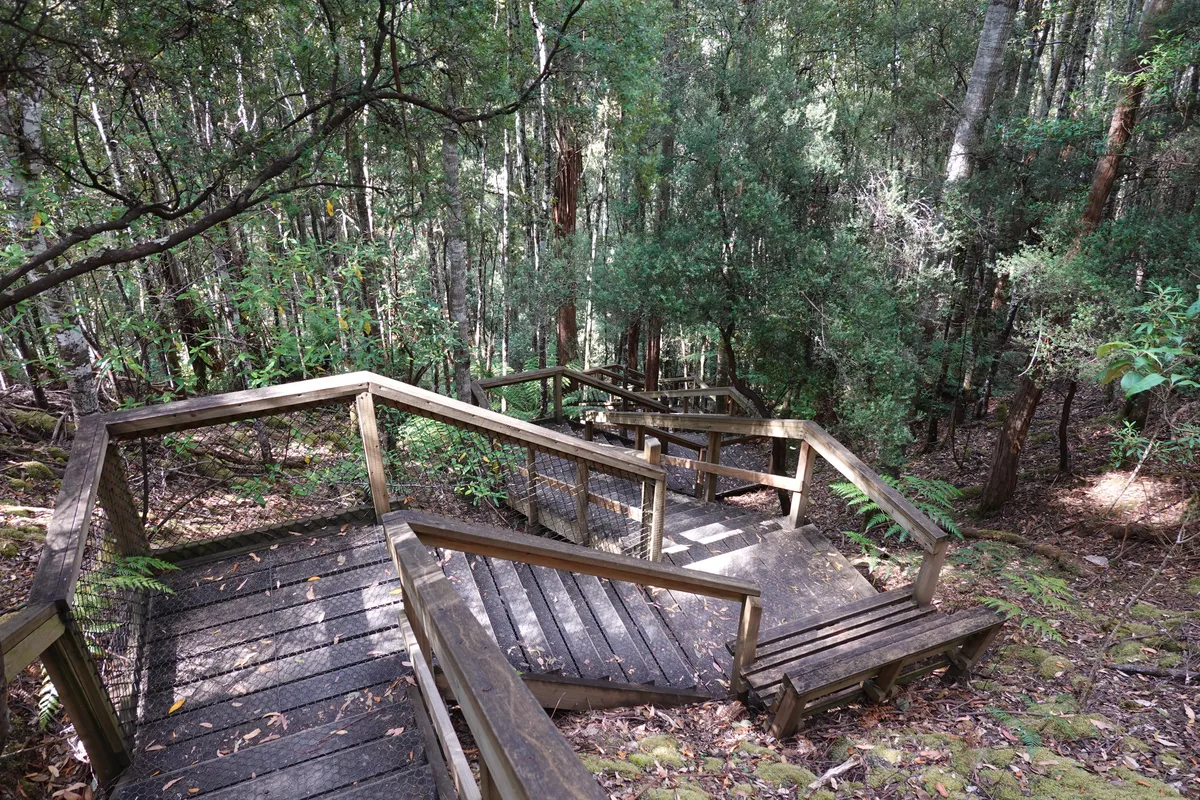
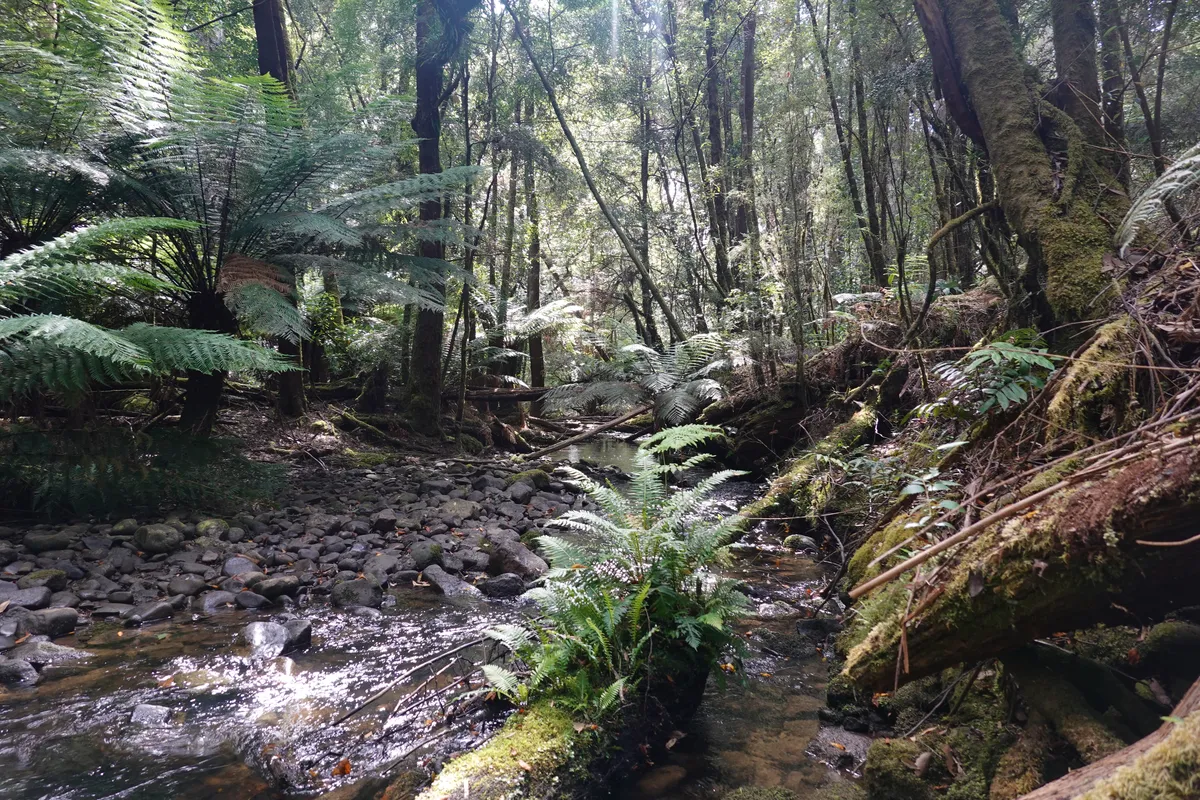
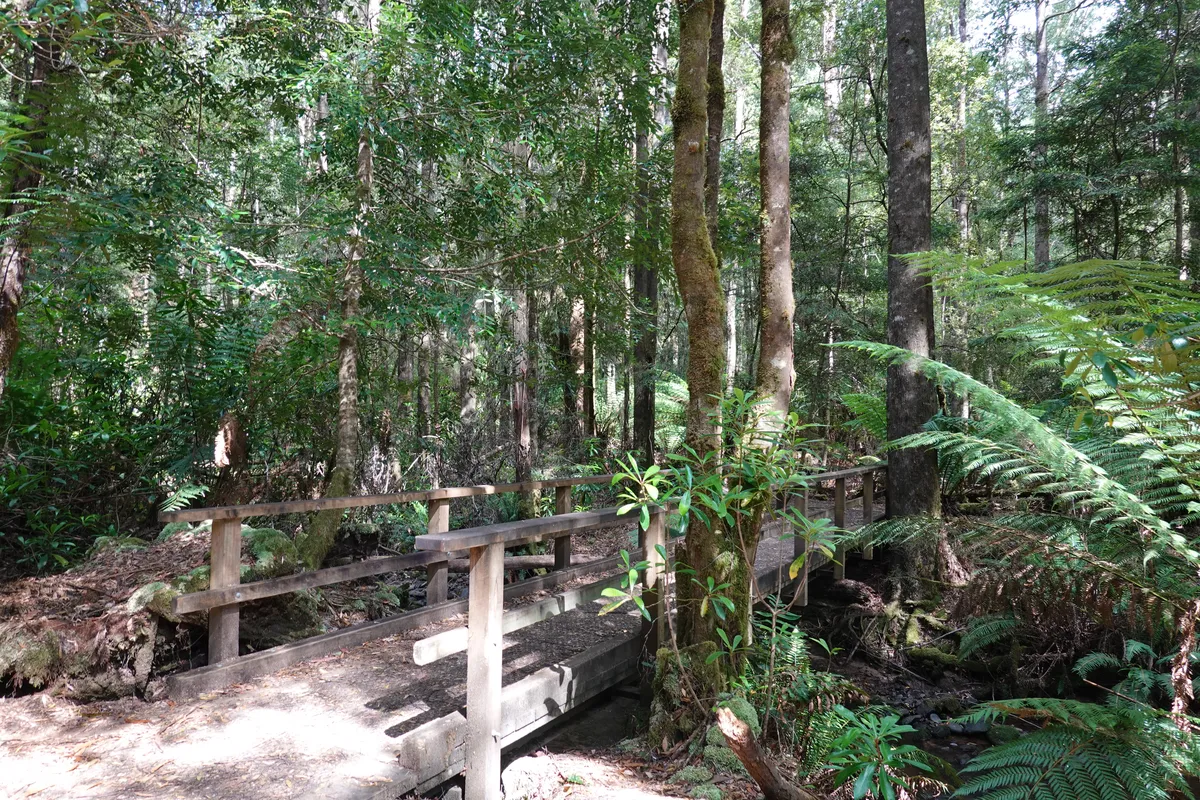

Lady Barron Falls
The first waterfall in this direction was Lady Barron Falls, nice little gently cascading three tiered waterfall. Not the most spectacular but surprisingly calming to watch. After Lady Barron Falls the trail meandered through the forest until it crosses Lake Dobson Road.
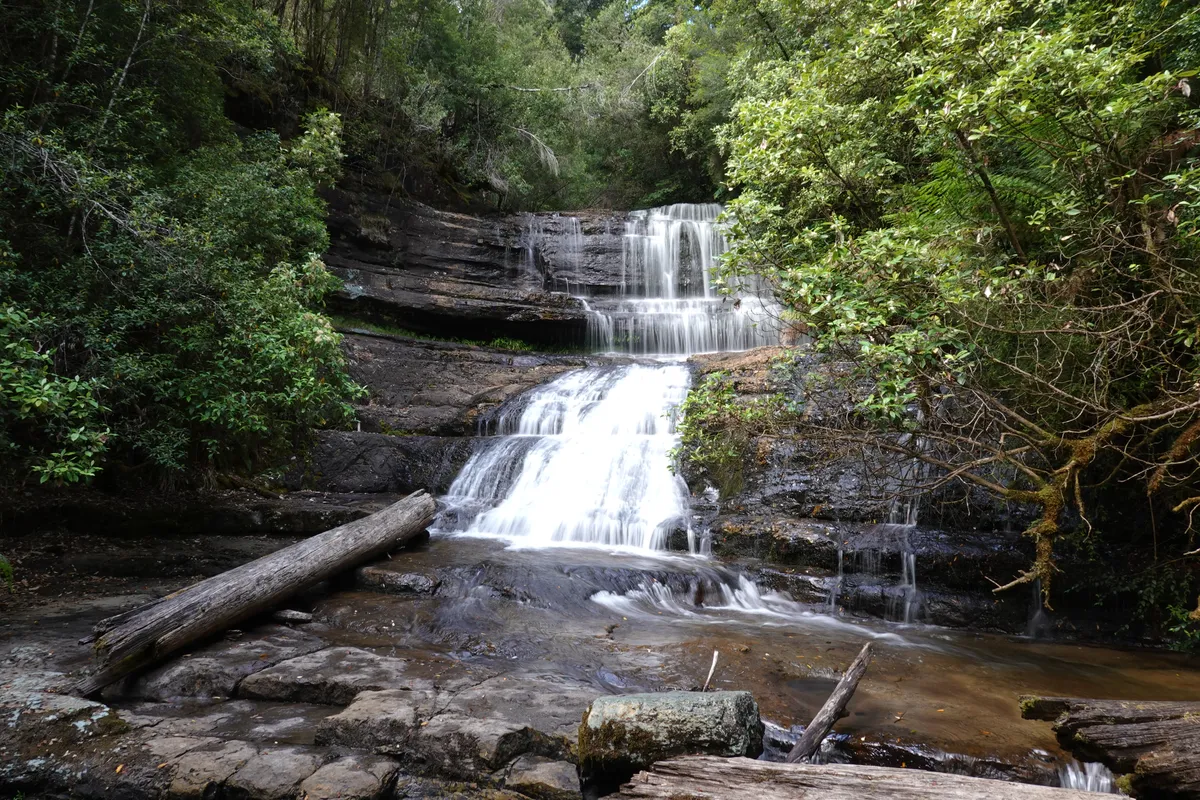
Tall Trees
The tall trees referred to here are the magnificent swamp gum trees, of which there are a number of fully grown ones in this area. Swamp gum, or mountain ash, is a member of the eucalyptus family. It is the tallest flowering plant in the world, reaching a hundred metres in height. These pictures don’t capture it, but it was awe-inspiring walking around the base of these giants, and impossible to even steal a glimpse of the top of them.
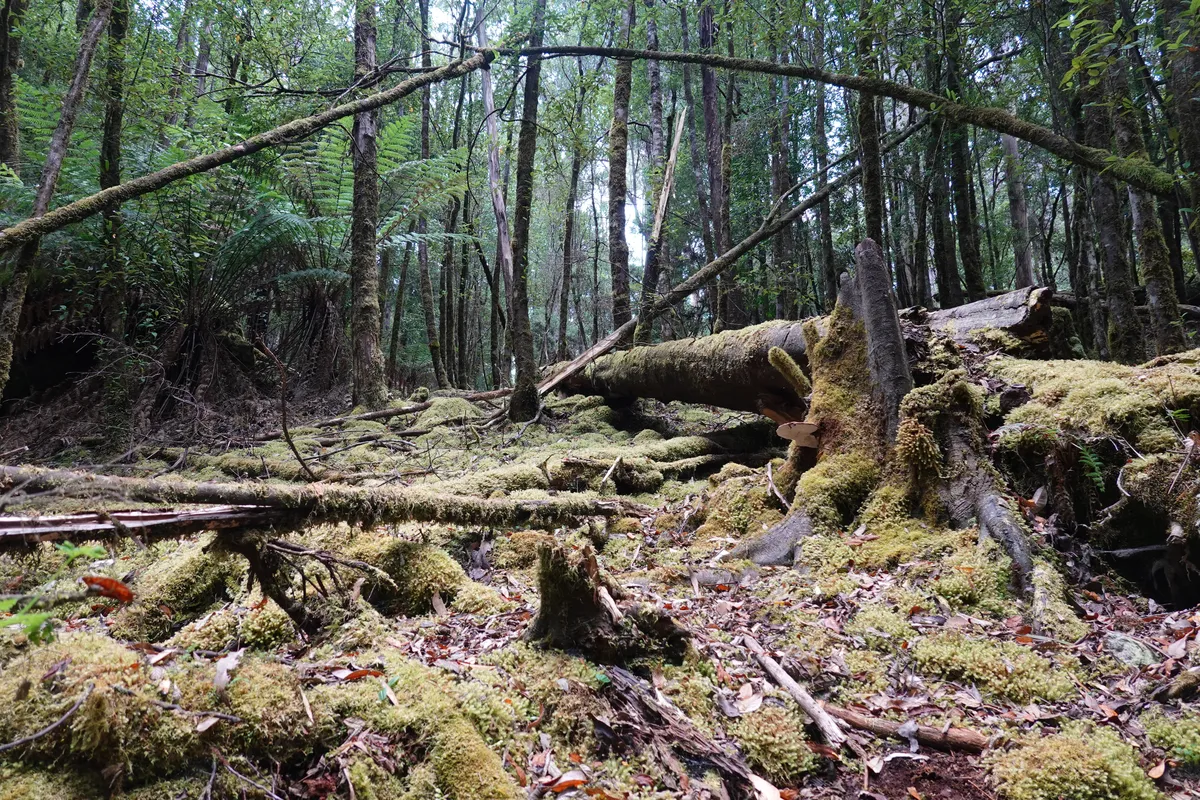
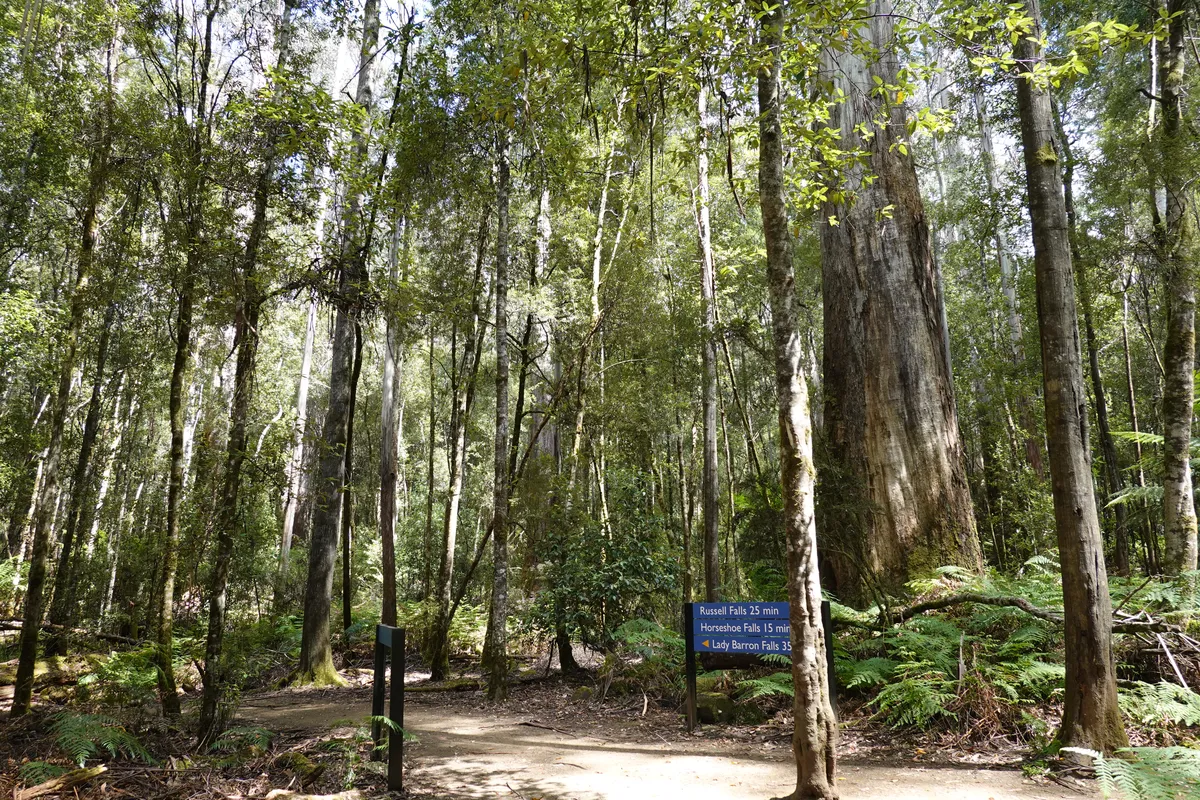
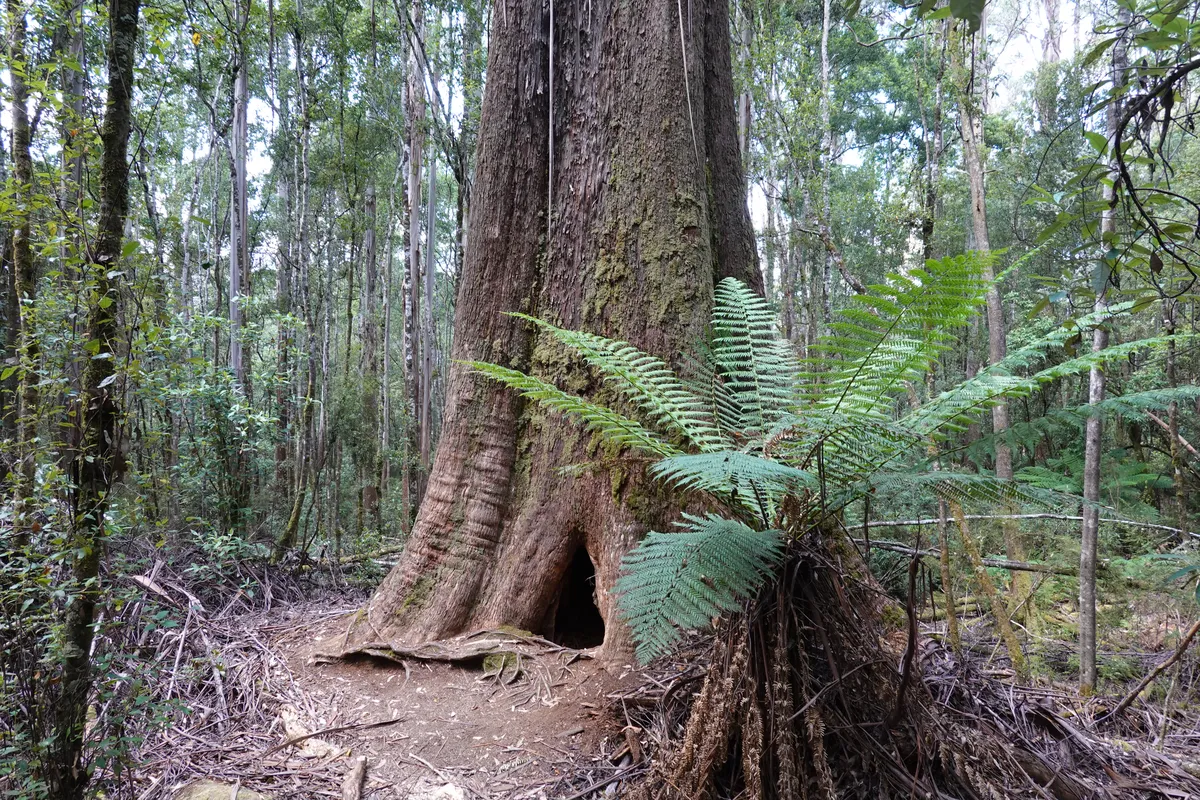
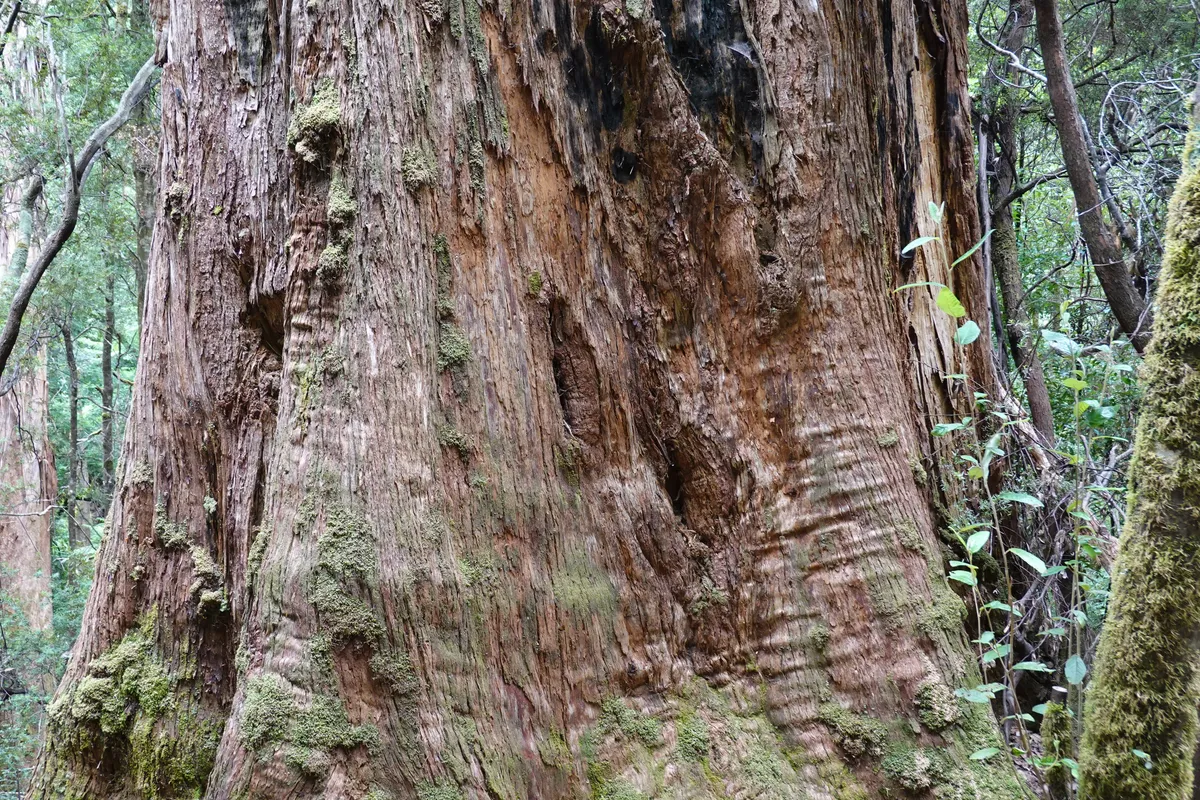


Horseshoe Falls
After the loop around this section, we got back onto the main Three Falls trail and soon arrived at Horseshoe Falls, an incredibly beautiful waterfall surrounded by lush foliage. It was really nice watching the streams roll off the rockface and flowing across the rocks towards the viewing platform. Beyond the viewing platform the stream plunges off a cliff, probably the top of the next waterfall.
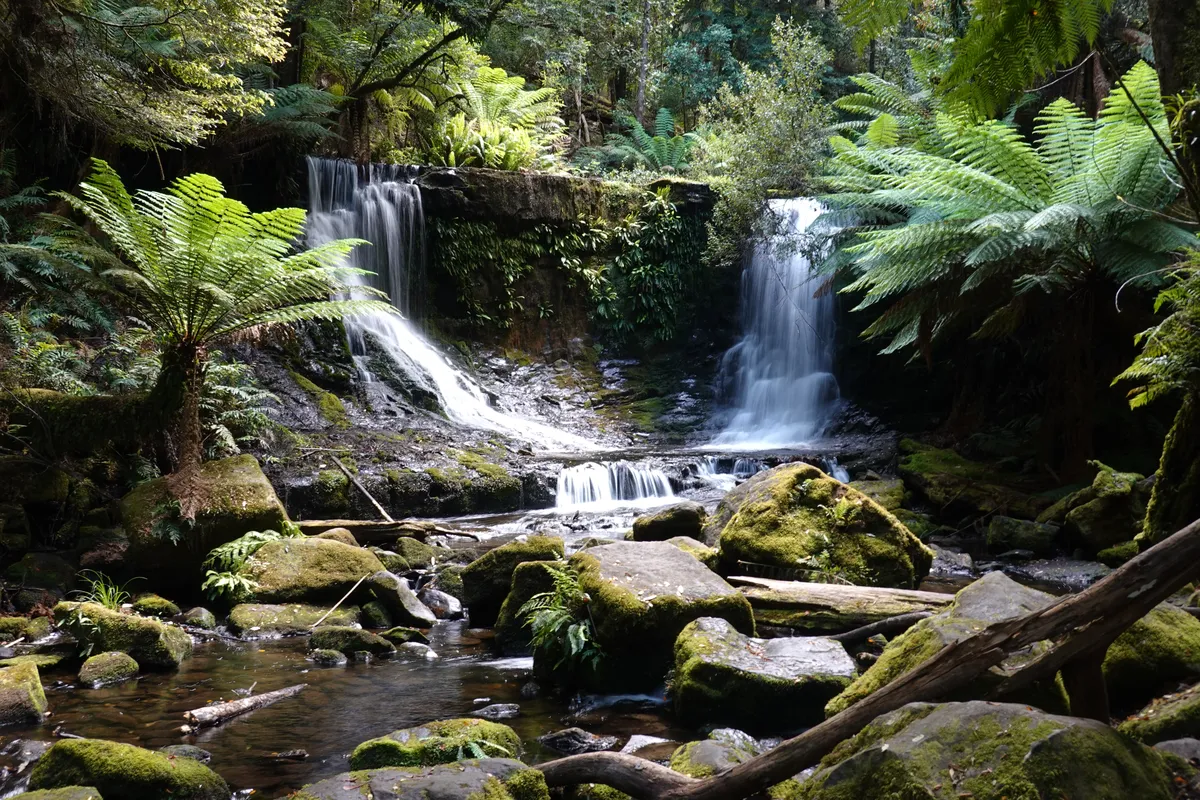
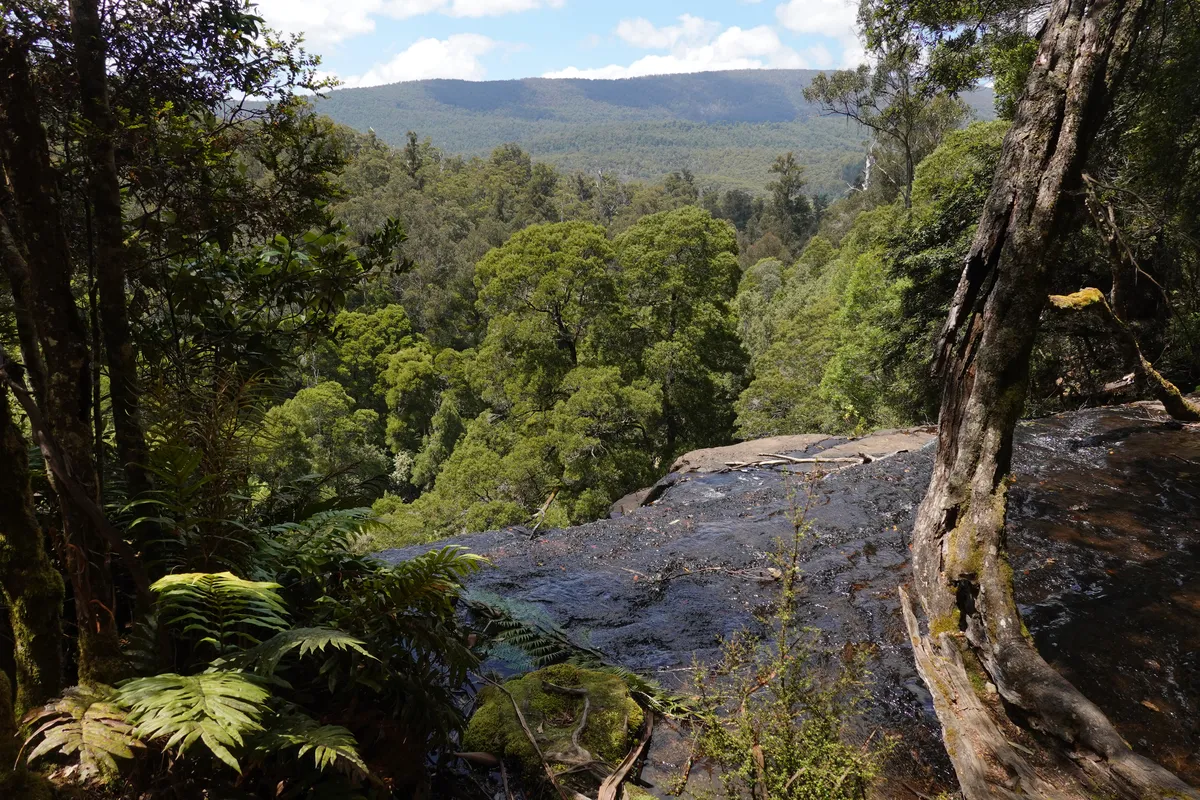
Russell Falls
Just a couple more steps from Horseshoe Falls is Russell Falls, the highlight of Mount Field National Park. I wasn’t sure what to expect but the first few glimpses blew me away. It was spectacular tiered waterfall, so huge that the second level had trees growing on it. I wouldn’t have been surprised if Jewel at Changi Airport or the Cloud Forest at Gardens by the Bay had been inspired by this stunning sight. No wonder people come from all over to see this. Might also have been helped by the wheelchair accessible route all the way to the base of Russell Falls.
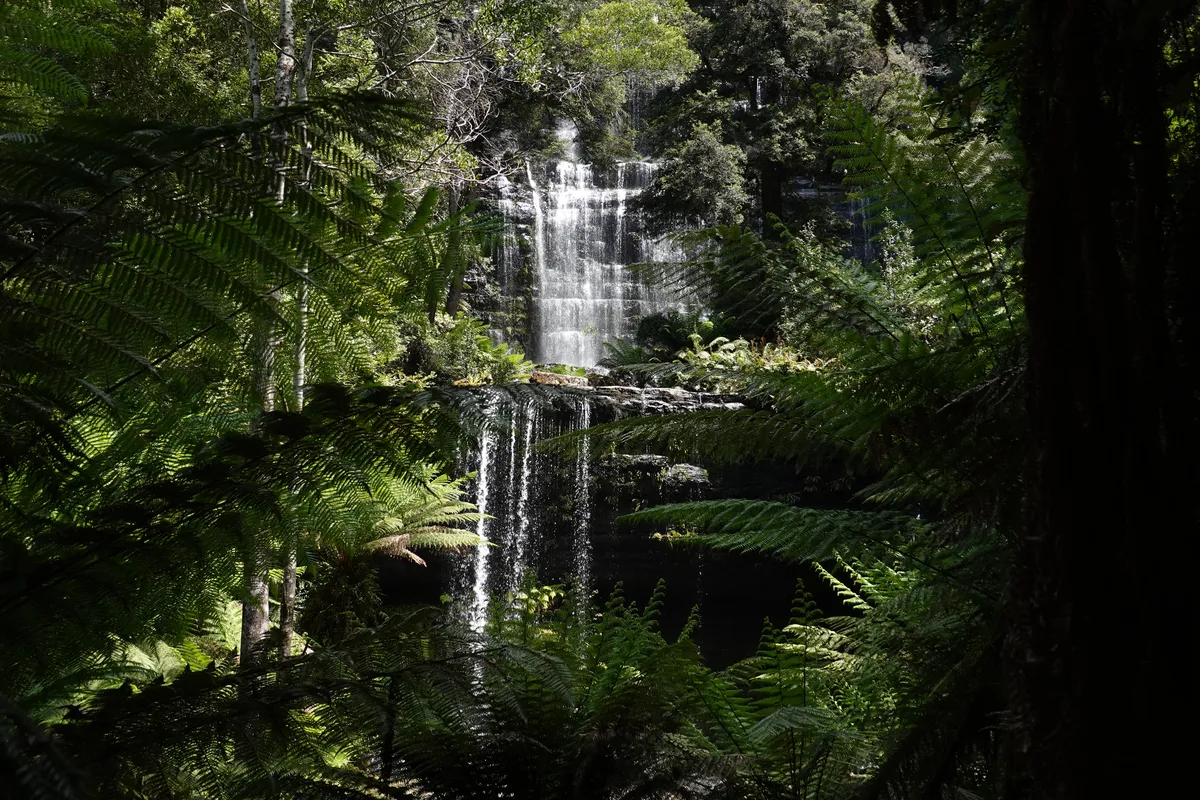

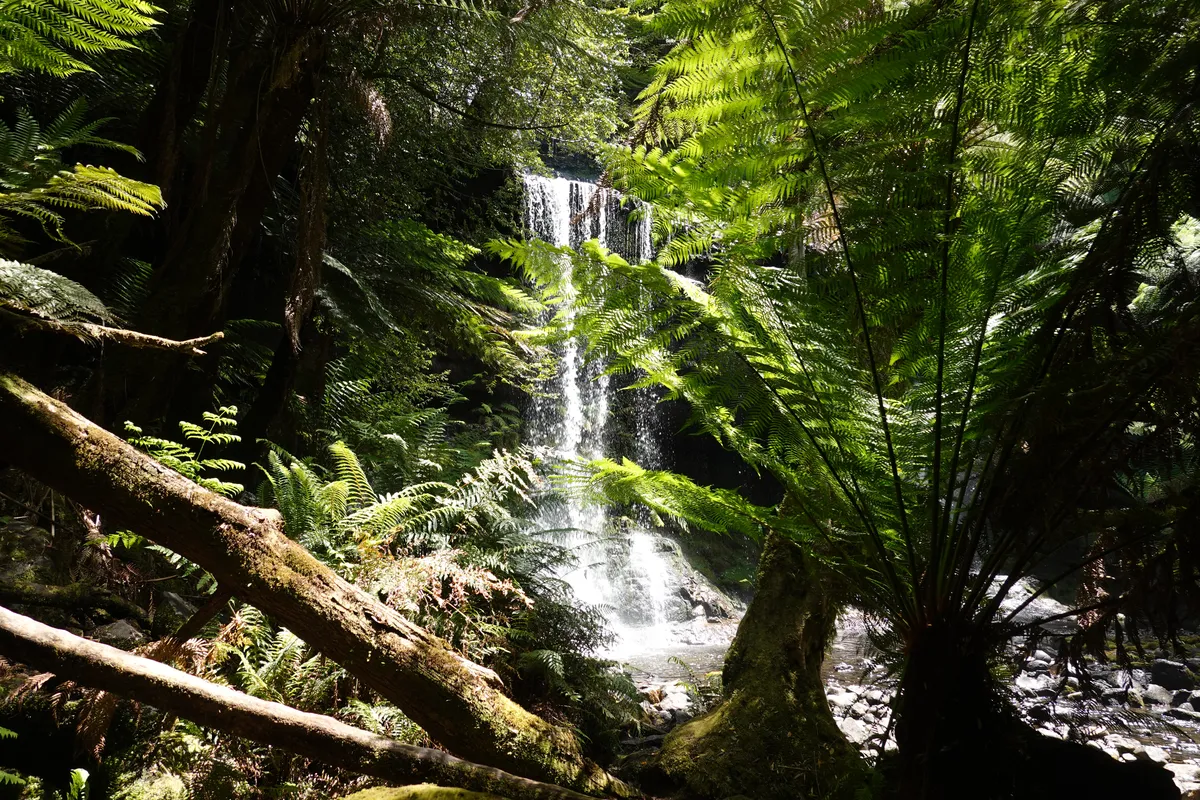
Mount Field Visitor Center
The stretch between Russell Falls was more of what I had been expecting of a beautiful national park like this – lots of families and children getting closer to nature. At the visitor center, there was a display set up by park rangers to educate visitors more on the animals and plants found in Mount Field National Park. Like many of the other national parks in Tasmania, Mount Field has a discovery ranger program where visitors can participate in free educational activities at the national park. For that day (new year’s eve), other than the educational display, there was also some quiz night happening at the campground in the evening, and a night spotting tour after dark. After learning more about the animals, we decided to return later that day for the night spotting tour. But first, a long lazy nap for the sunny afternoon in the campervan beneath the trees.
Tyenna River and Mount Field Visitor Center Day Use Area
After dinner, we had a nice walk along the river till the day use area. As with all slow rivers crossed in Tasmania, I kept a lookout for platypus, but without luck this time.
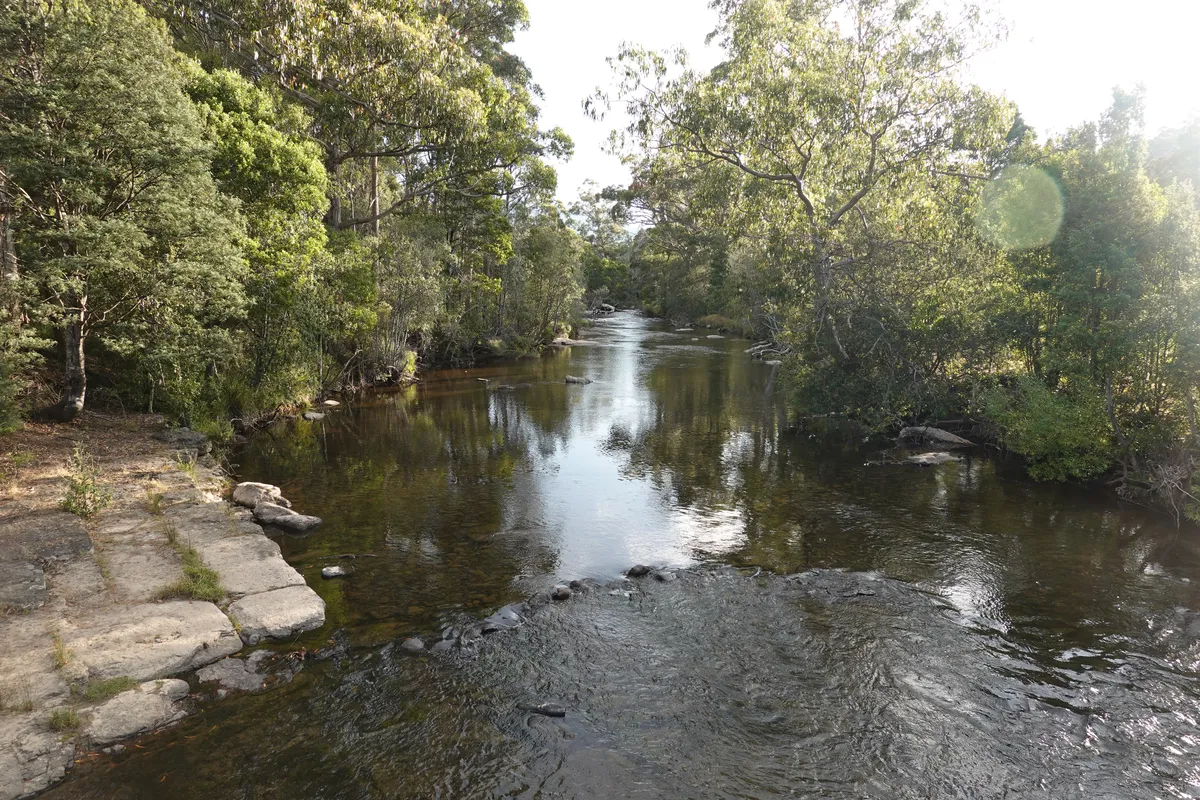
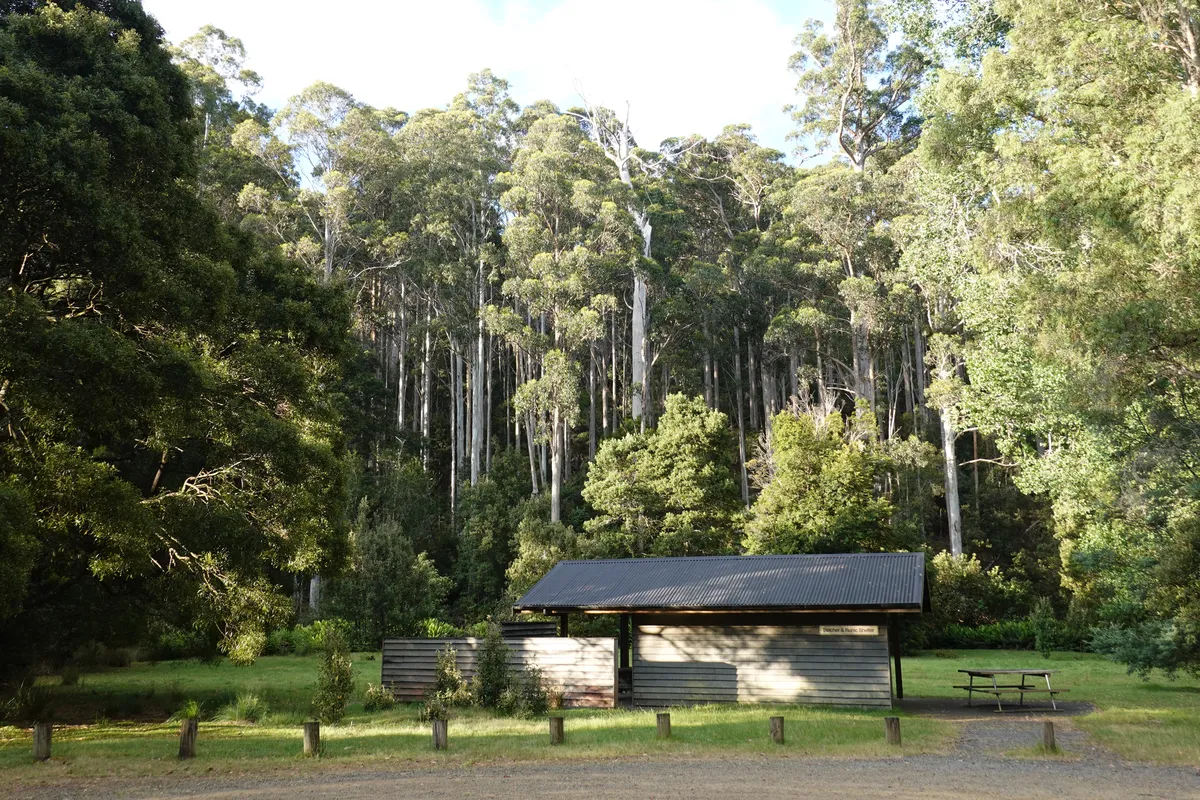
Night Spotting Tour at Mount Field National Park
The tour began with an information session in one of the visitor center’s rooms, where learnt about the animals we might spot, how they looked like stuffed, and how they would look like deboned. Mostly a fun session for the kids to answer questions, but also for us to learn more about Tasmanian wildlife. After that, we headed out, just to the field beyond the visitor center, where we spotted pademelons and wallabies, and then to the trail up to Russell Falls, where we spotted possums. No luck with the Tassie devils so far. It was a fun night activity and awesome that it was free, especially after our other hefty night spotting tour at Cradle Mountain. Caught some of the action on video but none of photos, so here are some from the indoor session.
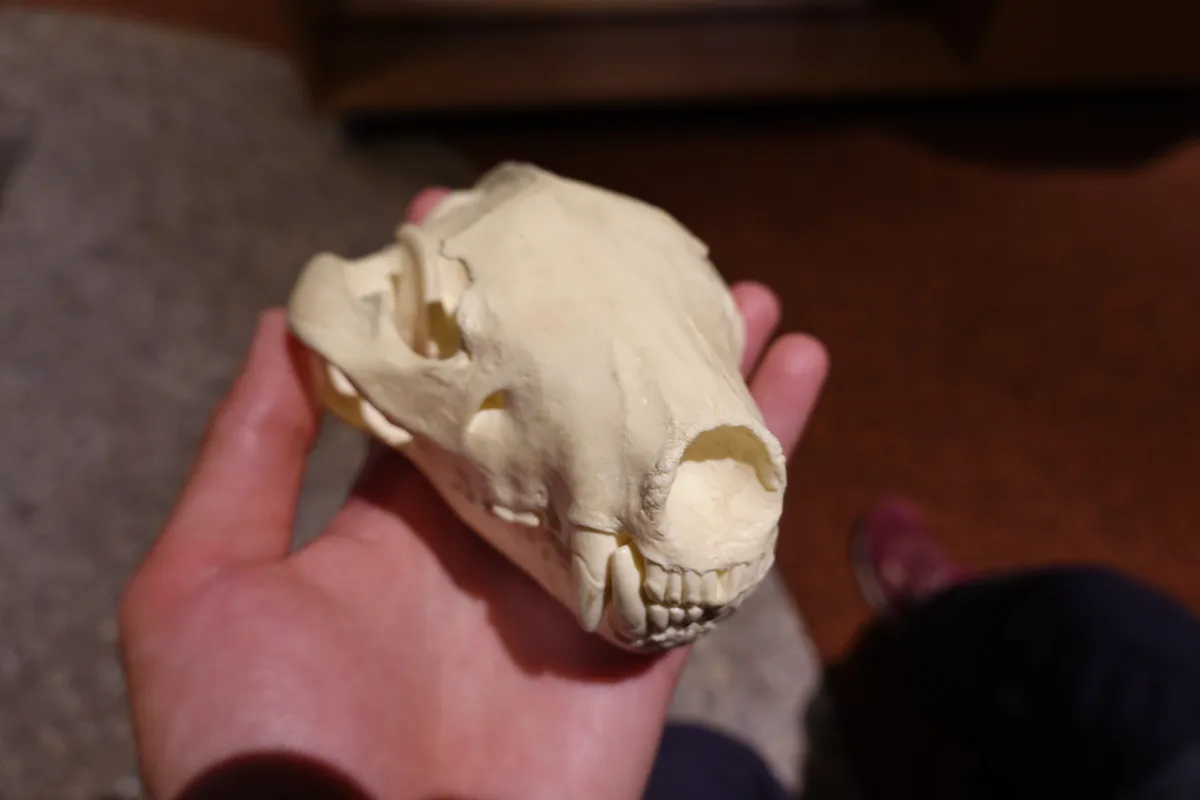
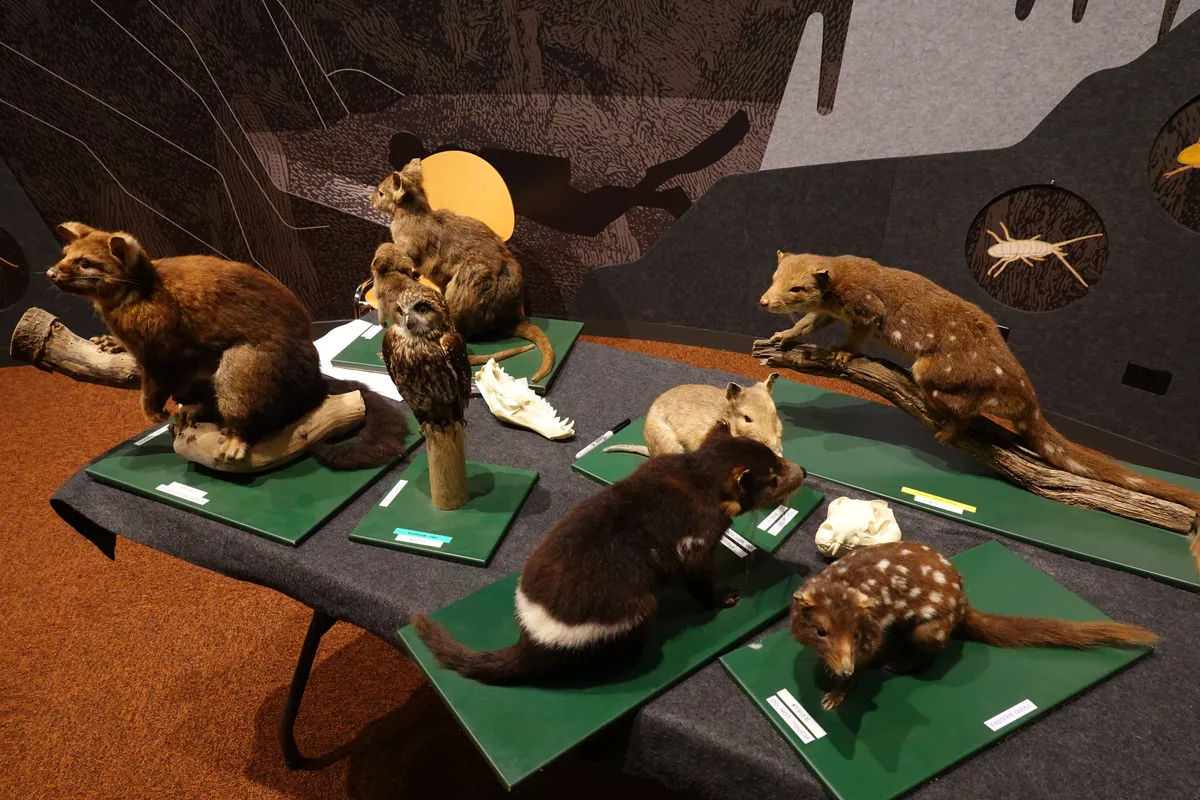
Day 5 – New Norfolk and Huon Valley
New day, new year, and time for new adventures. We continued our journey to the east along the River Derwent till we met the sea at Hobart, then turned south towards Huon.
Plenty Park Fruit Farm
The drive along the River Derwent through the countryside was beautiful. We chanced upon a cherry farm and decided to stop for a look. The freshly picked cherries looked irresistible, and we bought a small quantity. The next couple got a really large box of it, and dove straight in upon reaching their vehicle. The cherries were great, but unfortunately as it was a completely unplanned stop I didn’t take down any details of the place and forgot the name. I think it is most likely Plenty Park Fruit Farm though, just a short distance from the Salmon Ponds in Plenty.
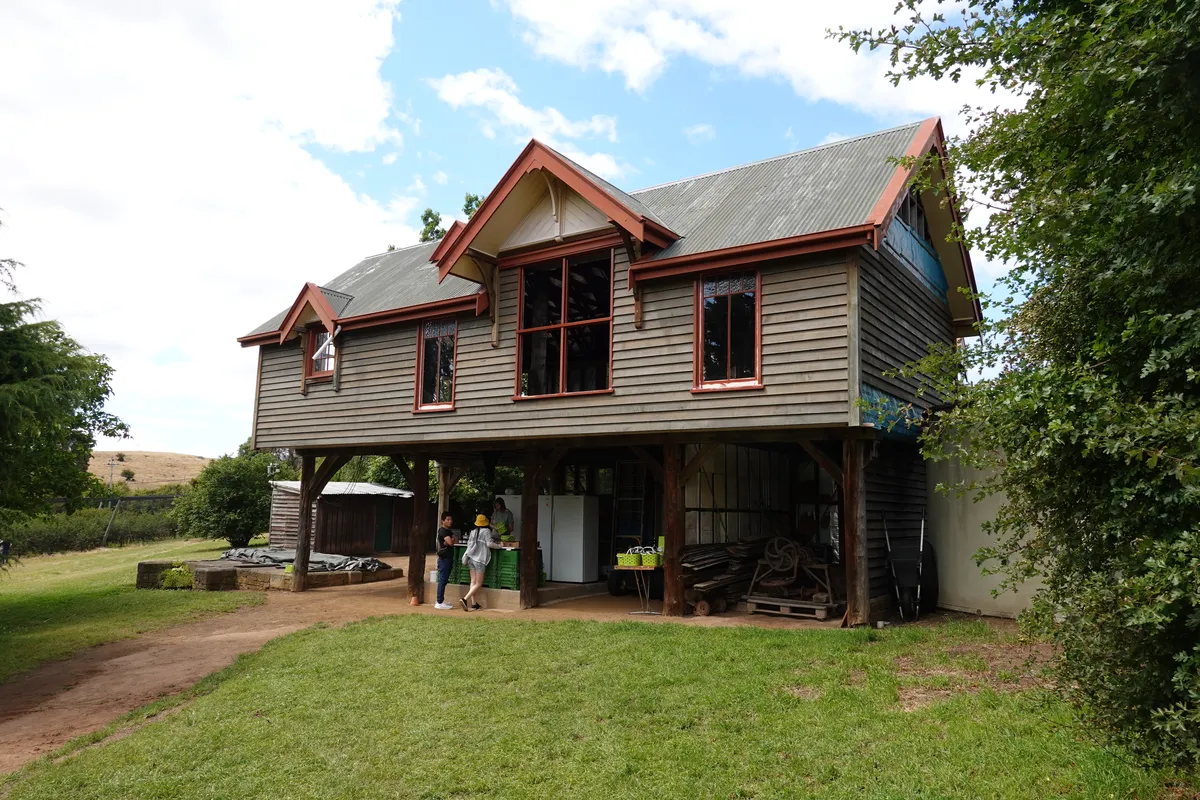
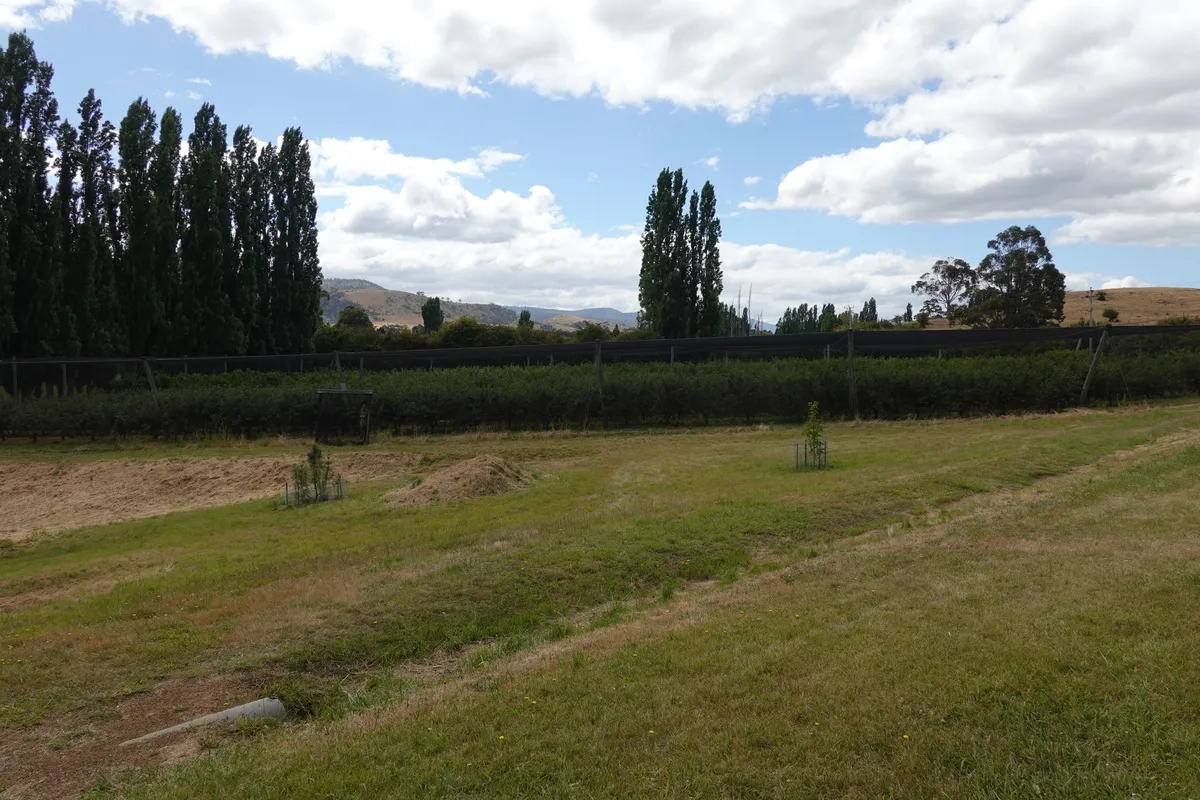
Salmon Ponds and Museum of Trout Fishing
The Salmon Ponds at Plenty is another place of historic significance not just to Tasmania but also to Australia. Trout brought by the Europeans were first established here in the 1860s before being introduced across Australia and New Zealand. The Salmon Ponds were developed by the Europeans originally as a salmon hatchery to introduce salmon to the Tasmanian ecosystem. However, the migratory salmon never returned after they were released and the Europeans had better luck introducing trout instead. Today, the site functions more as a park and living museum, where you can explore the various species of trout in the different ponds, walk the European style gardens, check out the hatchery and visit the old buildings repurposed as museums. We even spotted a platypus in one of the ponds!
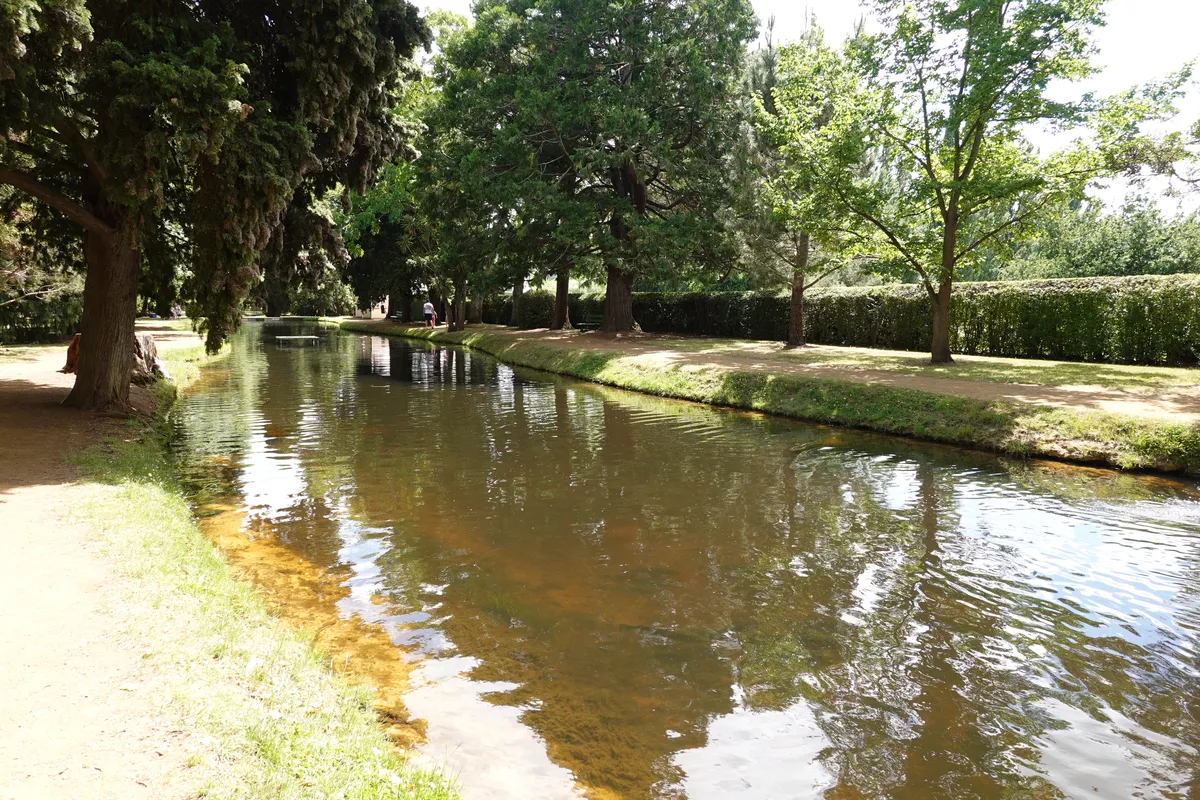
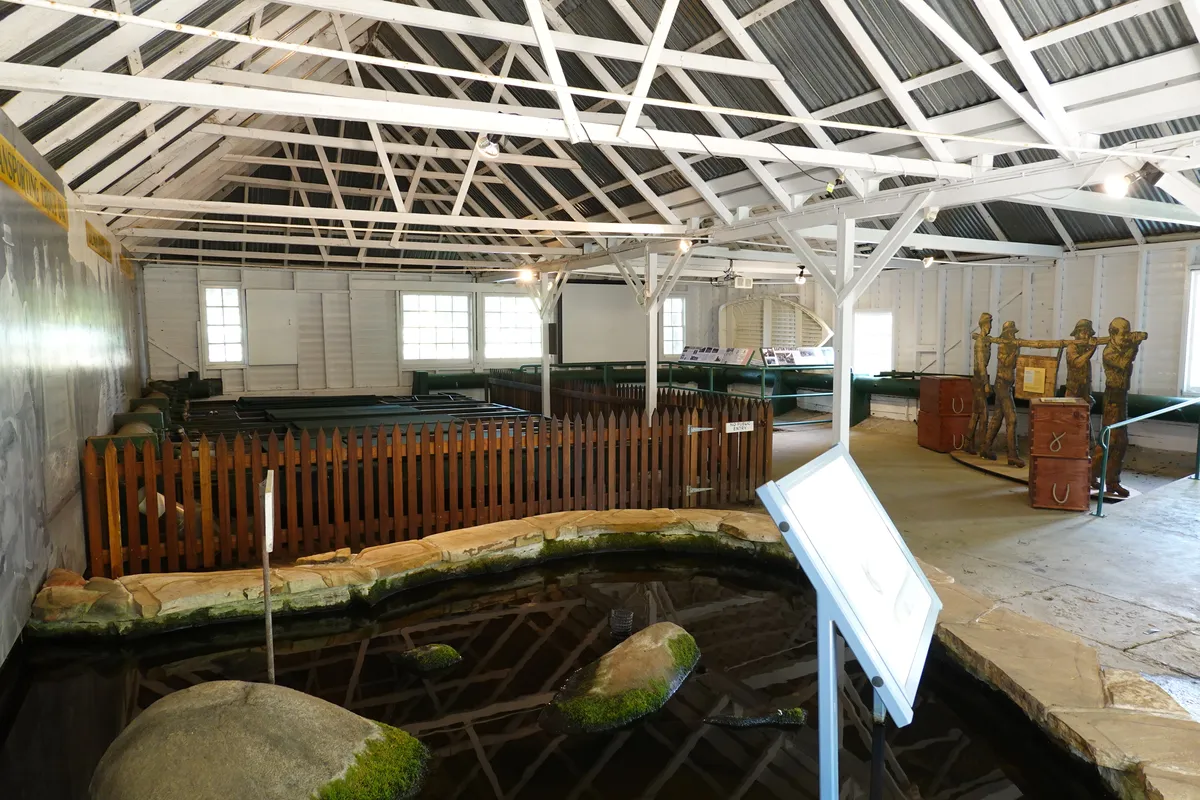
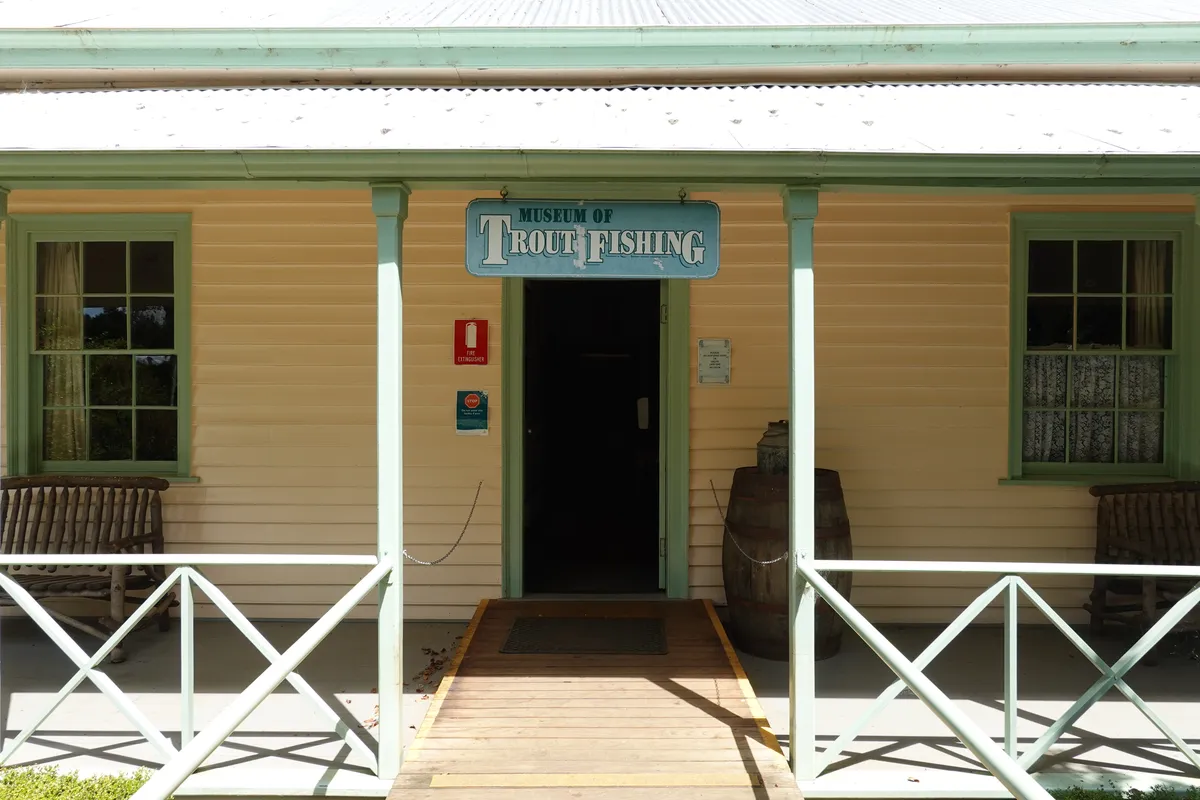
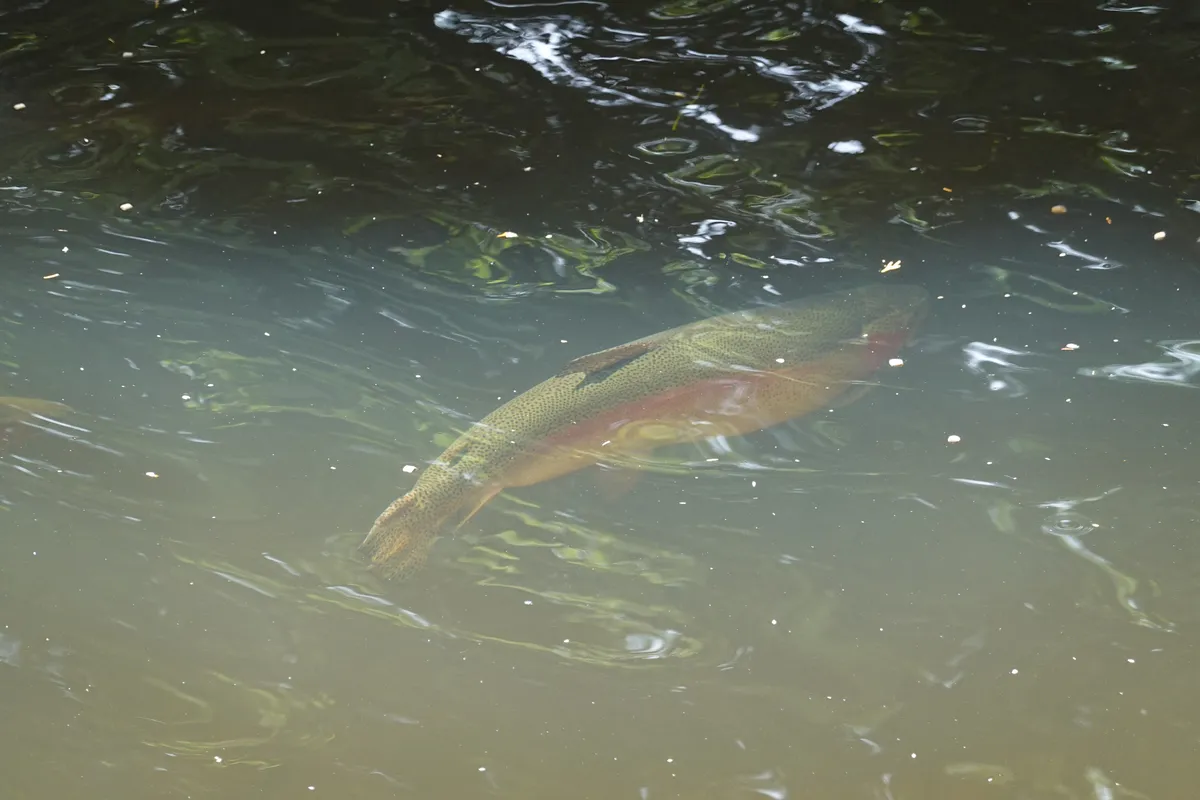
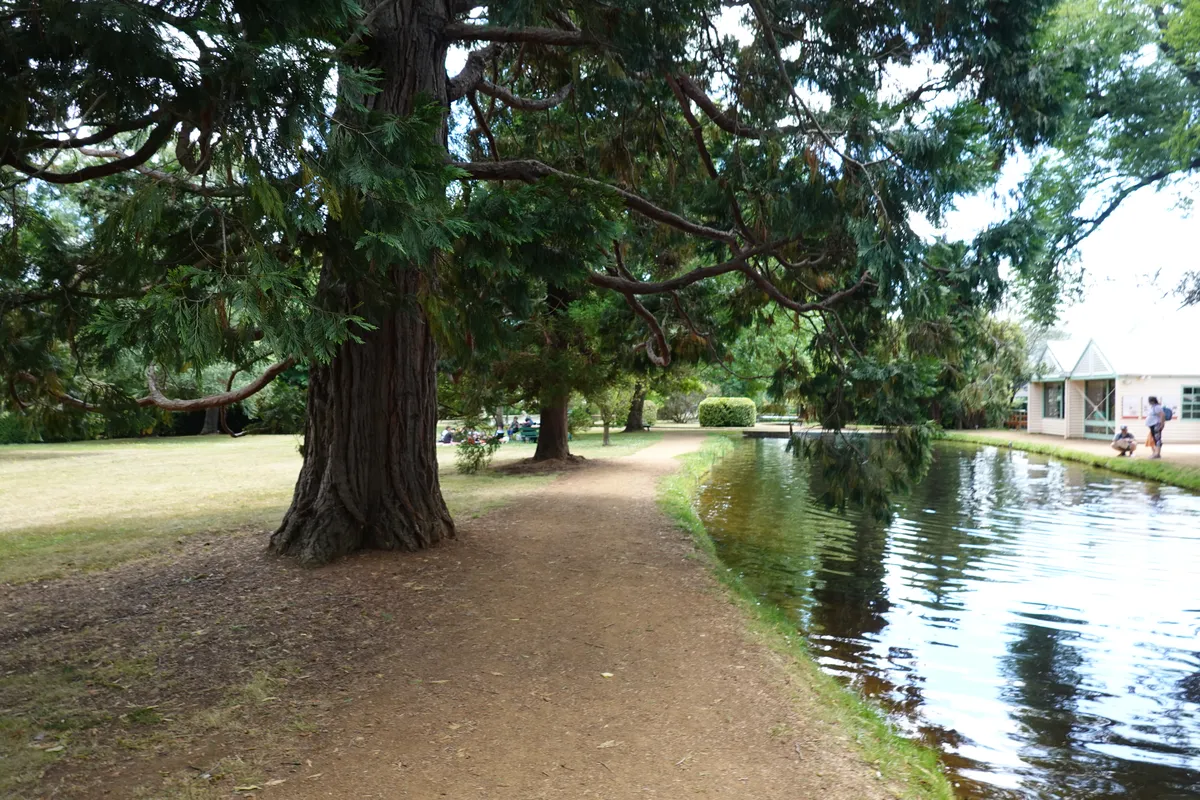
New Norfolk
In another 10 minutes down the road from the Salmon Ponds, we stopped at New Norfolk for lunch and a bit of exploration. New Norfolk is a small town along the River Derwent, known for its historic buildings and antique shops. Lots of old stuff, and a lovely place for a walk.
Willow Court Antique Centre
Willow Court Antique Centre is a sprawling antique shop with a huge variety of items, from antique vehicles to dinnerware, decorative items to practical ones. The items are somewhat categorised into different sections. We had lots of fun (and spent quite a bit of time) exploring the different sections. Would have loved to get a souvenir but unfortunately did not find anything suitable in that visit.
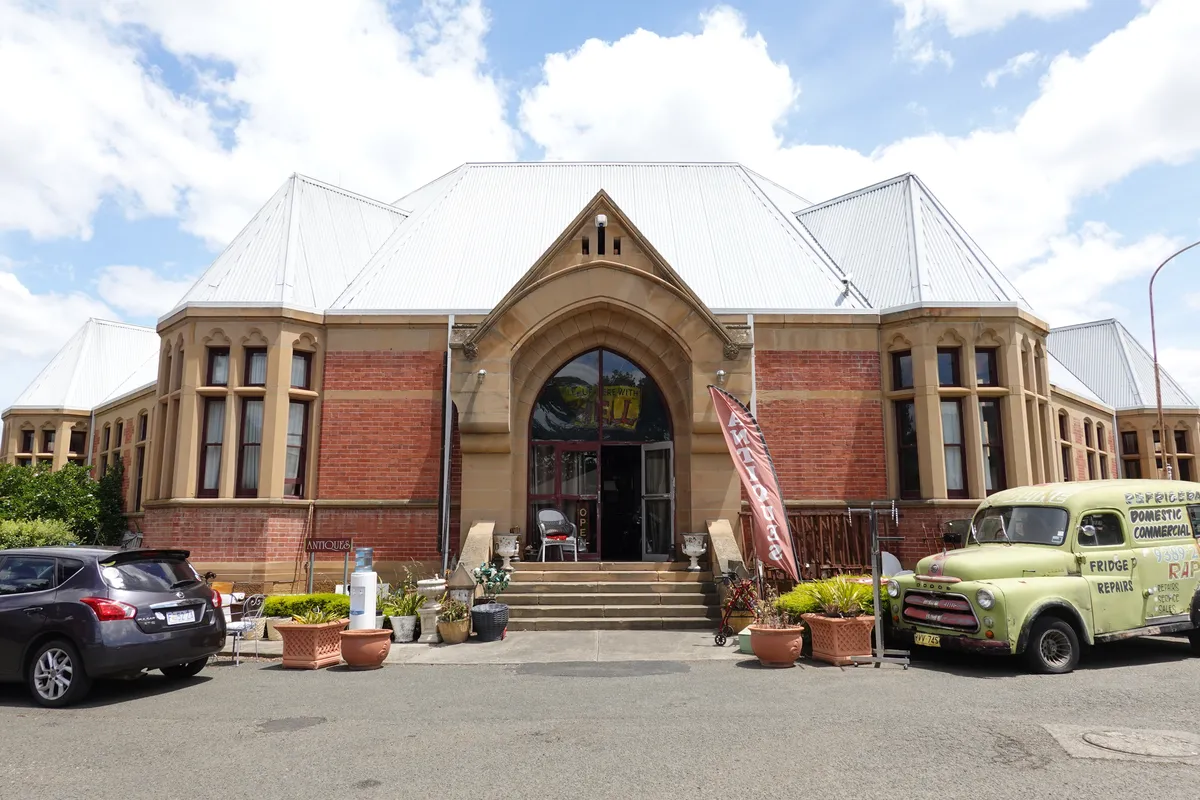
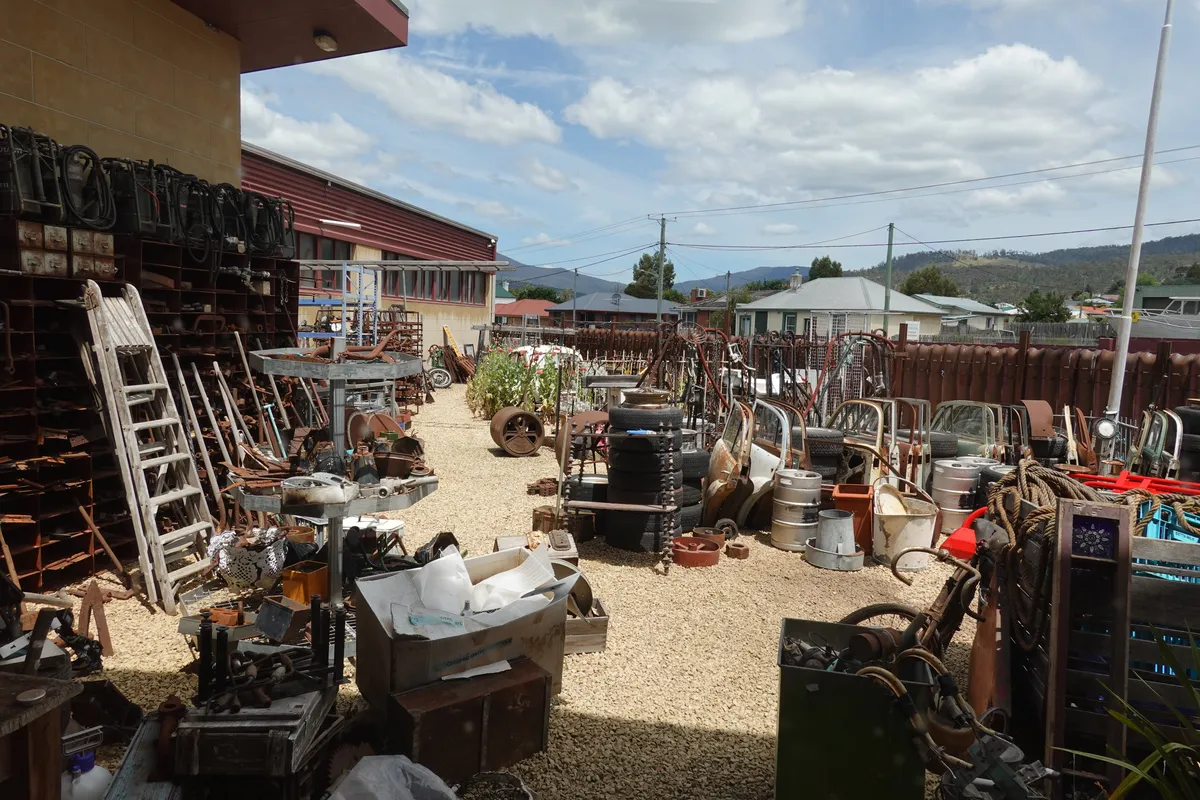
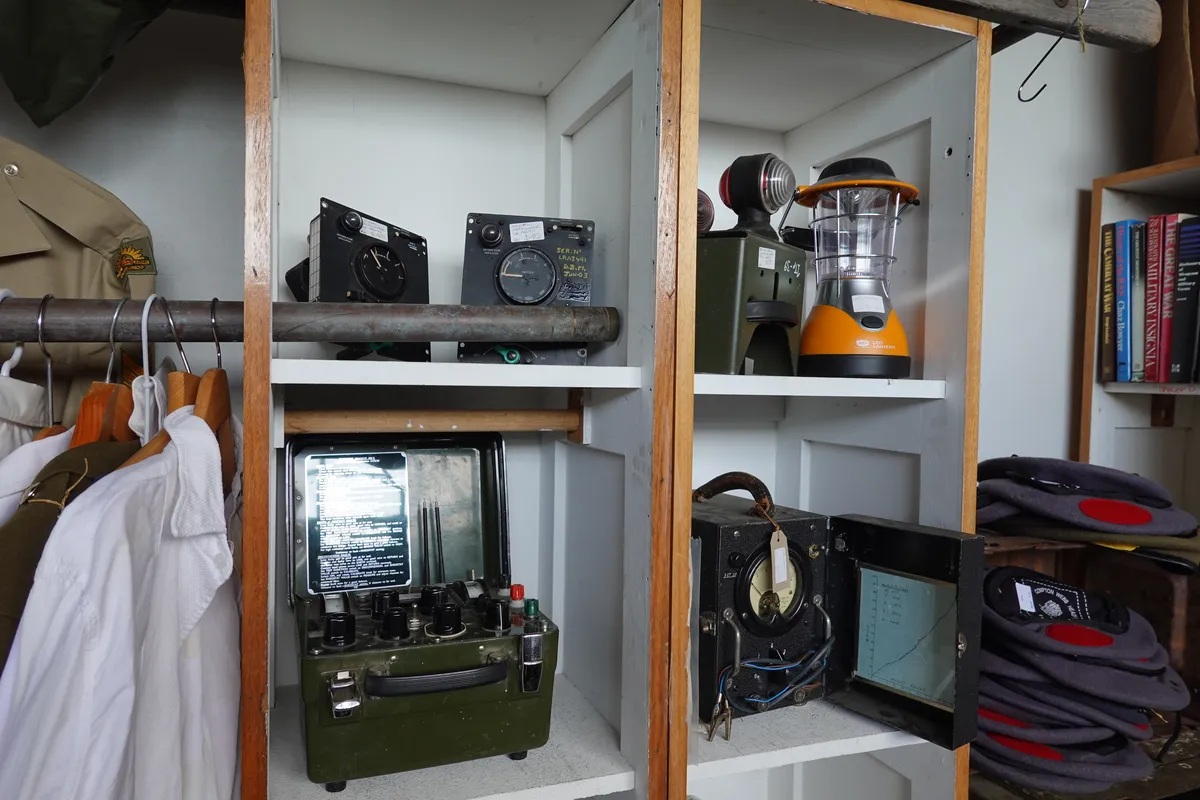
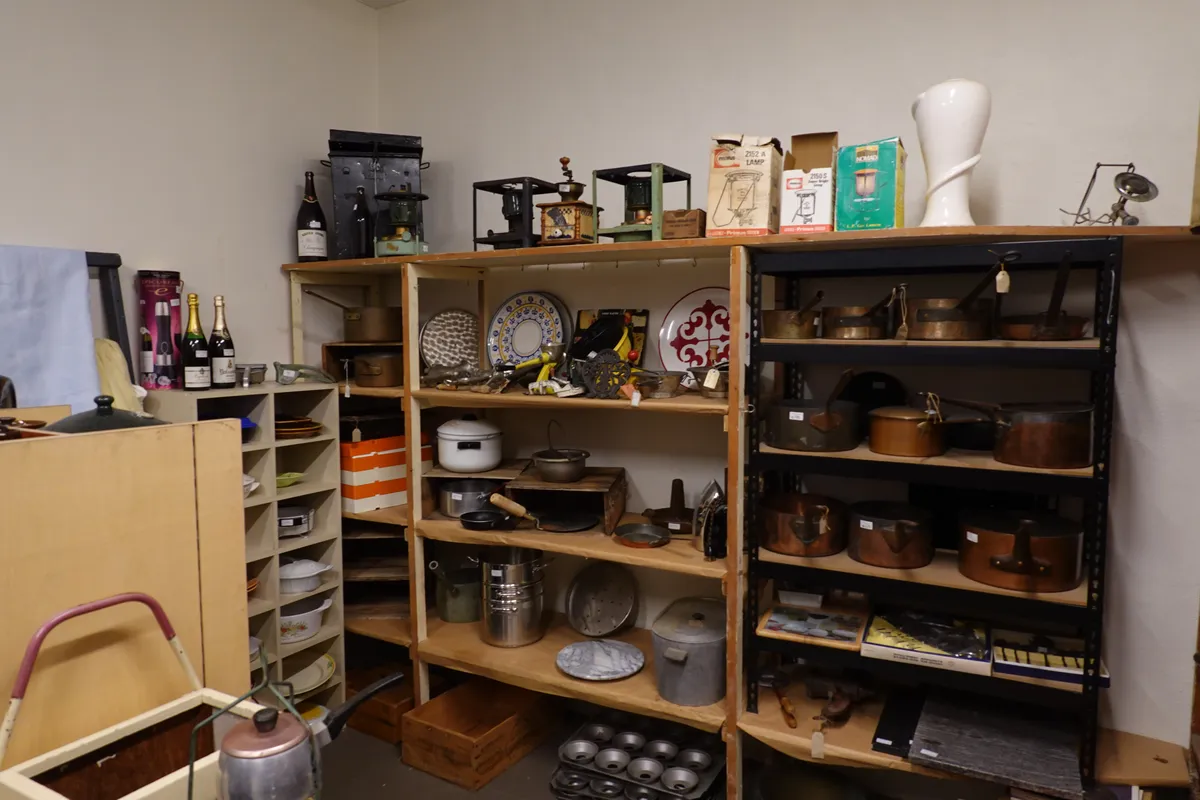
Around Arthur Square
We did a restock at Woolworths before checking out the sights around Arthur Square. There are a couple of historic buildings along the perimeter of Arthur Square. Arthur Square itself is over 200 years old, having been established in 1811. Along Bathurst St, St Matthew’s Anglican Church is almost 200 years old too. Nearby, the Drill Hall Emporium is another family-run antiques store. Unfortunately it was closed as it was New Year’s Day when we visited New Norfolk. The family behind Drill hall Emporium appears to also run a couple of other stores in the area. Finally, not so new the square but within walking distance, the Bush Inn is one of the oldest pubs in not just Tasmania but Australia, though its year of establishment is still a matter of contention.


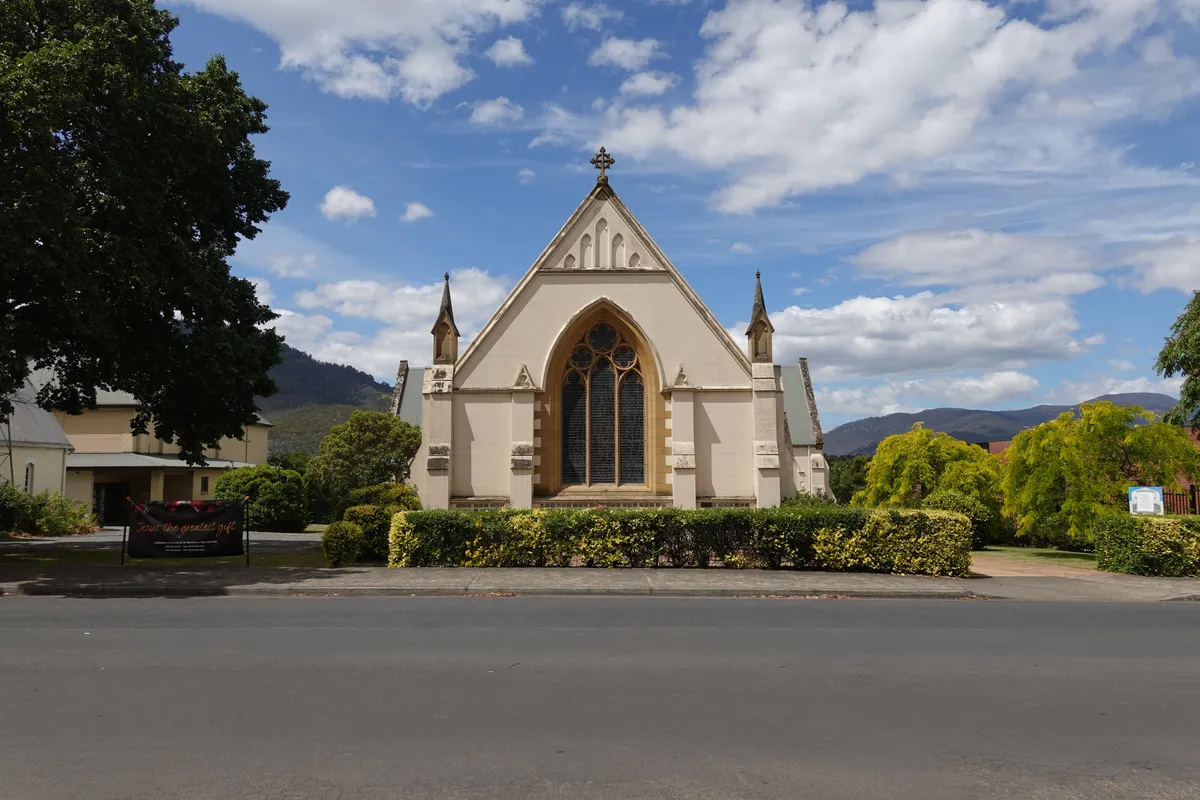
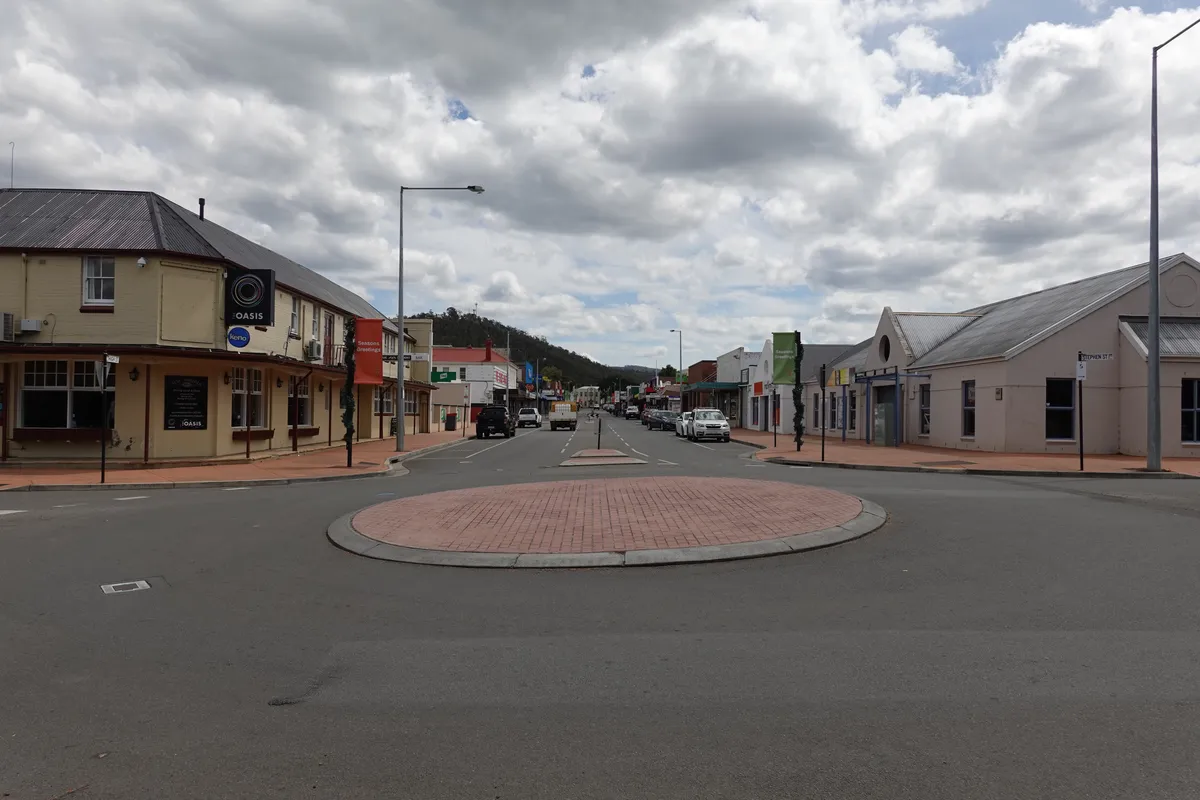
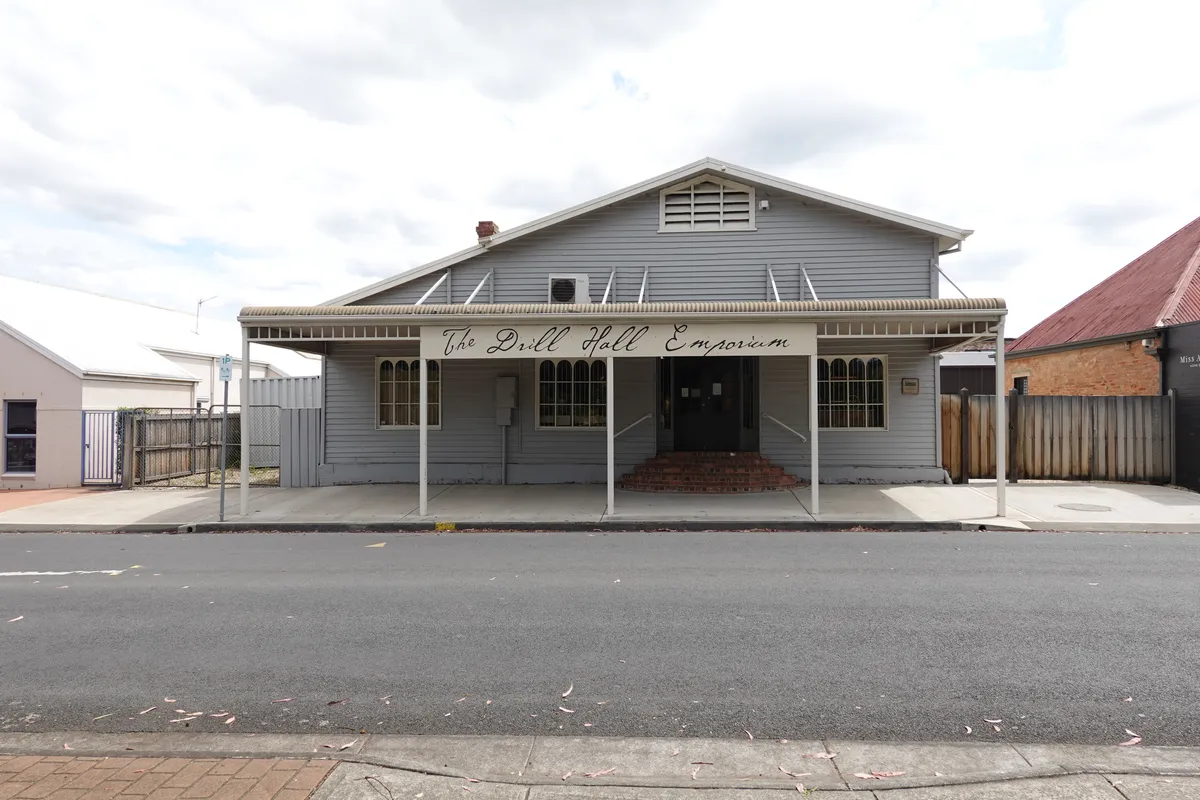
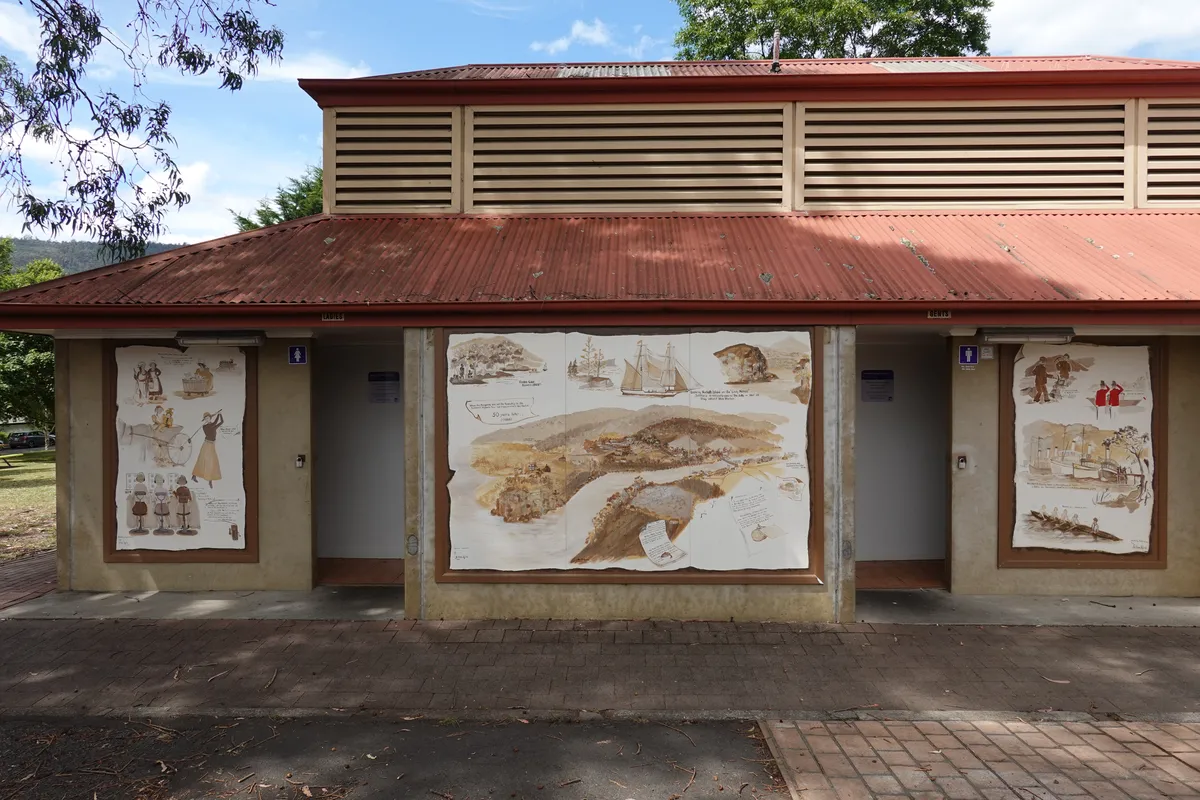
Hobart
After New Norfolk, we joined back the Lyell Highway for the lovely drive along River Derwent to Hobart. As we had spent days at Hobart before our road trip and more days to spend there after returning the campervan, we just stopped for ice cream at Constitution Dock for a short break. It was a hot summer day, and the queue for Van Diemens Land Creamery was long. As we just wanted something cold and didn’t like the idea of standing in queue in the sun, we went with the ice cream next door at Fishy Business. We found space at the back of the shop to slowly savour our little treat.
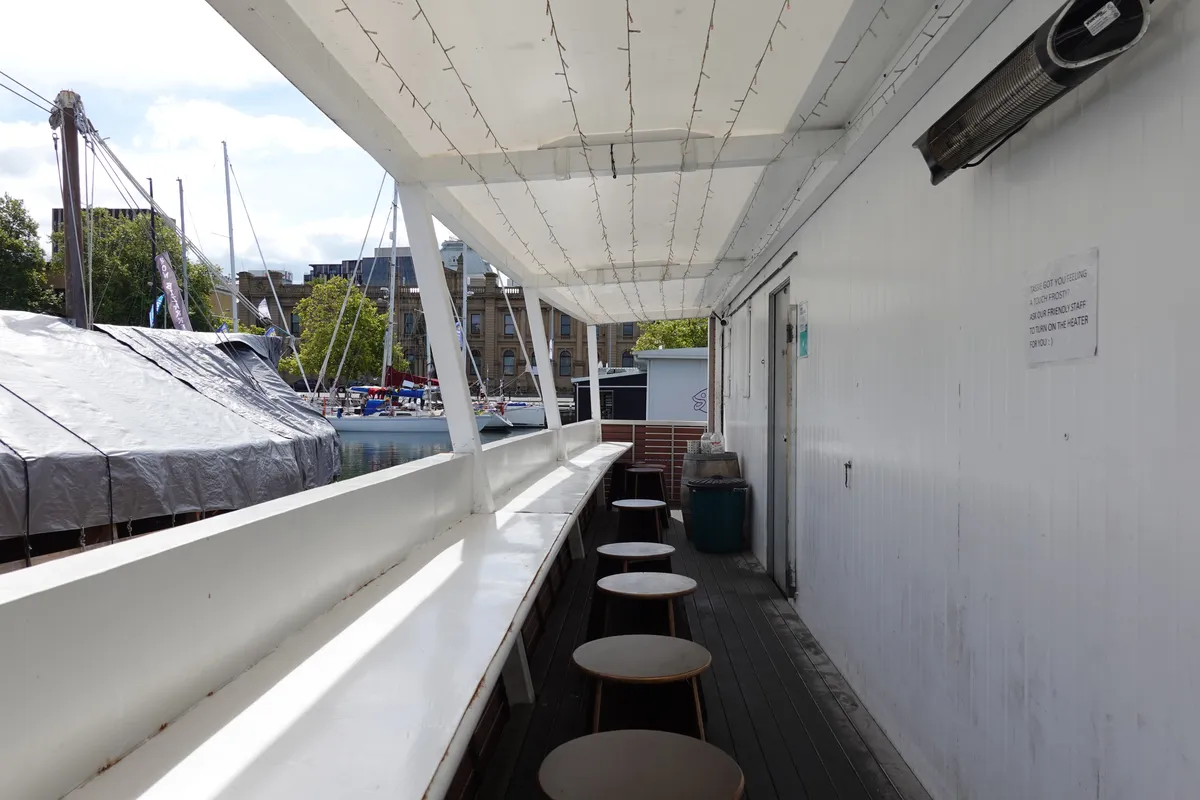
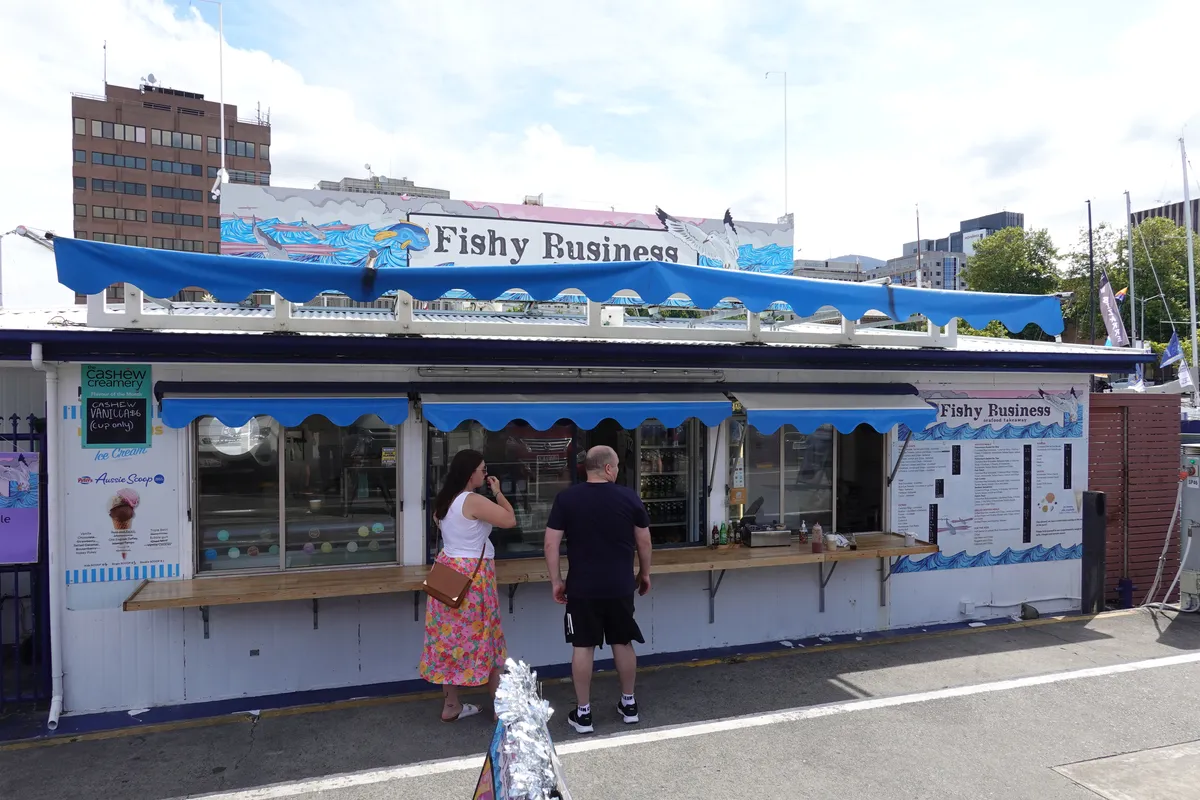
Willie Smith’s Apple Shed
Next up, Huon Valley! We left Hobart via the Southern Outlet and headed for Huon Highway. It was getting late in the afternoon and just enough time for one more long stop. Other than being where the famous cider is made, Willie Smith’s Apple Shed is a museum, a restaurant and a great hangout place. We had the tasting paddle but you can definitely get great local food or even a picnic basket here. On days there is also live music and markets, so it may be a good idea to check the calendar when planning your visit.

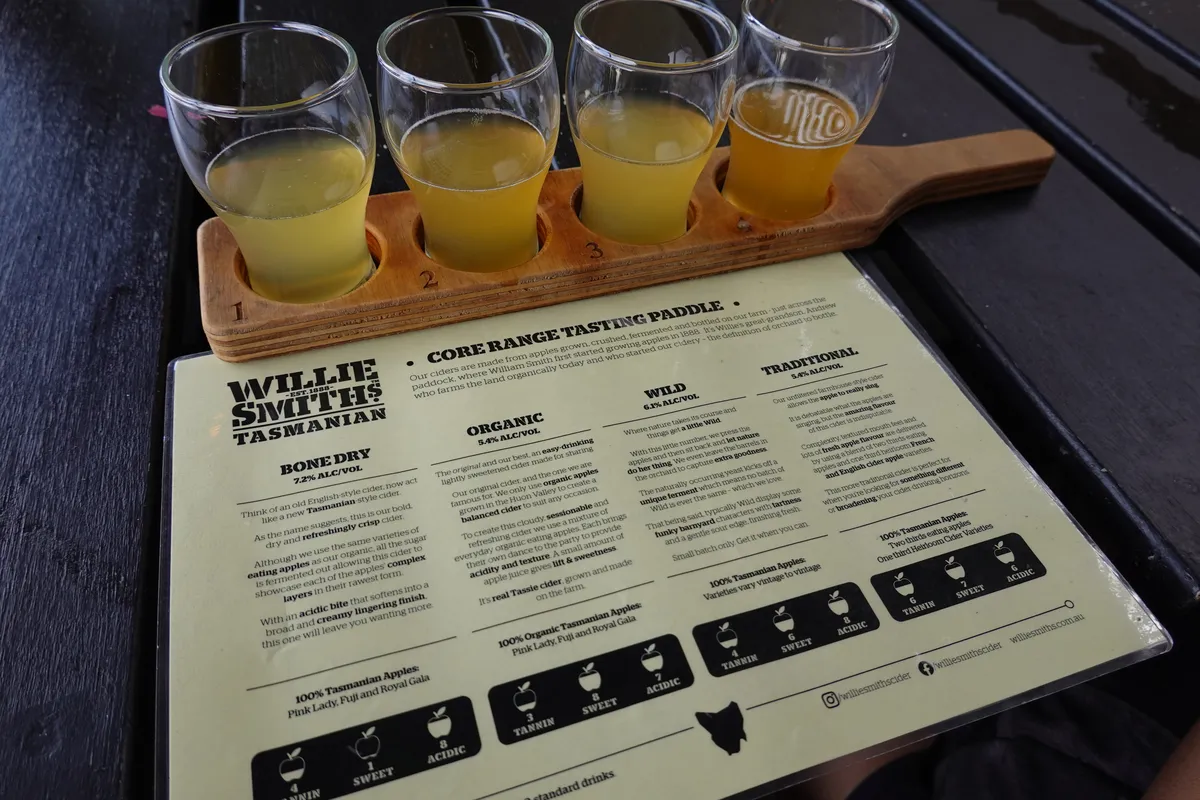
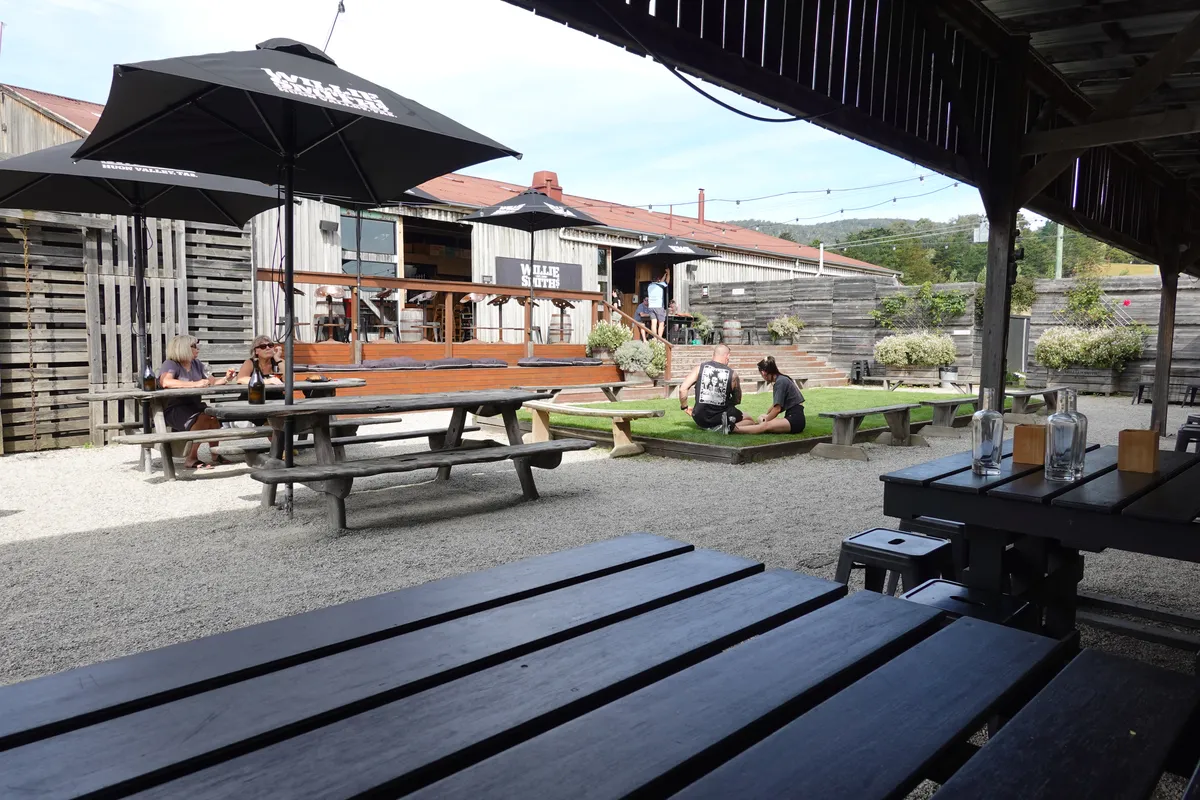
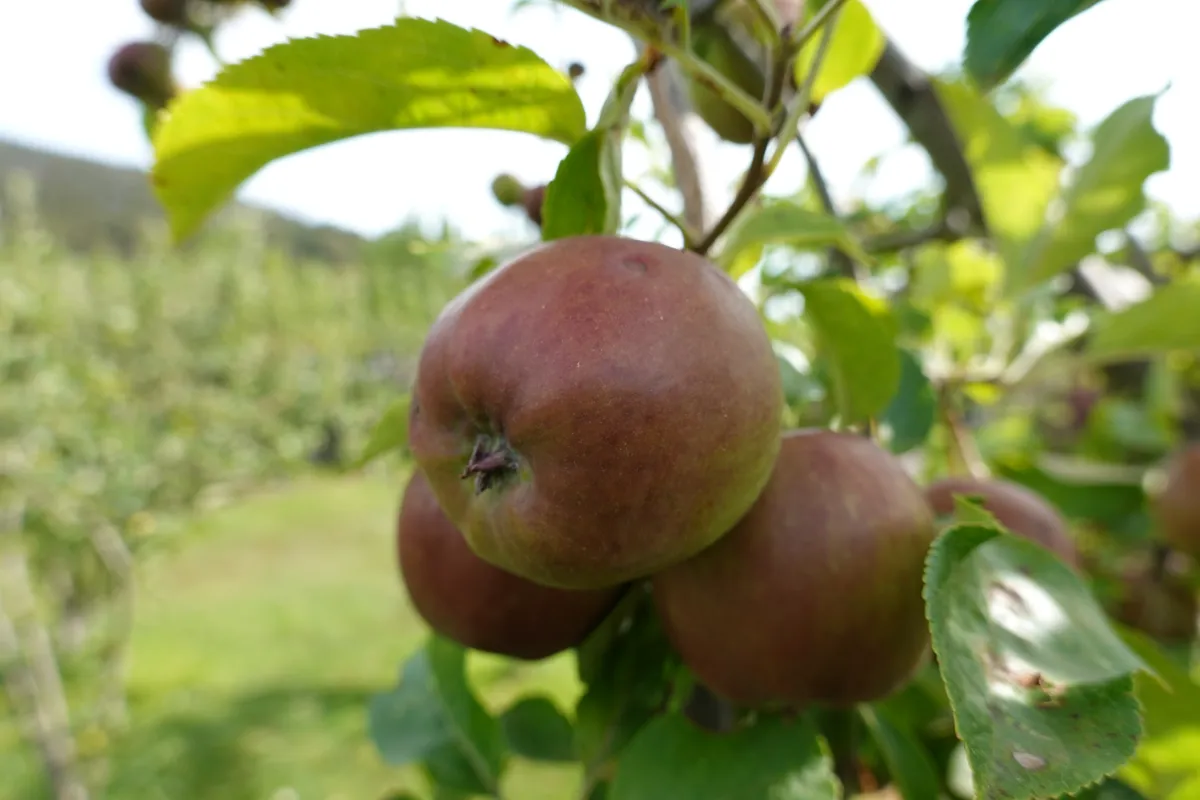
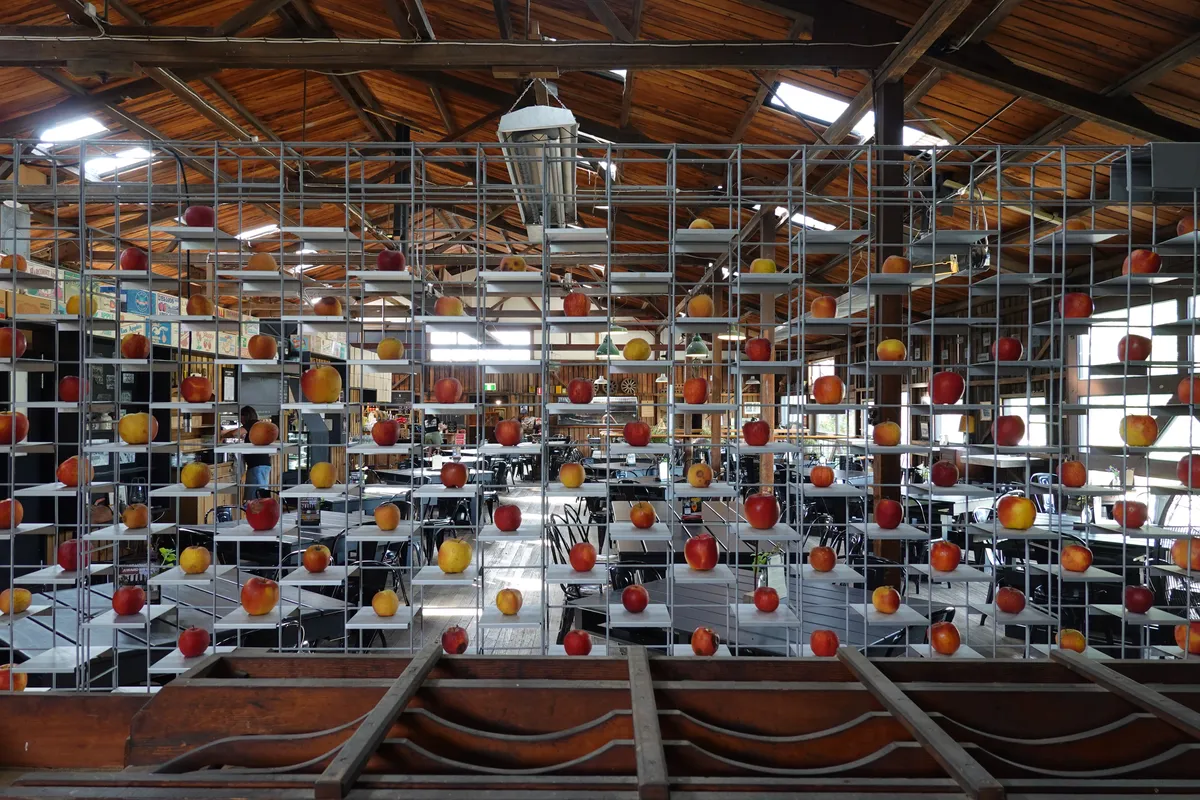
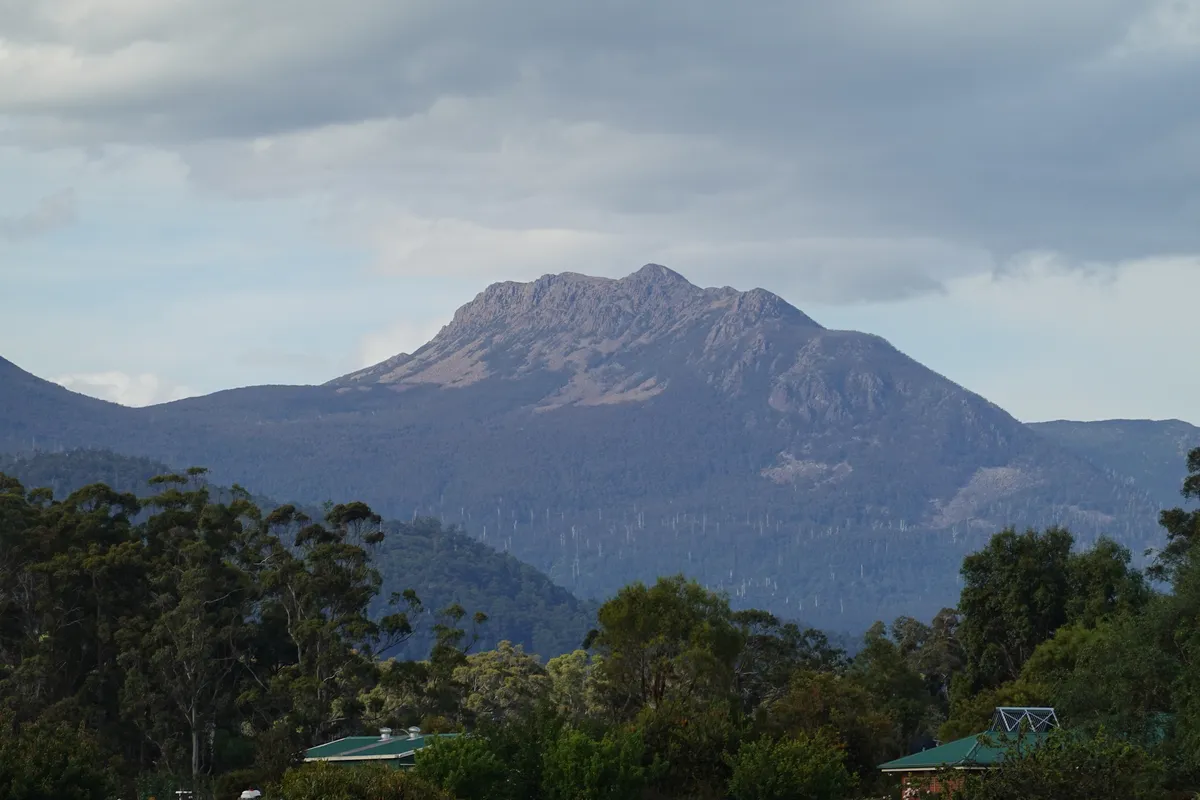
Franklin Lockup
Just a short drive later, we arrived at Franklin, a small town along the Huon River and our stop for the night. We had a look at the Franklin Lockup, a small cell that was used to temporarily hold drunk or unruly folks in the past. Apparently more of these used to exist along the Huon Valley.
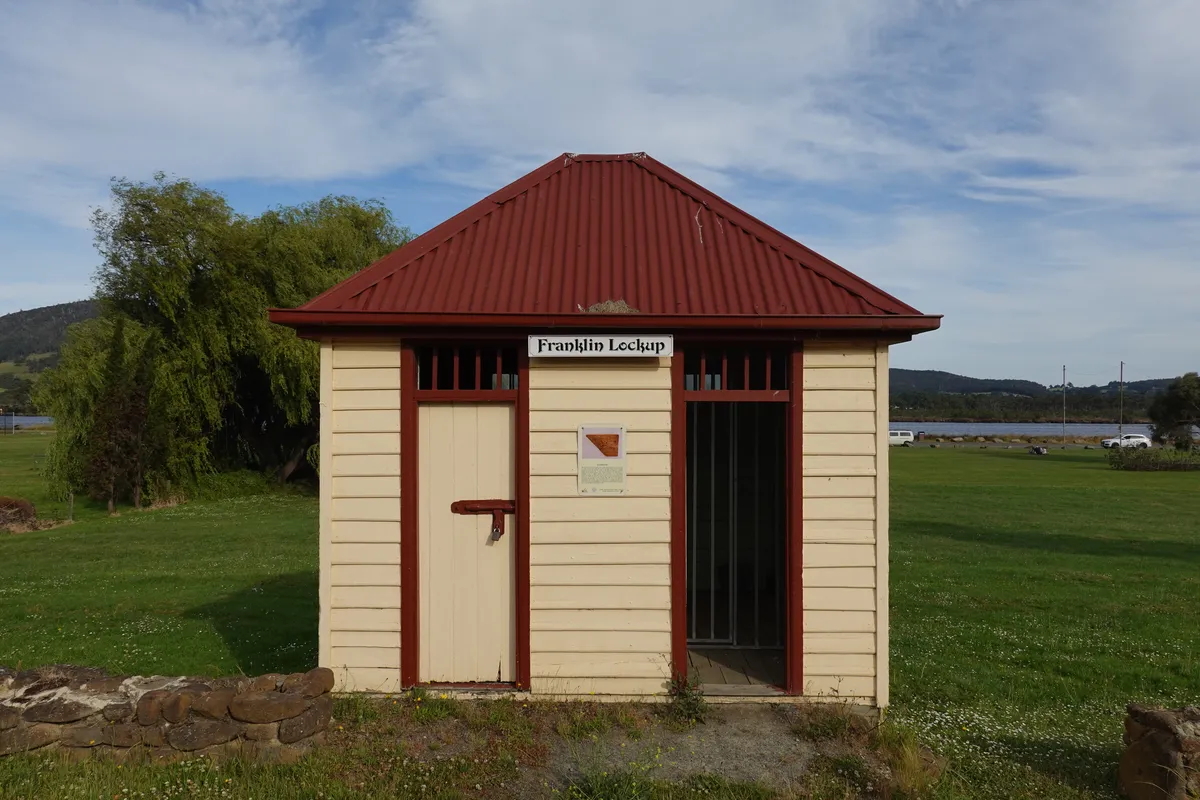
Franklin
Franklin is yet another old charming town in Tasmania, with its own distinct character. With the river within reach and mountains within view, it’s a great place for a relaxing stop.

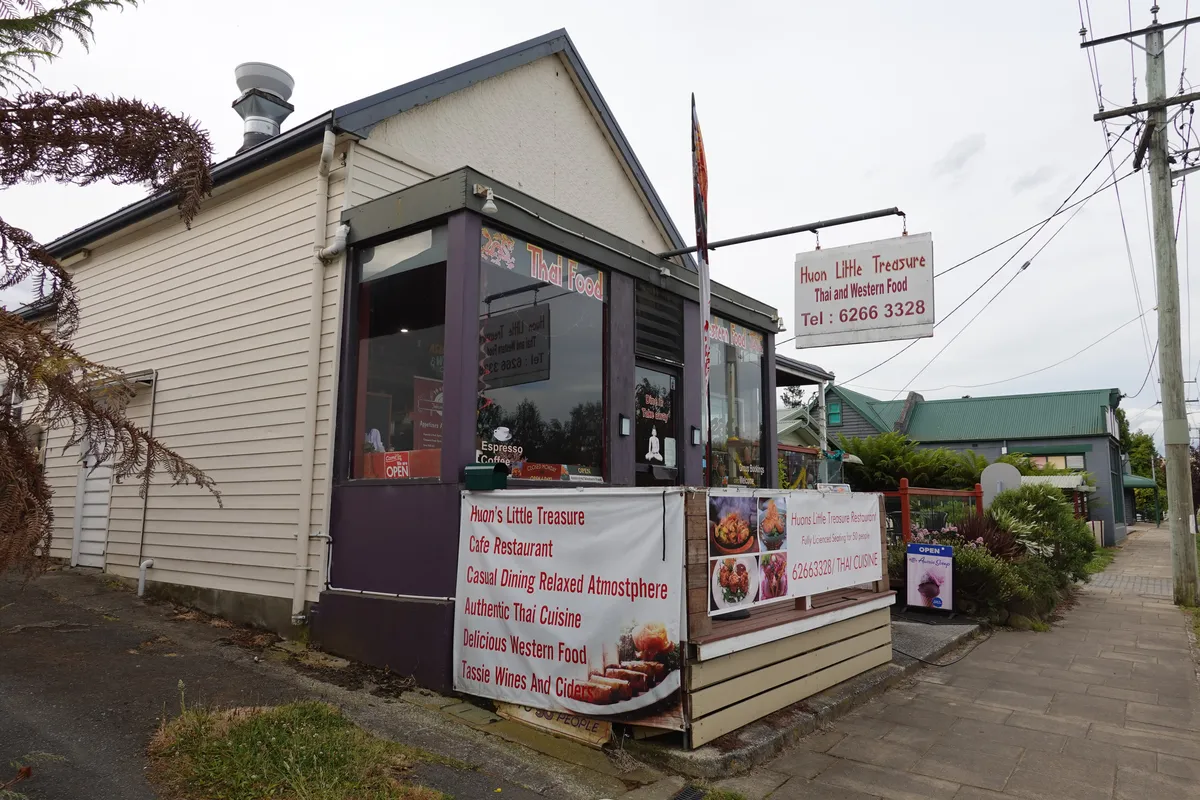
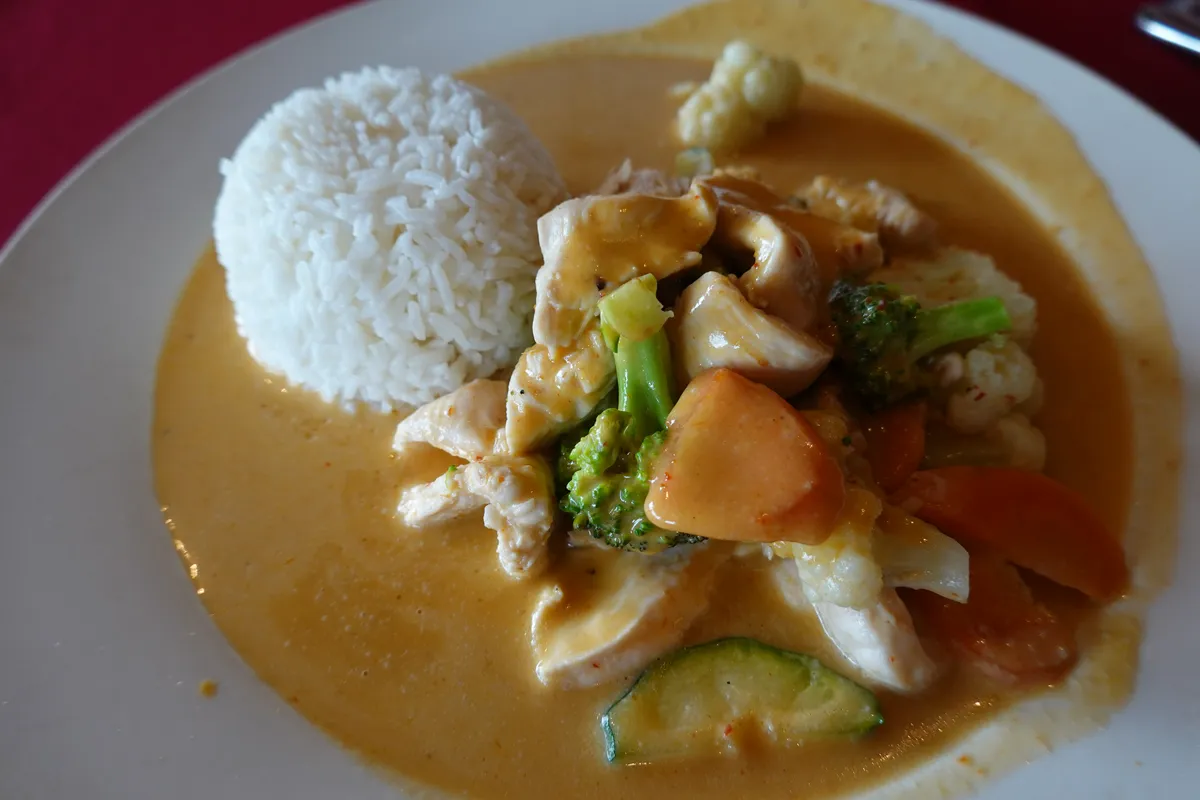
Franklin Campground
Our stop for the night, Franklin Campground, just by the river’s edge. It was a beautiful camping spot. As there were hardly anyone around, we managed to get a good spot where we could open our van to have a direct view of the river from our bed. The site and facilities are on the basic side (no power or showers, with toilets but on the dirtier side), but none an issue for a short stay of a day or two. We enjoyed the berries and cherries from the farms the days before as we watched sunset over Huon Valley.
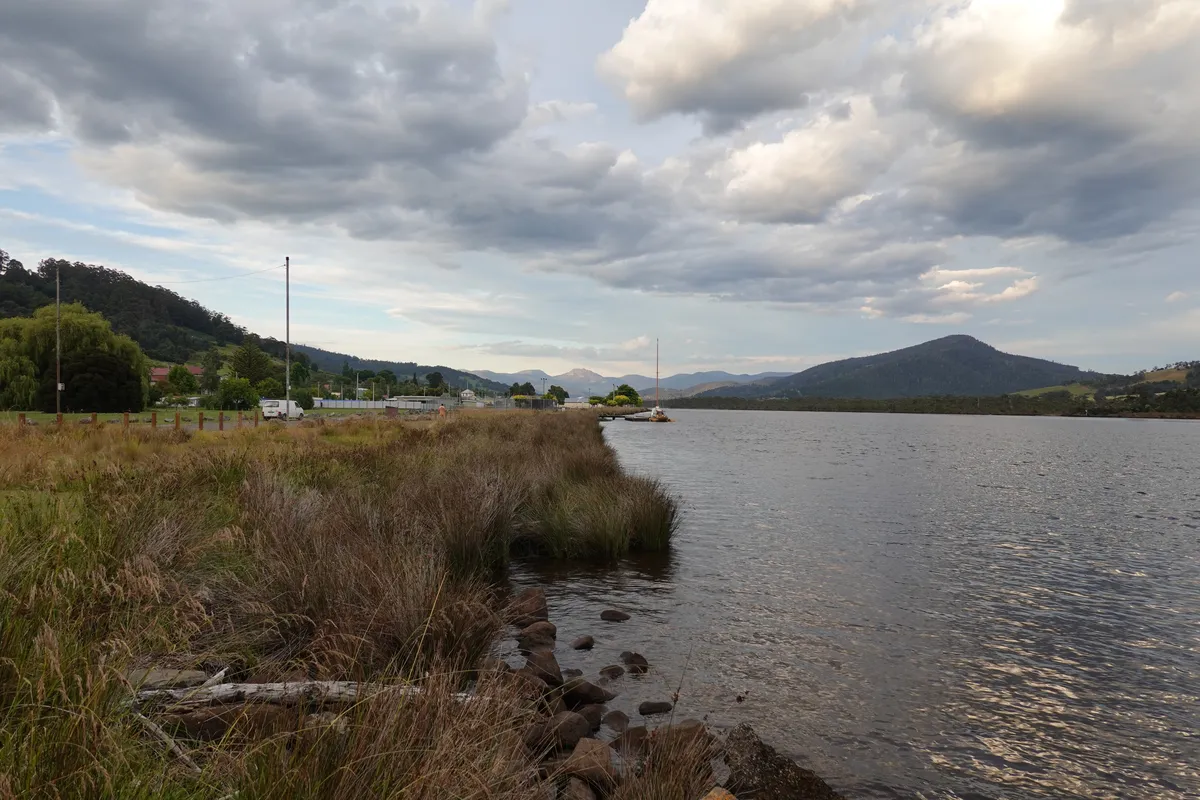

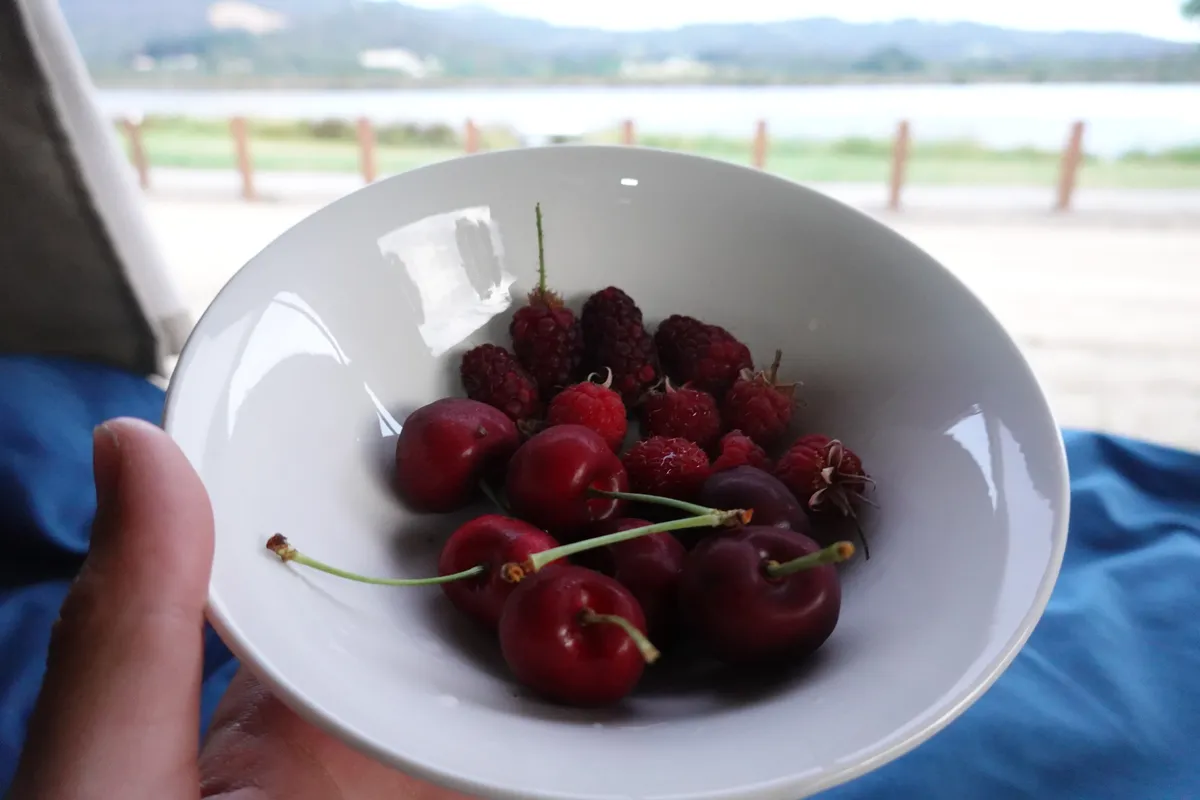
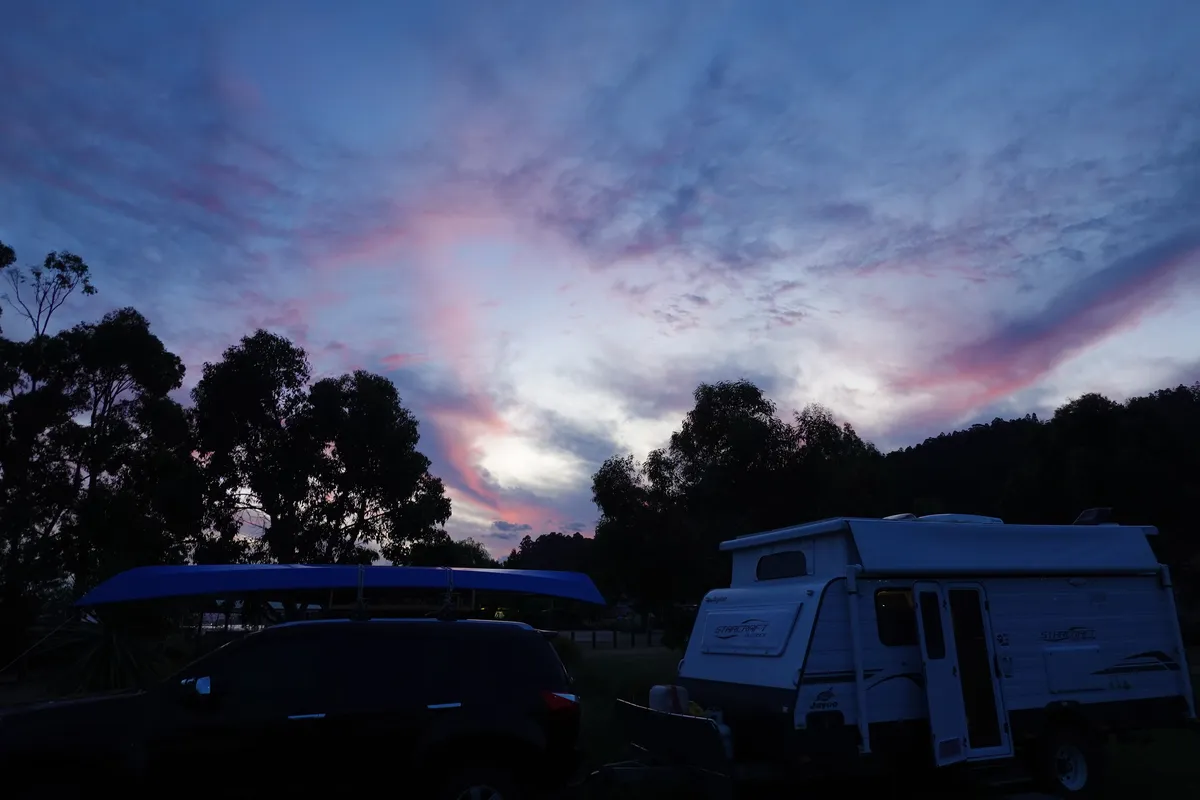
- Cost: AUD$10/15 (?) per night per site, unpowered only
- Parking: Unpaved but level ground.
- Facilities: Drinking water and dump point
- Hygeine: Basic toilets, no showers
- Reservations: There does not seem to be any way to make reservations
Day 6 – Franklin, Geeveston and Hastings Caves State Reserve
The last full day of this leg, checking out a couple more stops in Franklin before heading (almost) all the way down south!
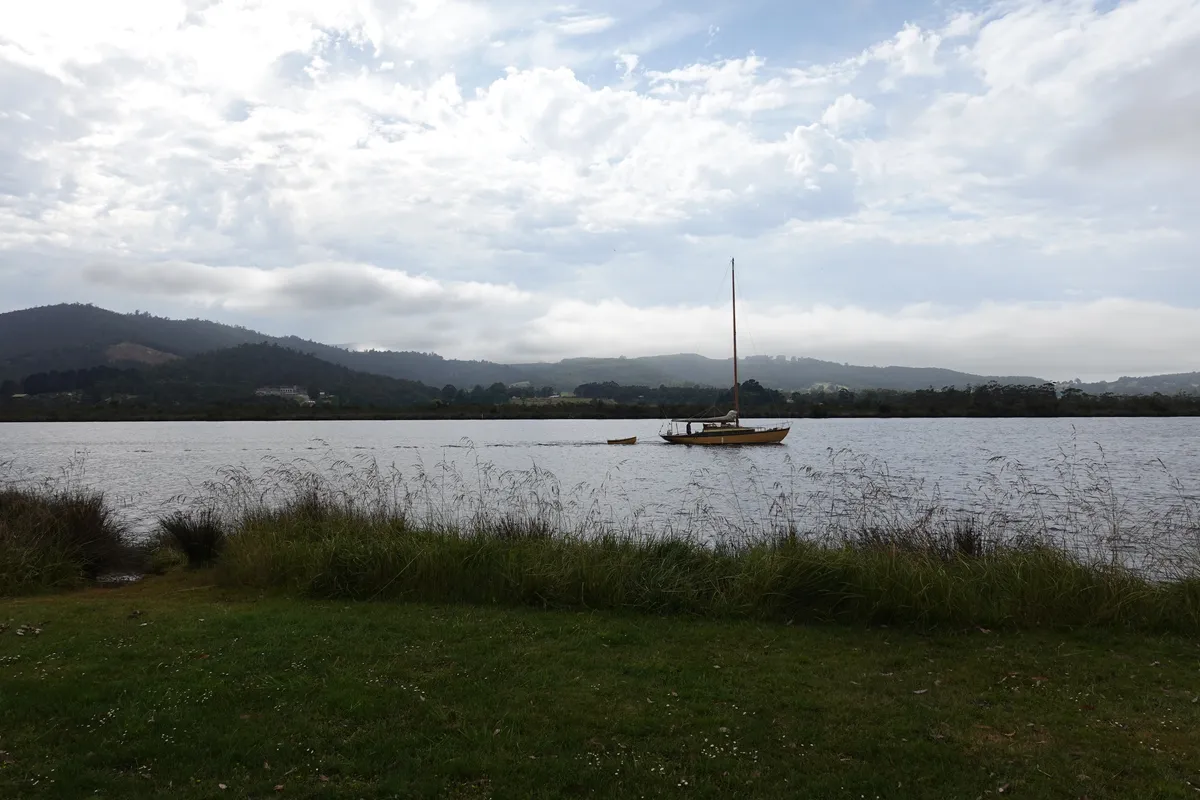
The Wooden Boat Centre
The Wooden Boat Centre is community-led effort dedicated to preserving and continuing the art of traditional wooden boat making. It primarily offers wooden boat building courses, but also take on other boat building and restoration projects, organise events to showcase wooden boats and provide tours to curious visitors (like us). We had an eye-opening tour at the Wooden Boat Centre and learnt more about wooden boats and the centre’s efforts to promote Tasmanian wooden boat culture and heritage.



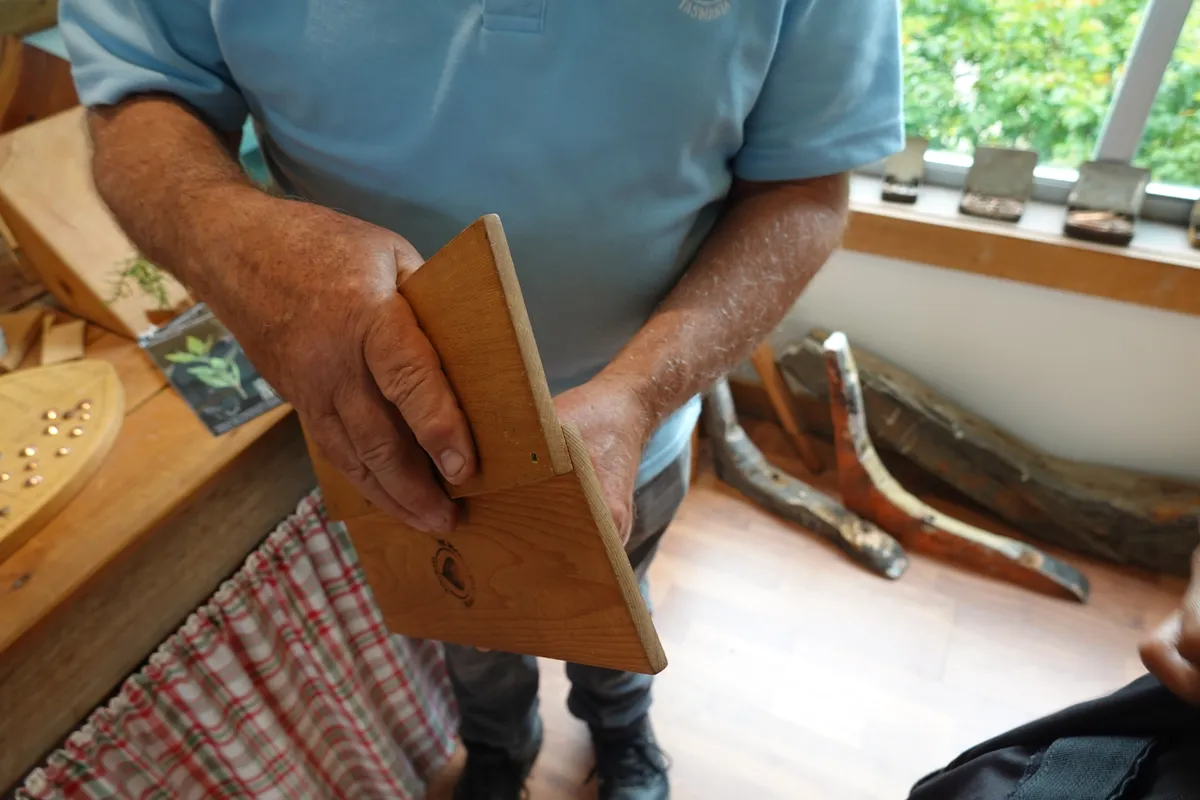
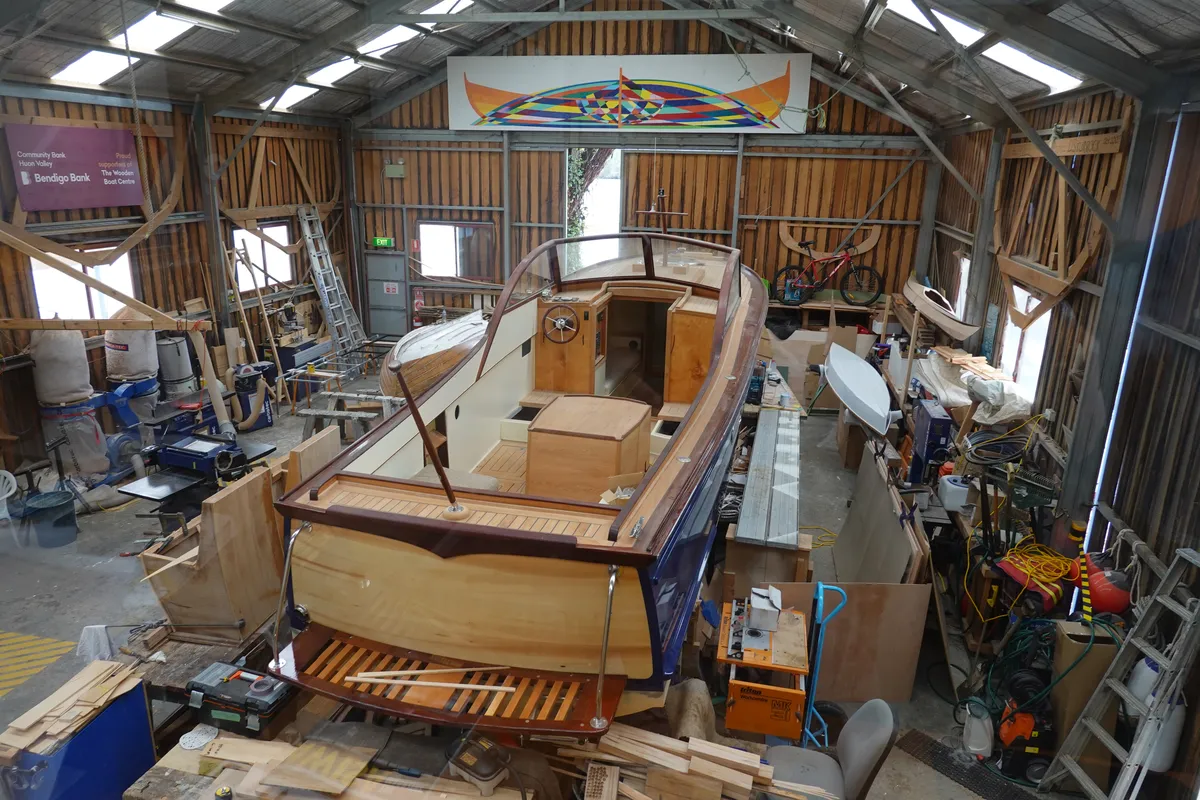

Frank’s Cider House and Café
Across the road from the Wooden Boat Centre is Frank’s Cider House and Café. We had been looking forward to some fresh pastries but as it was the holiday season the range was a little limited. Nonetheless, the raspberry pie and the tasting paddle we had were great. Frank’s Cider House and Café is smaller in scale compared to Willie Smith but it makes up with lots of character with its small display section and antique furniture. Both were great places to visit with much to offer.
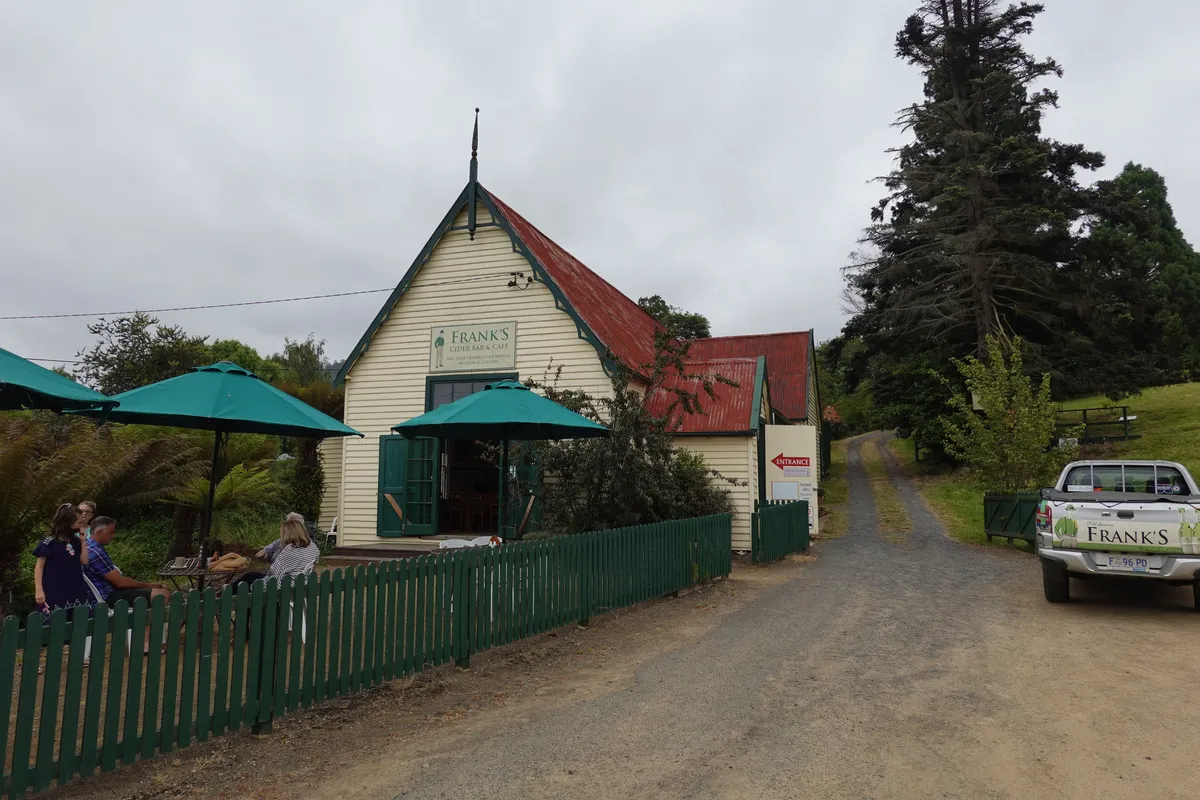
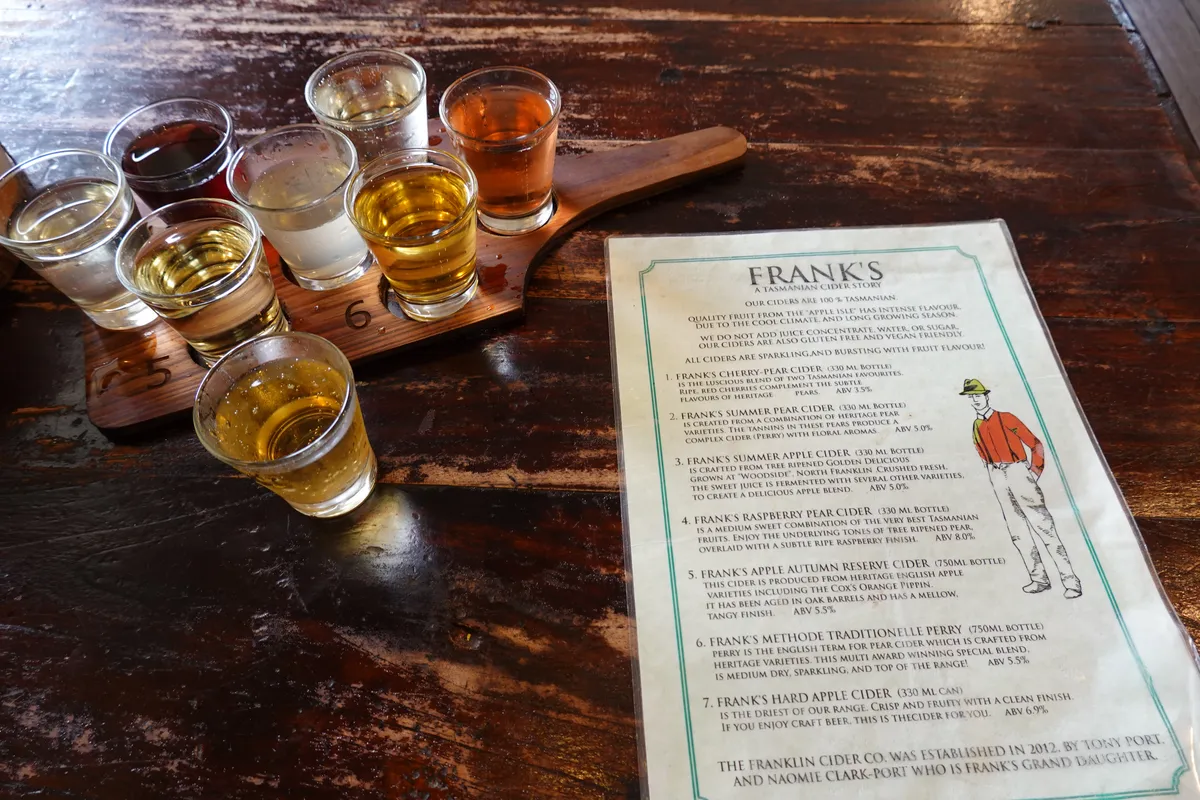
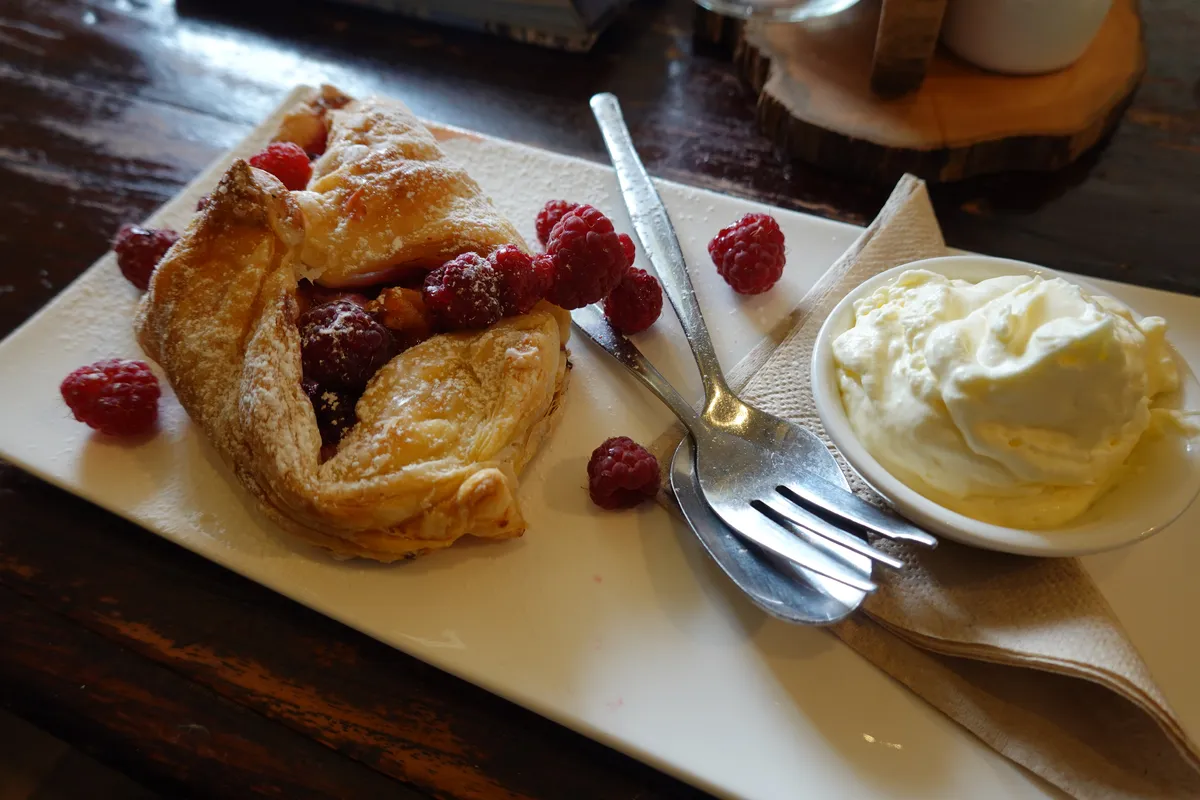
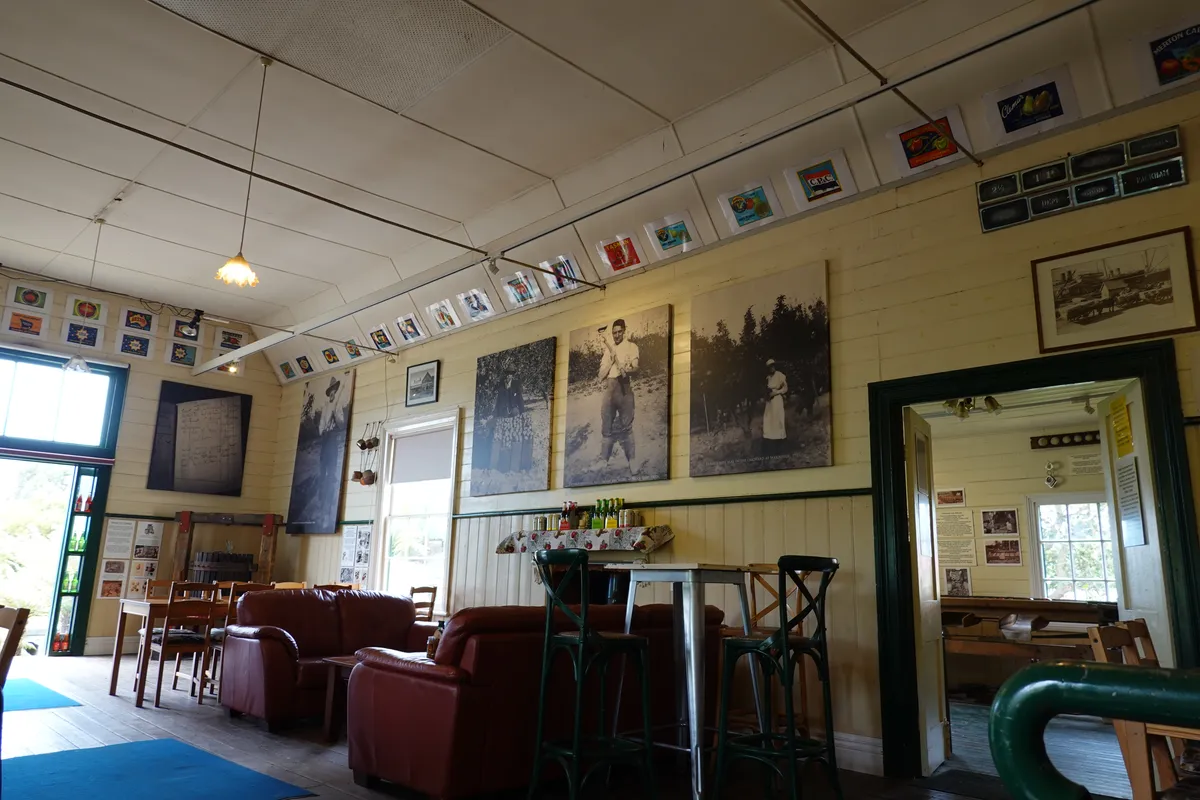
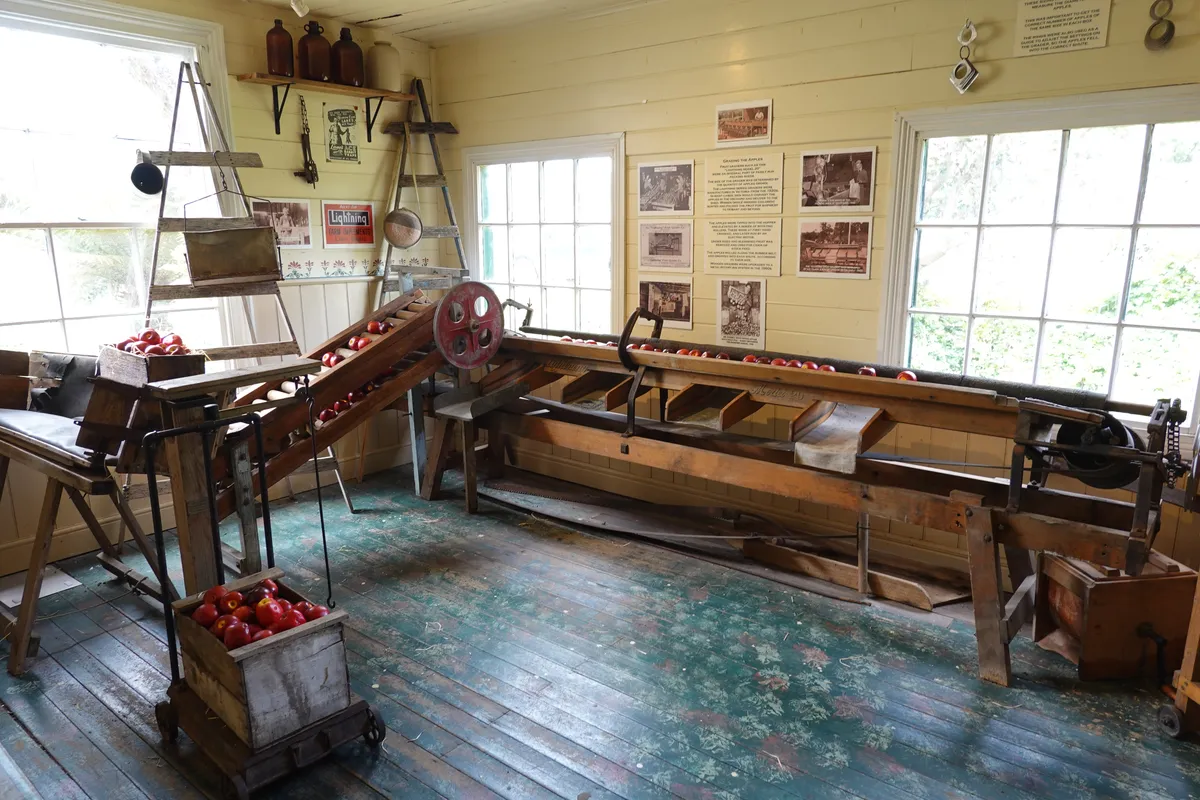
Geeveston Town Hall Visitor Centre
Another 15 minutes south from Franklin is Geeveston. Geeveston is known for its timber industry as well as being the gateway to the Hartz Mountains National Park. We didn’t manage to fit in Hartz Mountains National Park in this trip, but managed a stop at Geeveston. The Geeveston Town Hall Visitor Centre offers a brief introduction to the area as well as a wide range of souvenirs. Around the building, you’ll find timber sculptures of famous people from Geeveston. There’s also a AR/VR display of a platypus in its natural habitat.
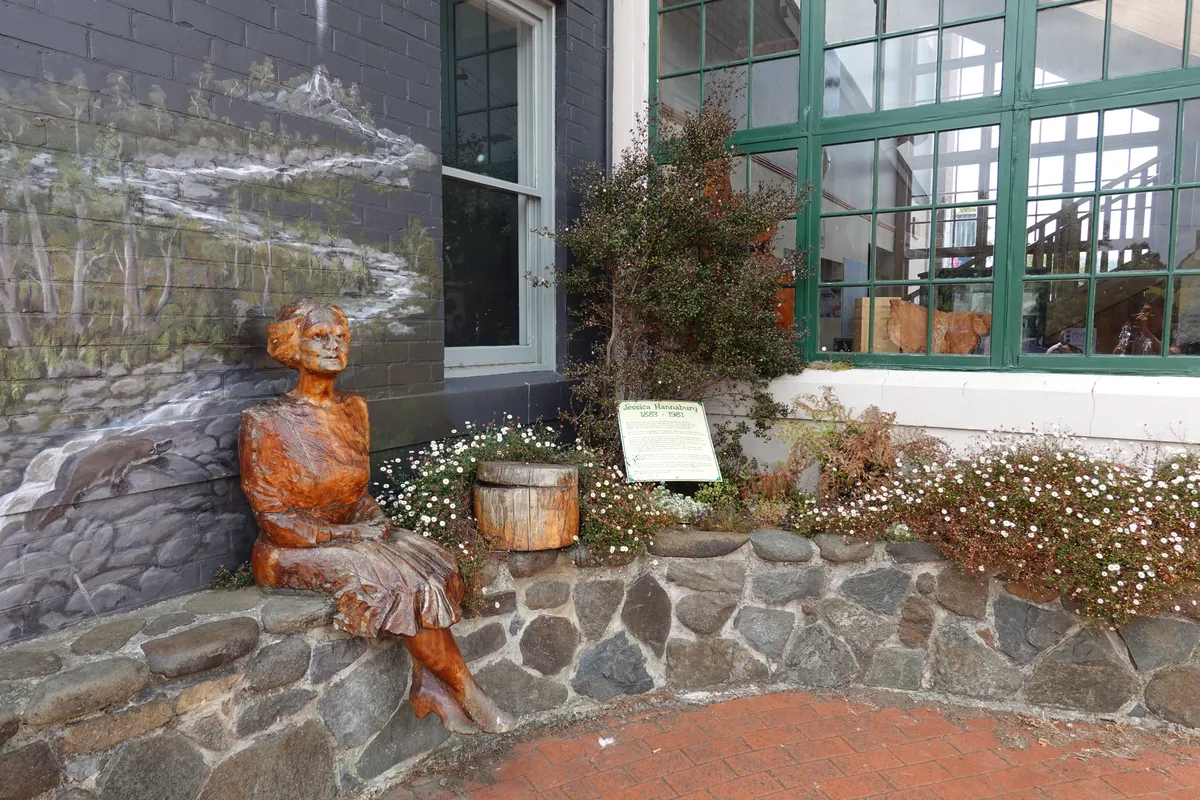




Platypus Walk
Geeveston is also a great place for platypus spotting. We followed the Platypus Walk from the park near the visitor center to the Platypus Viewing Platform. We looked hard but couldn’t spot the platypus. Crossing the Huon Highway, we finally spotted a platypus in the same creek on the other side of the highway. By then we had seen a number of platypuses across Tasmania, but were still fascinated by this strange creature. Near the Platypus Viewing Platform is the Geeves Monument and Swamp Gum, where you’ll find gigantic swamp gum log and some information boards on the history of the area.
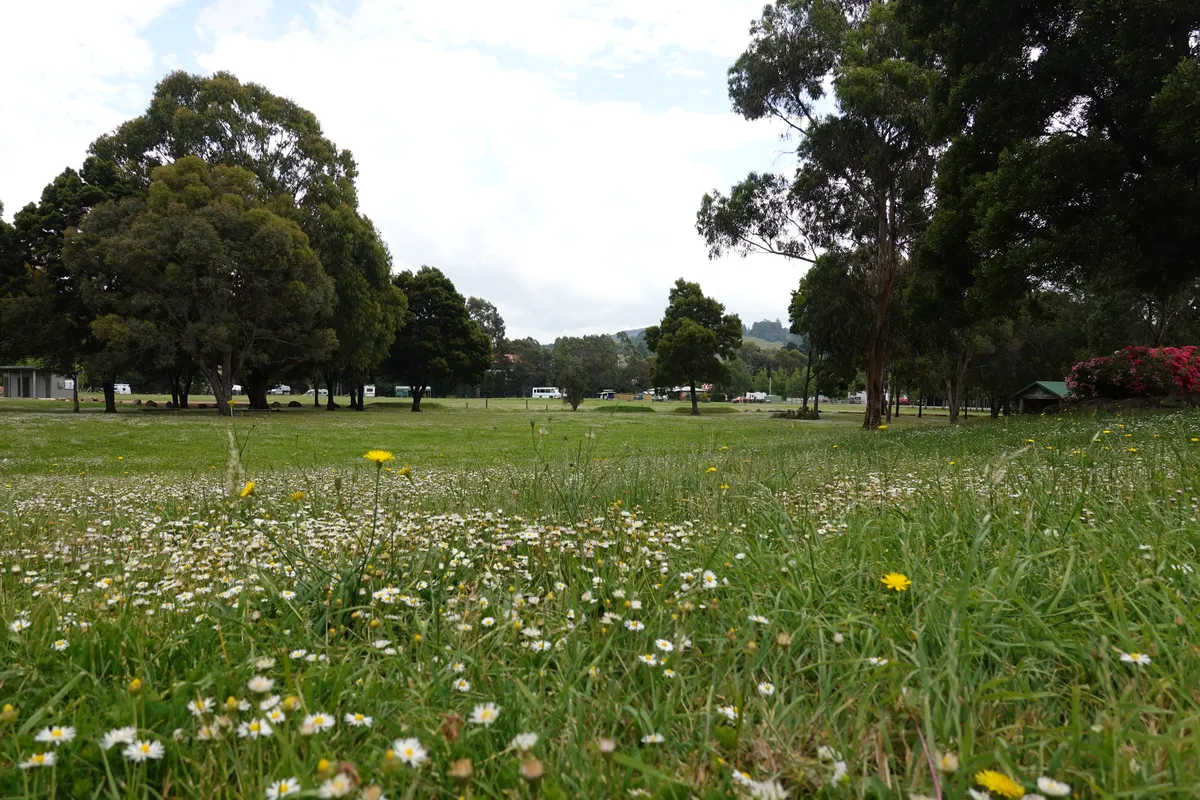
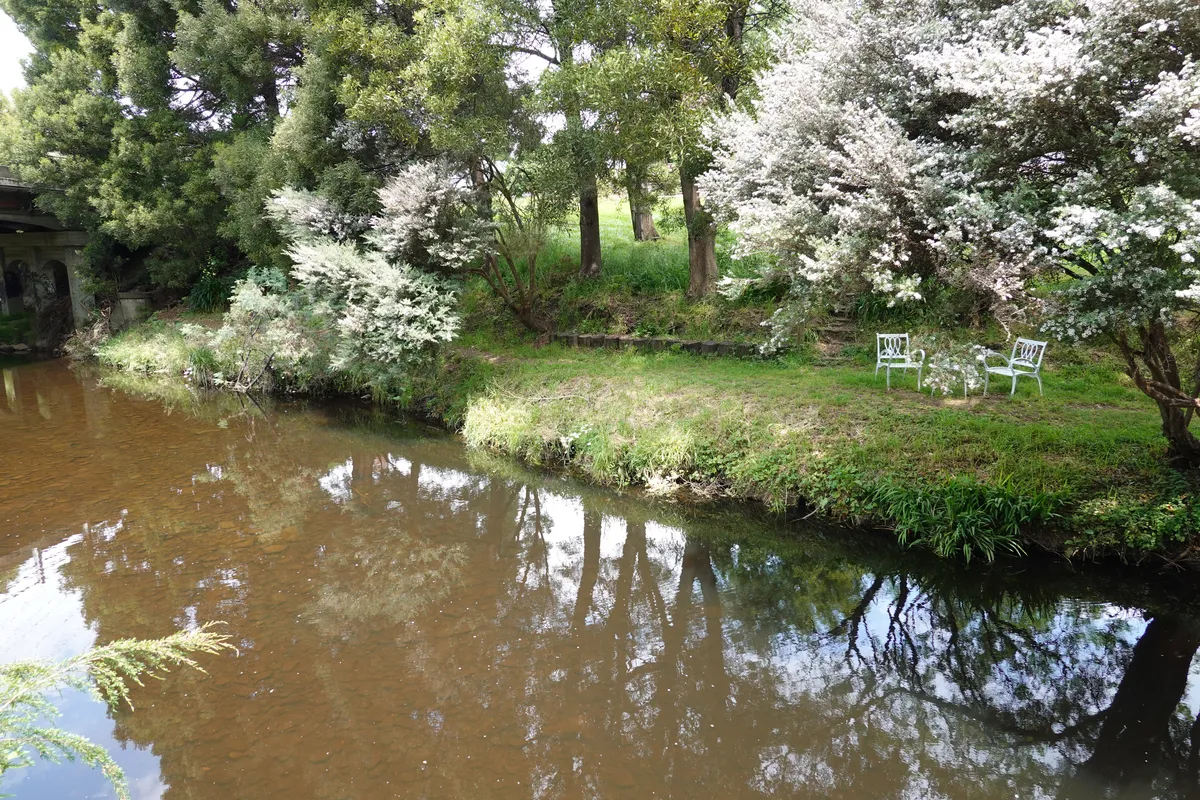


If you did not spot any platypus here and have not seen any yet, there’s still the virtual one at the vistor centre to check out.
Thermal Springs (Hastings Caves State Reserve)
We then went further down south to Hastings, for our second cave tour of this trip. This was the part of our itinerary that required the most rework due to the repair required for the broken window, and fortunately we managed to shift our scheduled tour slot to a day earlier than initially booked. The Newdegate Cave Tour ticket comes with complimentary access to the thermal pool.
We paid and collected our tickets at the visitor center, which is also where the thermal pools are located. We estimated our arrival at the visitor center with sufficient time for a quick dip in the thermal pool before cleaning up and driving over to the entrance of Newdegate Cave for the tour. The thermal pool was really crowded and consistently at a mild 28 degrees, but it was quite cool see a hot spring in the middle of the forest. Toilets and showers available next to the pool.
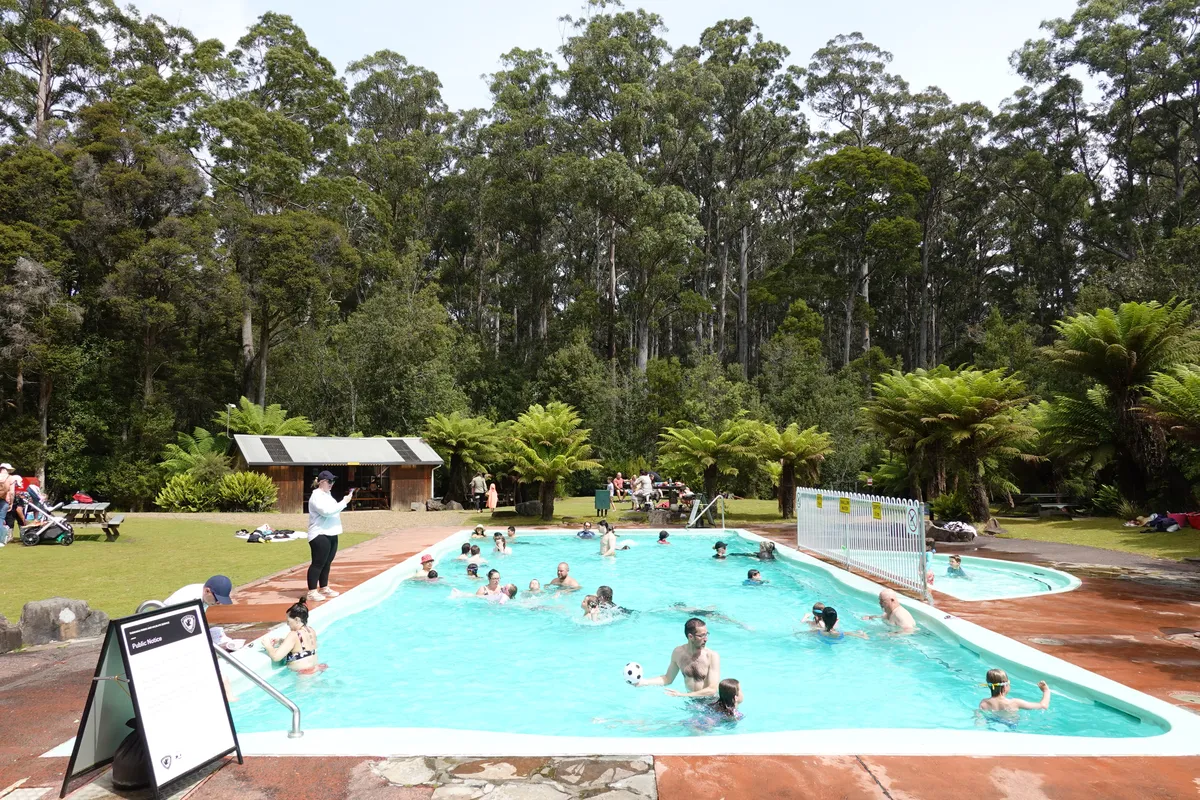
Newdegate Cave (Hastings Caves State Reserve)
Turns out out estimation was a little tight as we barely made it at our scheduled slot. The caves were crowded too that day with multiple groups lined up for the tours. The Newdegate Cave is larger than the earlier one we visited, King Solomons Cave. There were also many interesting formations here, but the scale in Newdegate Cave made some of the spaces a little more spectacular. Like King Solomons Cave, there are no glowworms here. With the multiple large groups in the cave at any time though, the tour felt a little less intimate and a little more rushed, if these are factors of consideration for anyone.
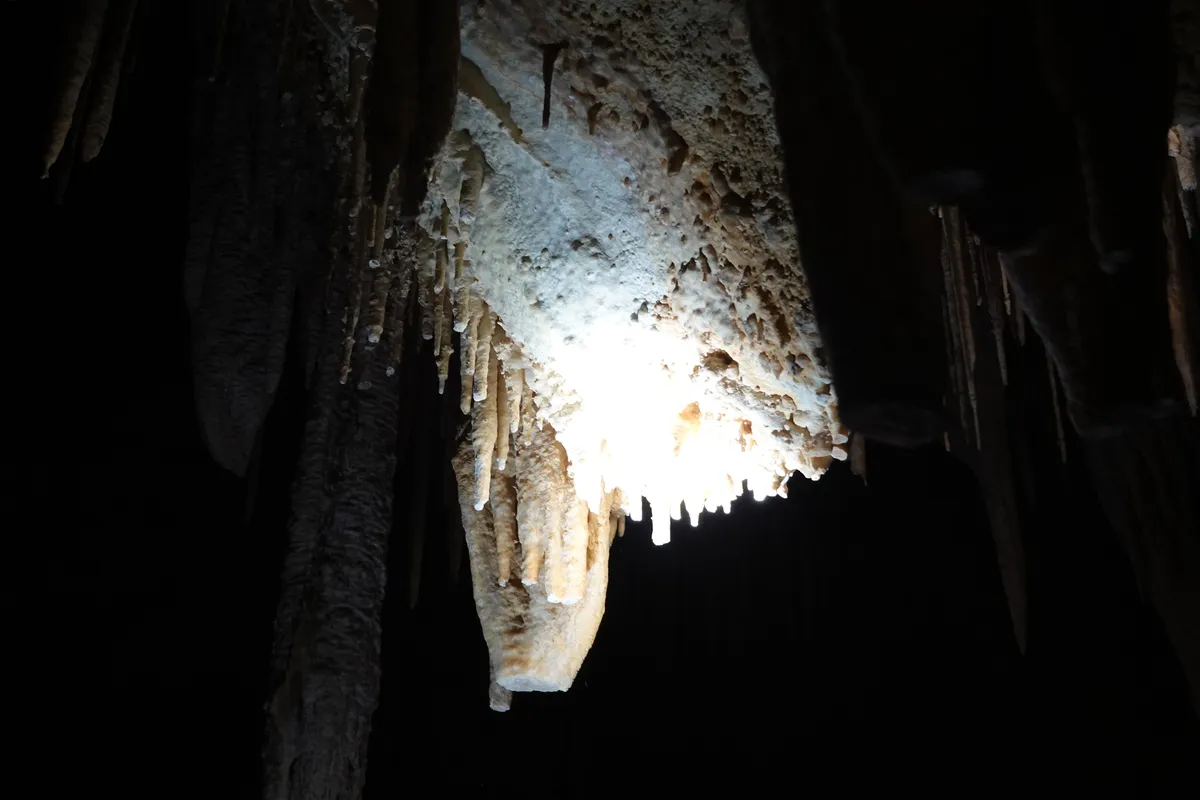

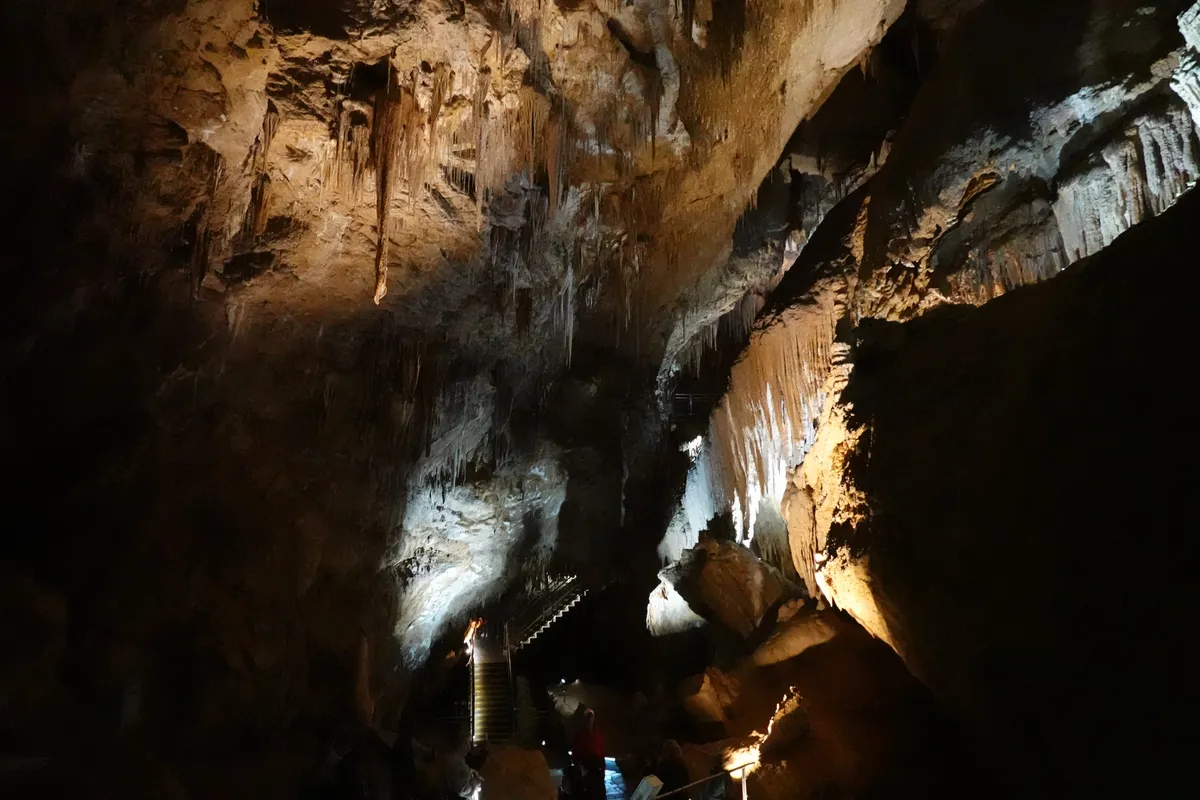
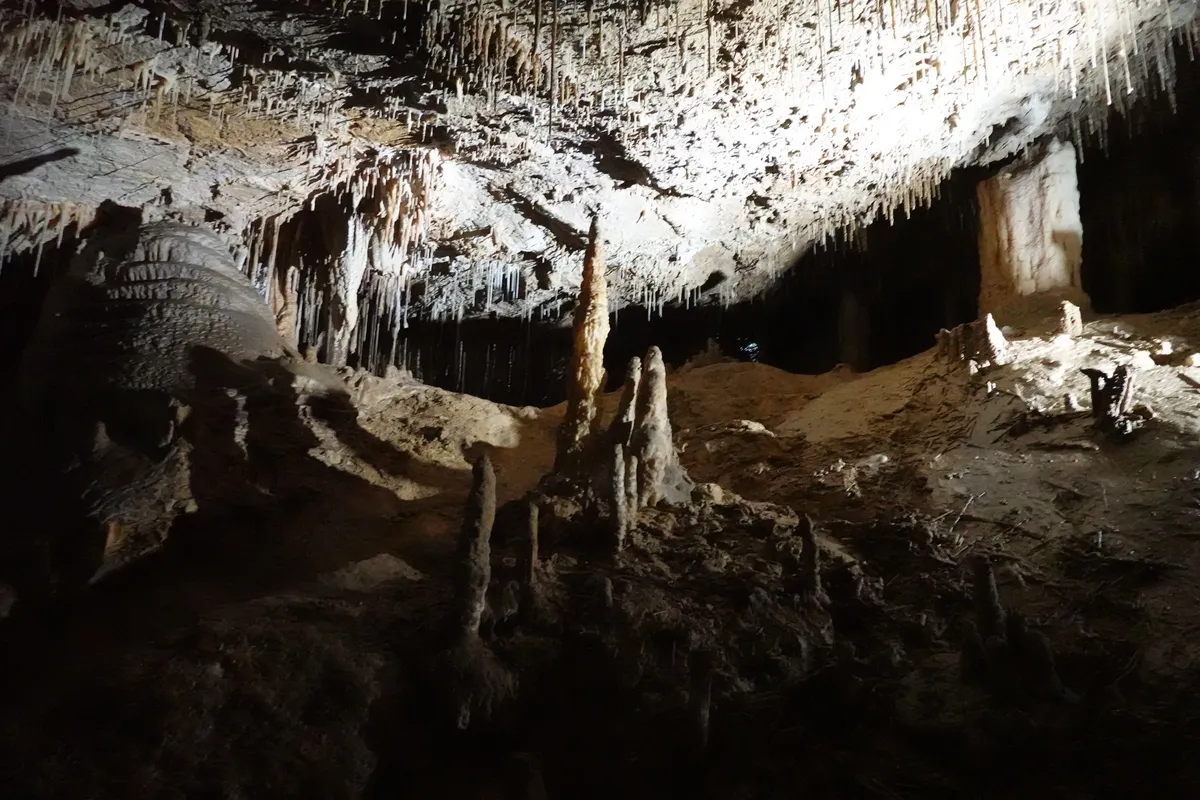

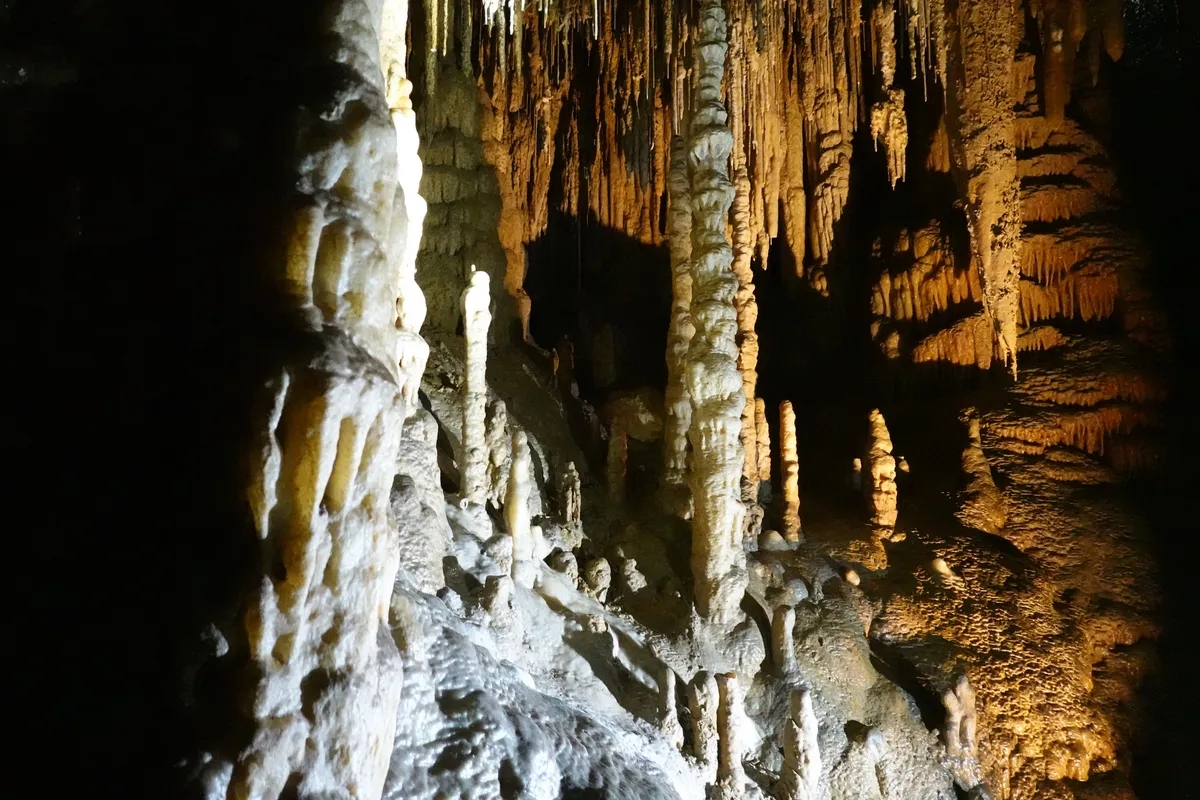

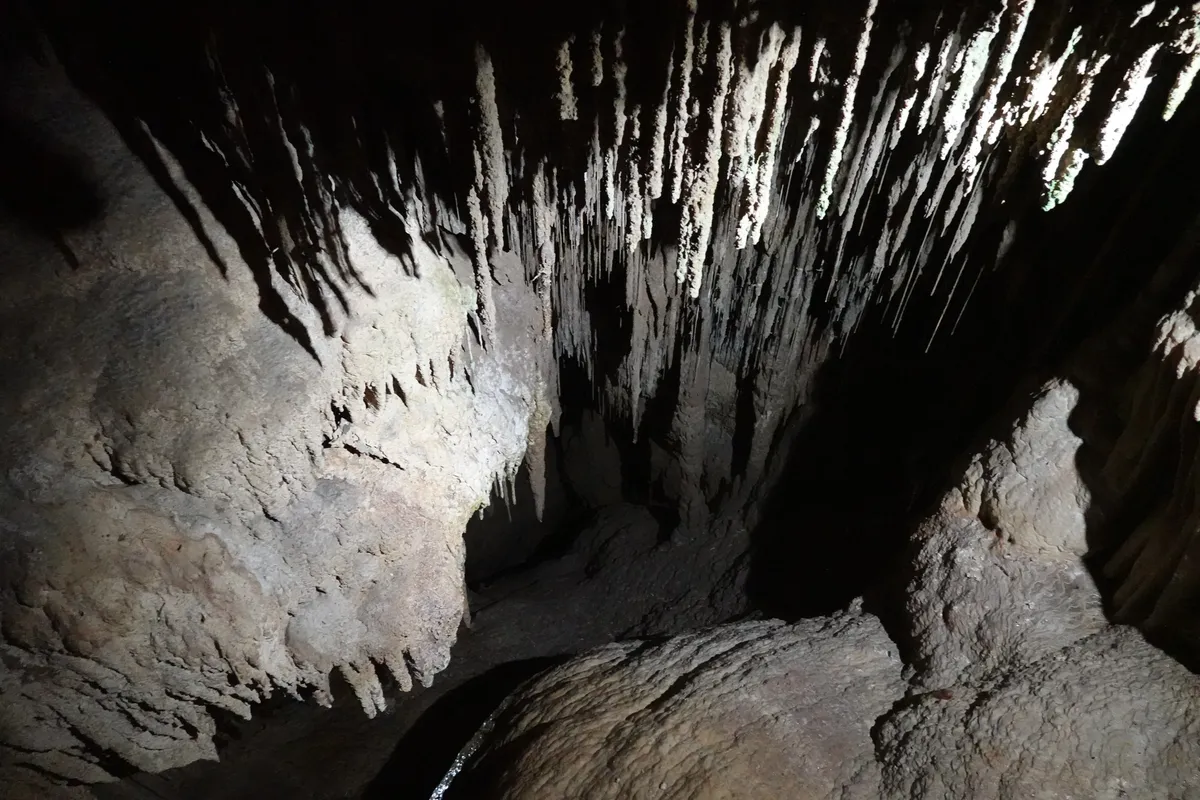
Back outside, we were no longer in a rush and had time for a slow walk on the boardwalk to enjoy the forest as well as marvel at the remains of the massive trees that had been logged. Must have been spectacular walking through this forest with those giants still alive.
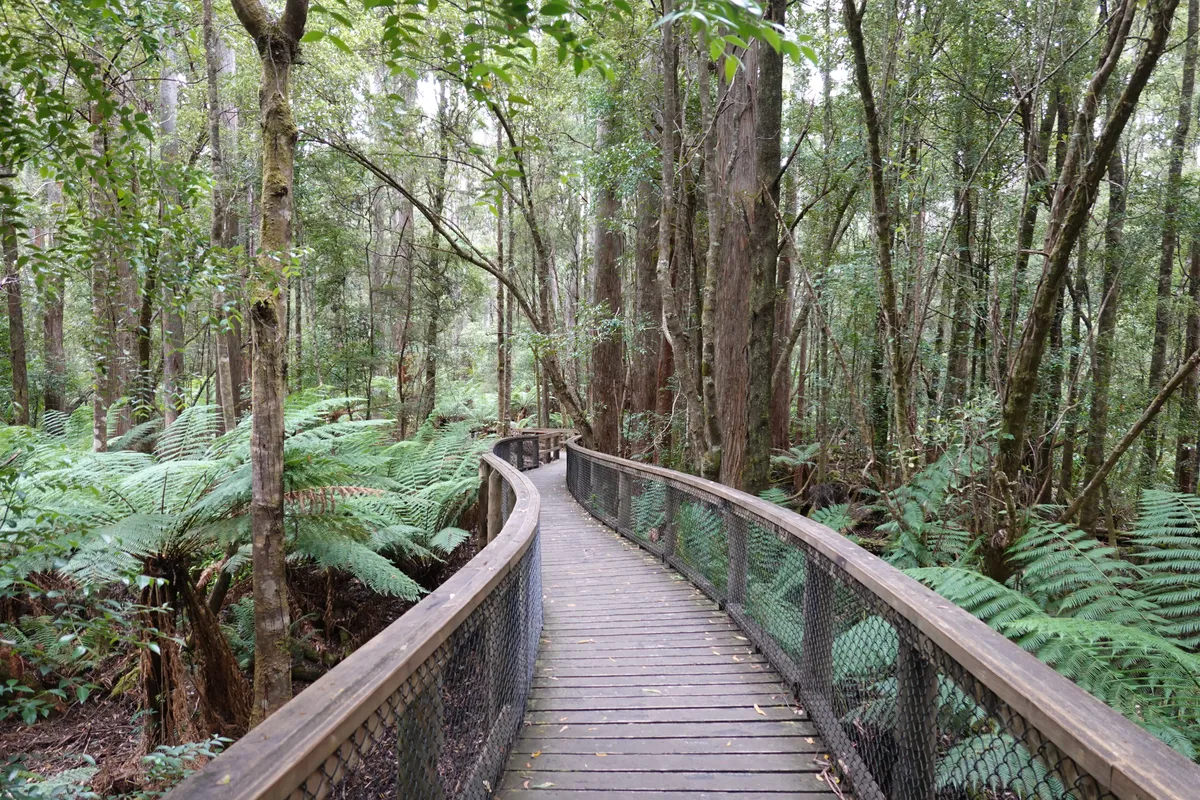

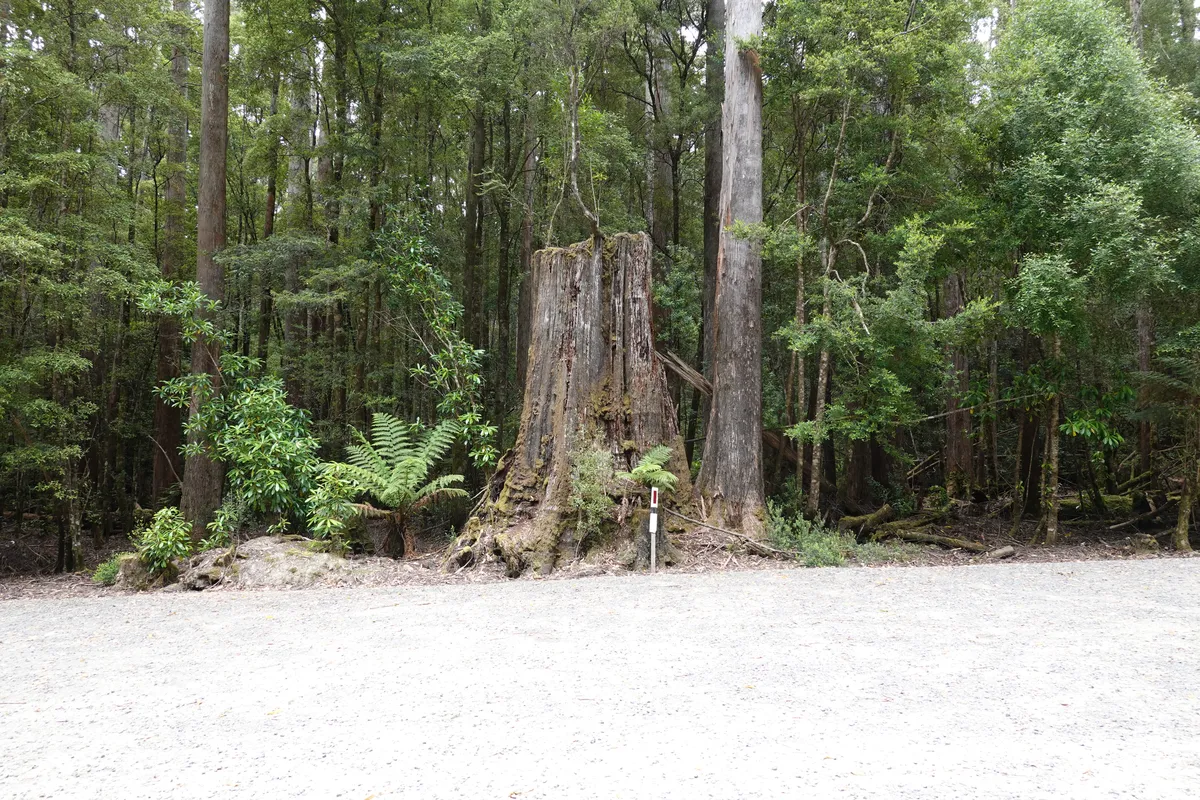

- Cost: AUD$24 (18+), AUD$12 (4-17) AUD$19.20 (Concession), AUD$60 (2 adults and 3 children)
- Duration: 45 minutes
- Timings: almost once per hour between 10 to 4 or 11 to 3, depending on season
- Reservations: Phone bookings used to be required but it appears to have changed to a first-come-first-serve basis at the visitor center, more here
- Website: https://parks.tas.gov.au/explore-our-parks/hastings-caves-state-reserve/hastings-caves-and-thermal-springs
Southport Hotel & Caravan Park
We ended the day at Southport Hotel & Caravan Park, conveniently located just 10 minutes away from Hastings Caves and Thermal Springs. This is a small private campground with a convenience store and restaurant on site. This was our last powered site of our campervan trip, as we didn’t manage to get a powered site on Bruny Island for 3 days. Toilets and facilities were good here.
- Cost: AUD$10 per person per night for unpowered site. AUD$32 for a powered site for 2 person, $5 per additional person per night. Free for children under 5.
- Parking: Level and some paved.
- Facilities: Camp kitchen and coin-operated laundry. On site convenience store and restaurant.
- Hygeine: Basic but clean toilets. Hot showers included.
- Reservations: Call 03 6298 3144 or email [email protected]
- Website: https://www.southportcaravanpark.com.au/
Day 7 – Southport Jetty
Just to push it a little further, we drove down to Southport Jetty to check out one of Australia’s southernmost settlements. This would be the furthest down south we would get to on the Tasmanian main island.



Wished we could stay longer or if we could hang out at one of the cafes had they been open, but we had to leave for Hobart to get our window fixed. Time for the long drive back up north, before wrapping up our campervan adventure at Bruny Island!
![[Australia] Tasmania Road Trip Part 3 - Cradle Mountain Cradle Mountain.](https://aaronteoh.com/wp-content/uploads/2023/09/DSC03205-1200x800-1-150x150.webp)
![[Australia] Melbourne 3-day itinerary for an awesome first visit DSC01353-1200×800-PIL](https://aaronteoh.com/wp-content/uploads/2022/10/DSC01353-1200x800-PIL-150x150.webp)
![[Australia] Great Ocean Road Part 1: Queenscliff to Johanna and Great Otway National Park DSC02029-1200×800-PIL](https://aaronteoh.com/wp-content/uploads/2022/09/DSC02029-1200x800-PIL-150x150.jpg)
![[Australia] Tasmania Road Trip Part 2 – North East/ North DSC01943-1200×800](https://aaronteoh.com/wp-content/uploads/2023/09/DSC01943-1200x800-1-150x150.webp)
